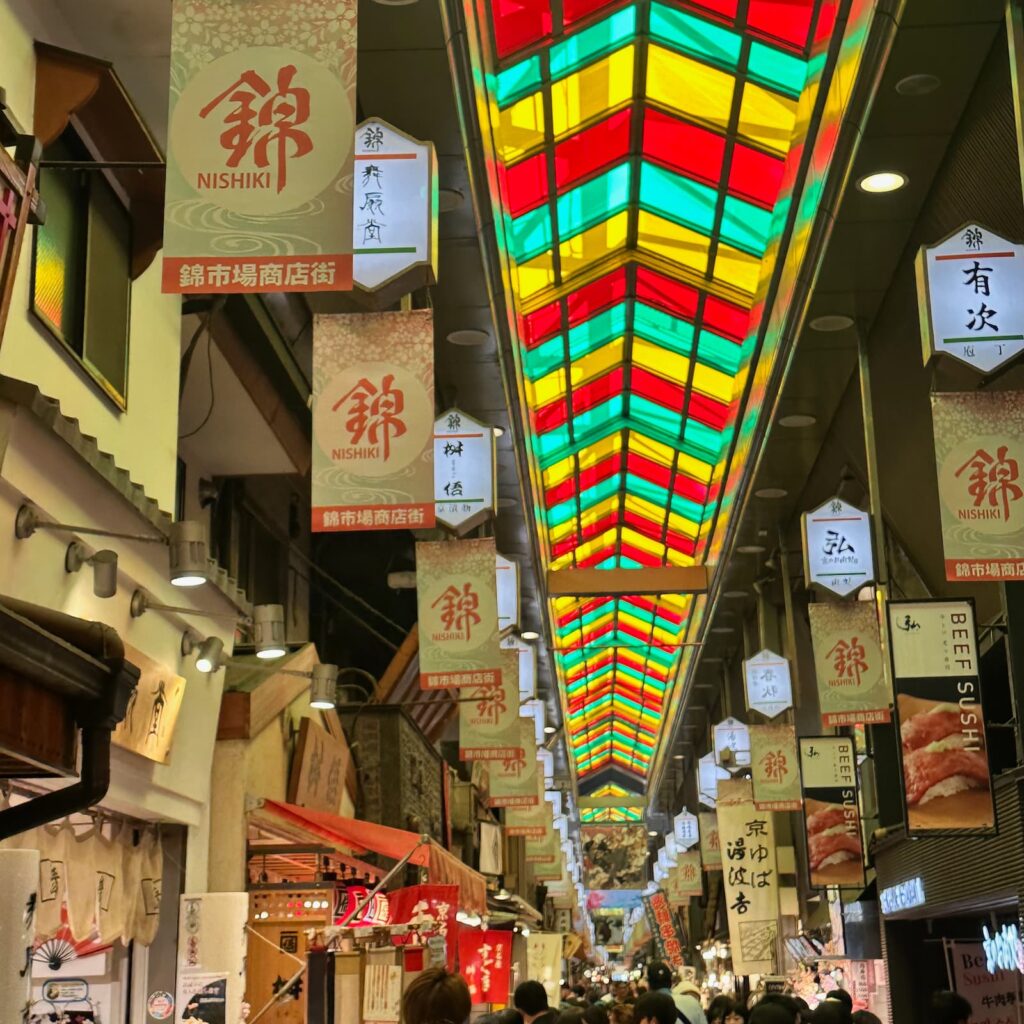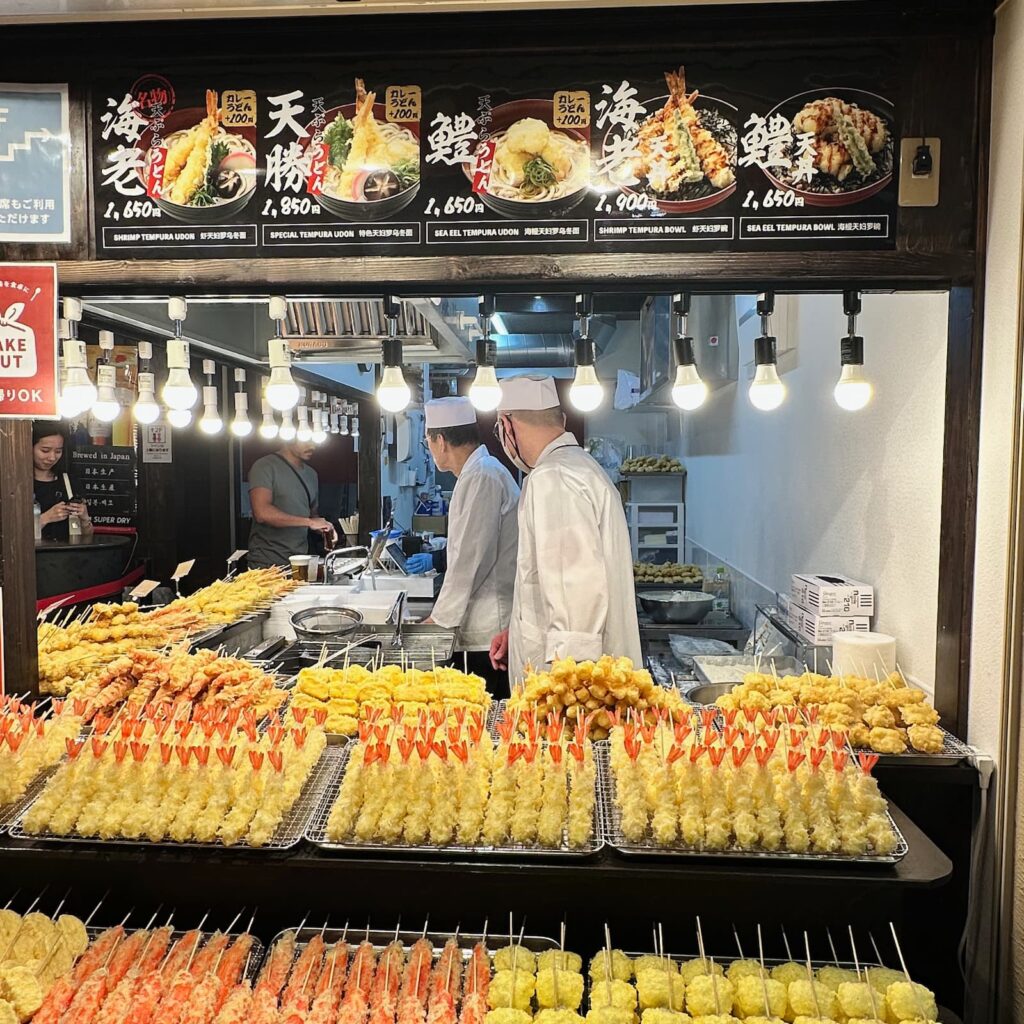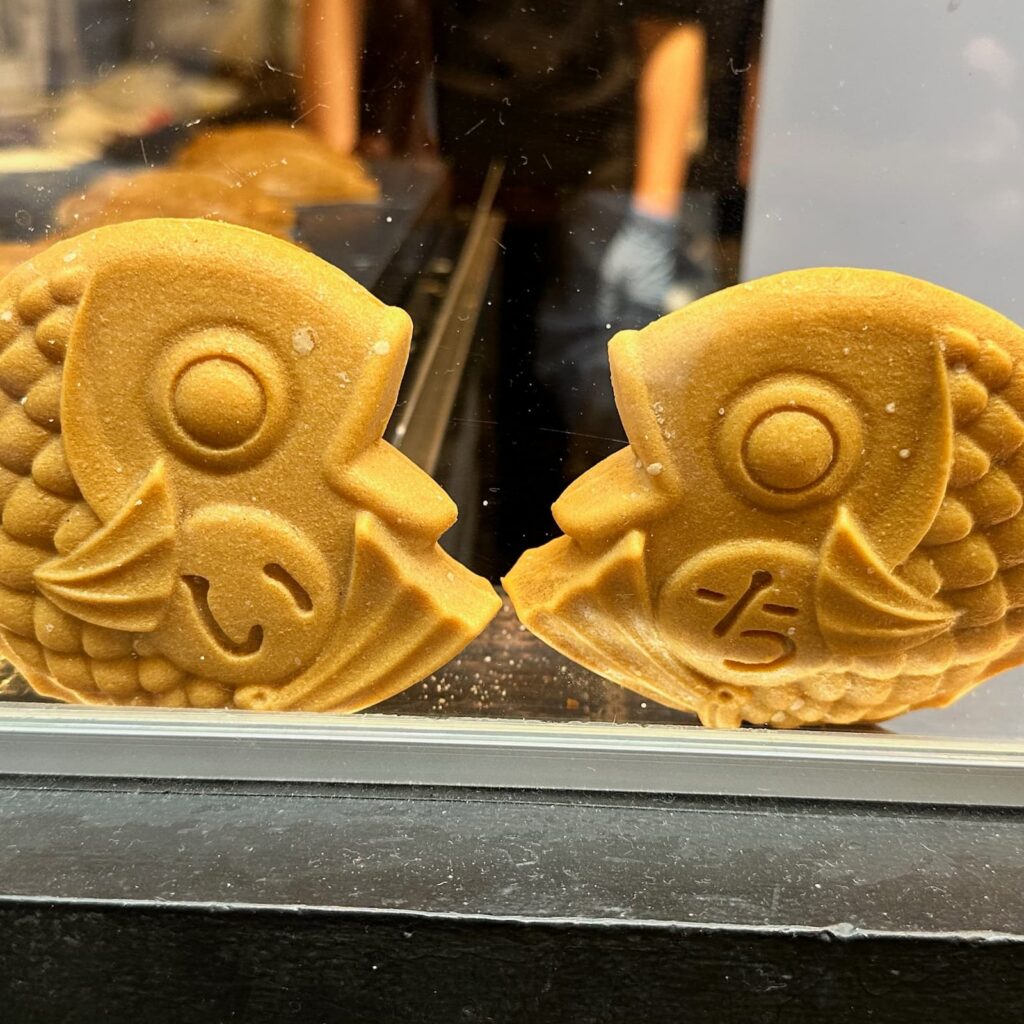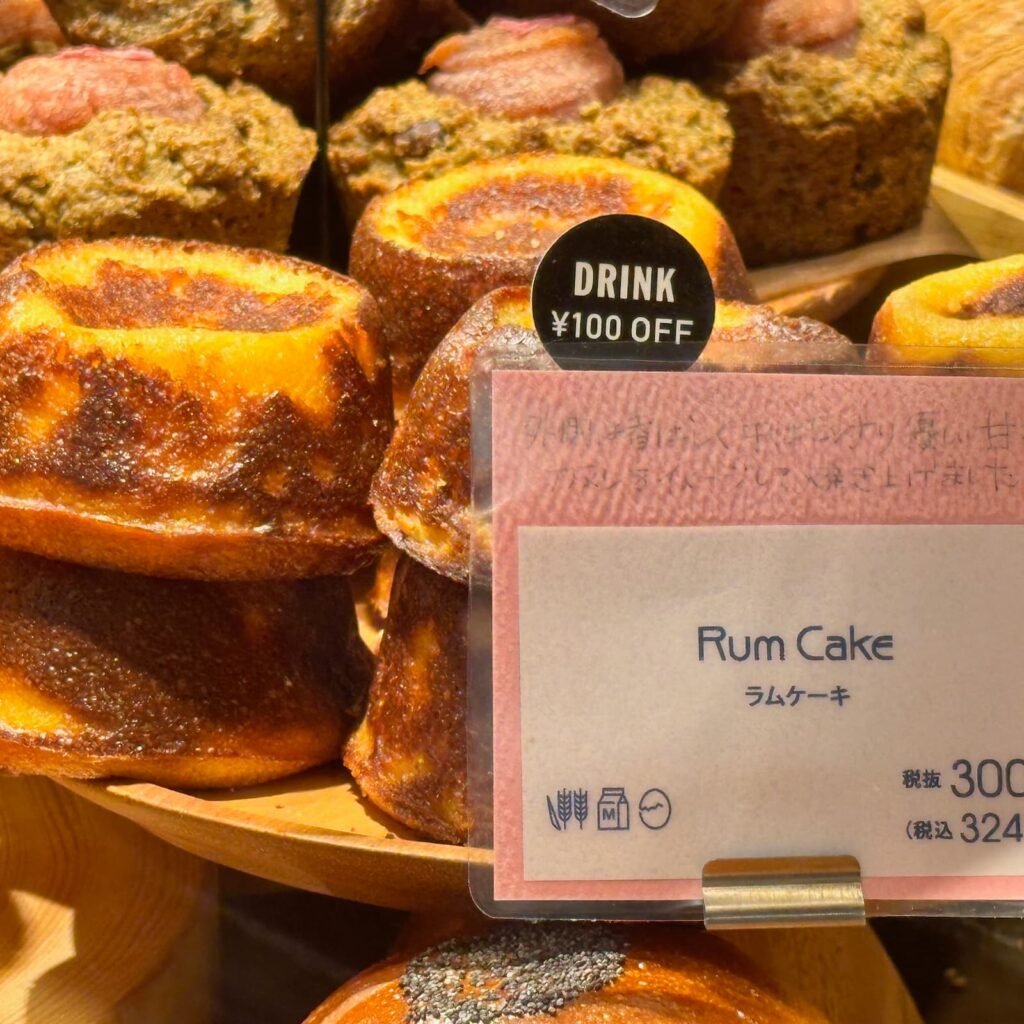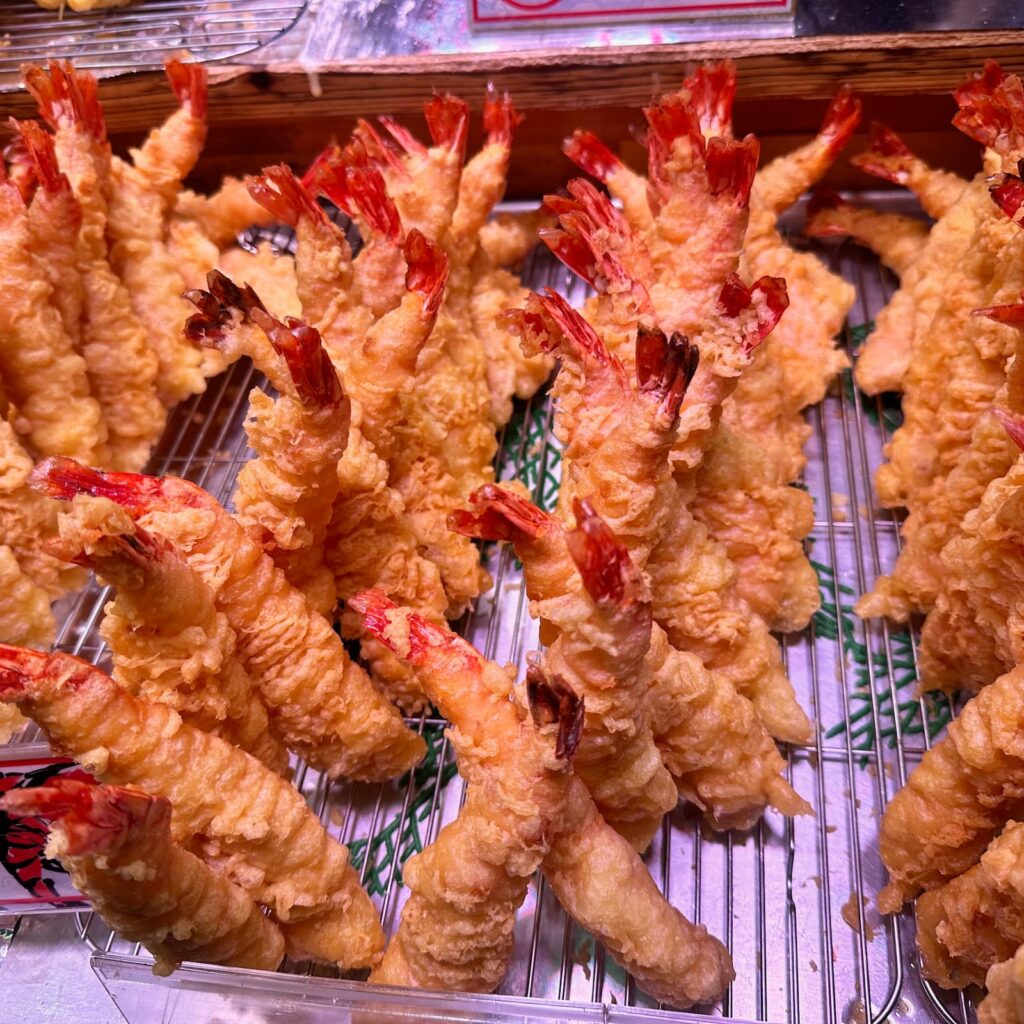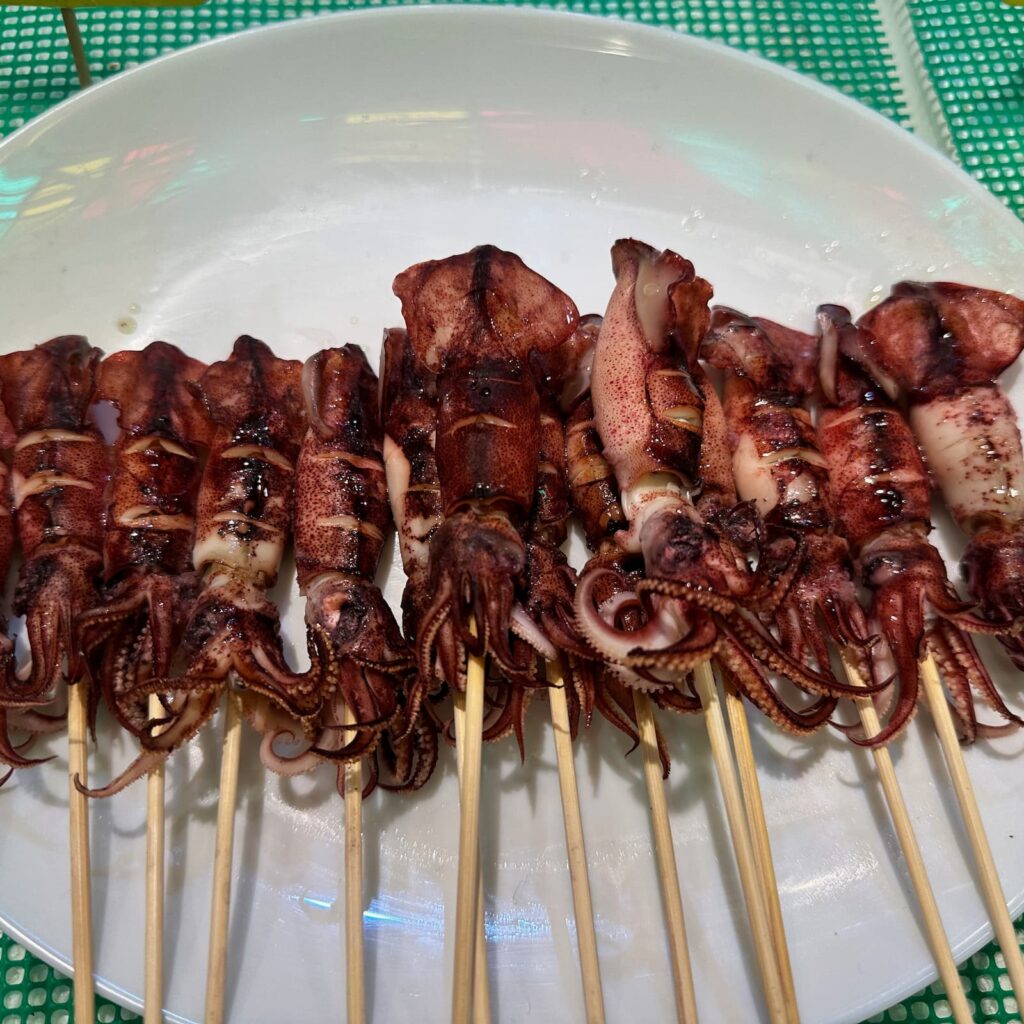Japan – March-April 2024
This was a fabulous three-week trip to Japan during cherry blossom season – a beautiful time to visit.
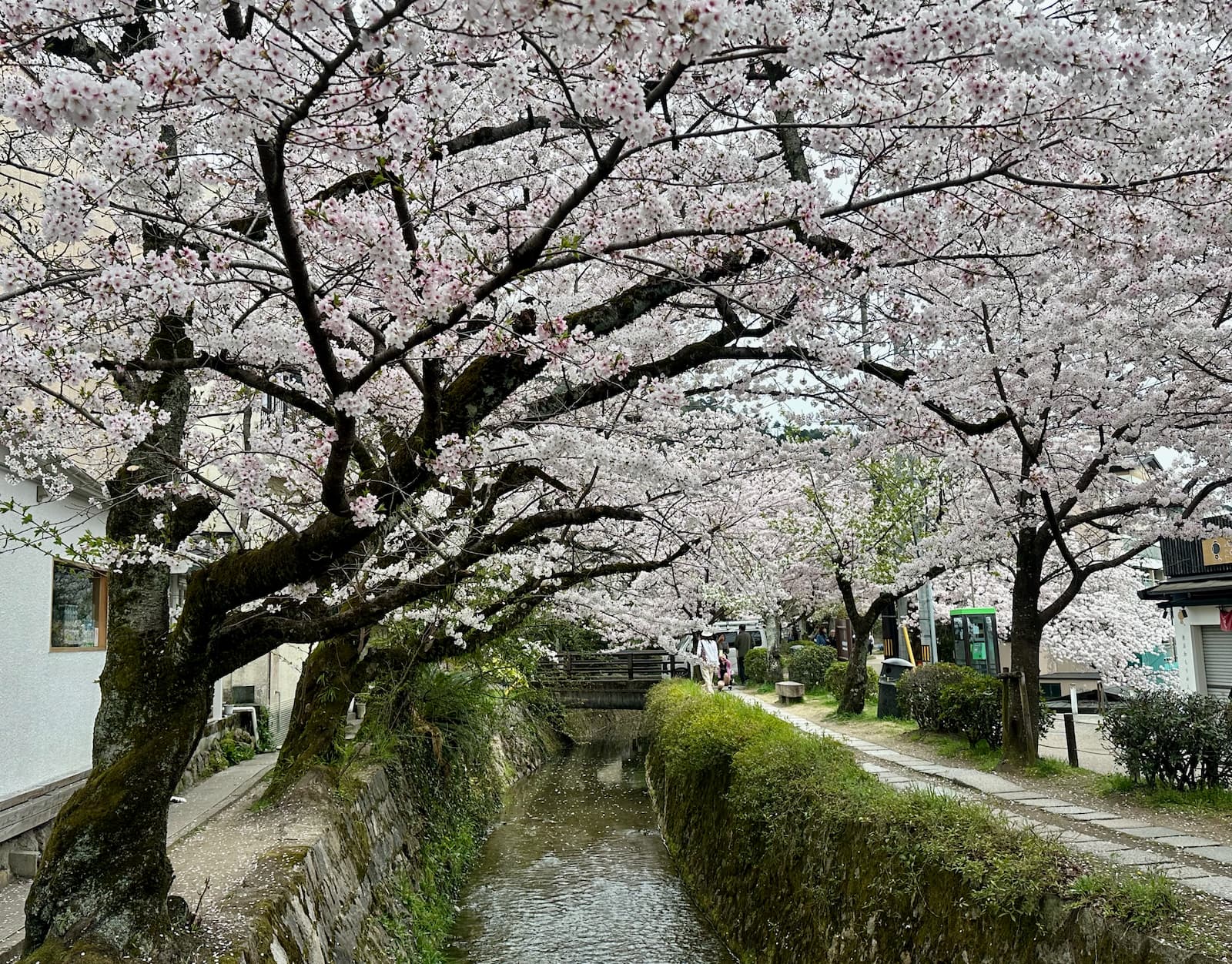
Cherry blossoms along the Philosopher’s Path, Kyoto
Take a look at our slideshow of Japan.
ITINERARY
Tokyo – Matsumoto – Takayama – Gokayama Villages – Hiroshima – Uno Port (Teshima Island & Naoshima Island) – Okayama – Kyoto – Tokyo
We flew Sydney to Tokyo on ANA – an easy daytime flight of 9 hours. The time difference between the two cities is only 2 hours (during daylight savings) – so no jetlag!
Arriving at Narita Airport, Terminal 2, we went through immigration and customs quickly, and our first stop was to the Welcome Center – a one-stop store where we collected our pre-booked Japan Rail passes, organised a Sim card and picked up some tourist information.
Whilst the train is a good way to get into downtown Tokyo from the airport, we elected to take a taxi to our accommodation in Ginza (cost Yen 73 or about A$73) – a 20-minute trip.
TOKYO
Tokyo is a mega city with so much to see and do. The population of Japan is 125.1 million and 40% live in Tokyo. It warrants quite a few days to see the main sights – we stayed six nights and just scratched the surface!
The city is divided into 23 wards and after much research we decided which wards, and highlights in each ward, we wanted to see. We also did a couple of guided walking tours.
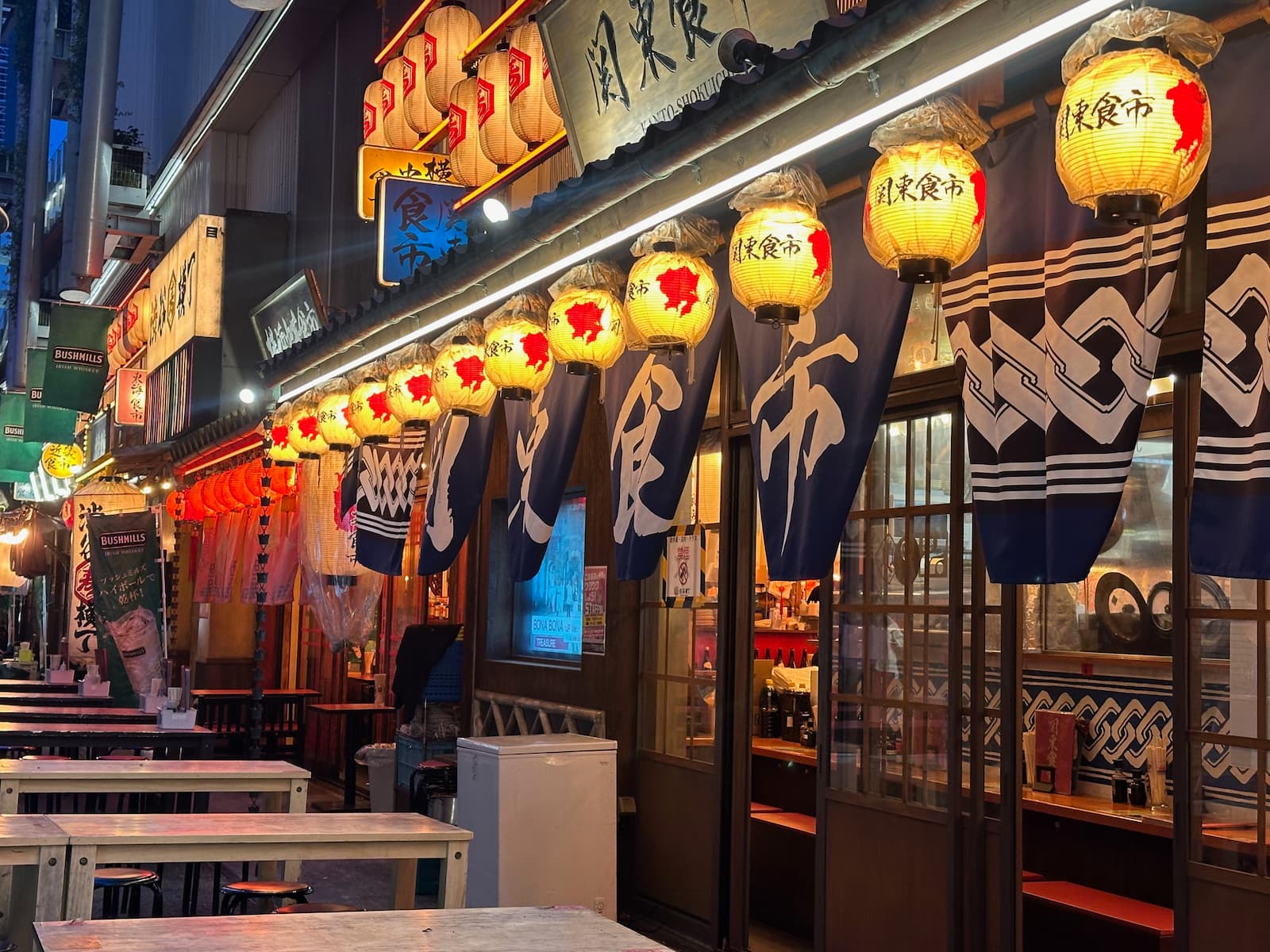
Restaurants in Shibuya
Day 1: Ginza, Akihabara & Ueno
Ginza
We found Ginza a good location to stay as it was quite central, had good access to metro lines, was a little quieter than some other areas and we loved our hotel – Shippo-no-Yu-Dormy Inn Premium Ginza.
There are not so many tourist sites in Ginza – the area is mostly about shopping. We recommend the following:
- Chuo-dori is the main shopping street of Ginza – it is lined with designer shops
- Uniqlo flagship store is on Chuo-dori
- Mitsukoshi department store food hall (the oldest dept store in Tokyo)
- Department 6 shopping complex
- Ippudo (ramen) for lunch – small, usually a queue but quick turnover
Akihabara & Ueno
We took the 10am Original Tokyo Walking Tour (3 hours), meeting in Akihabara.
This tour took us to:
- Akihabara district
- Confucius temple
- Kanda Myojin shrine
- Candy Lane, Ueno
- Ueno Park
Akihabara district was originally a vegetable market, but today it is the centre of contemporary culture – electronic stores, video games, anime, m”attachment_9143″ align=”aligncenter” width=”1600″]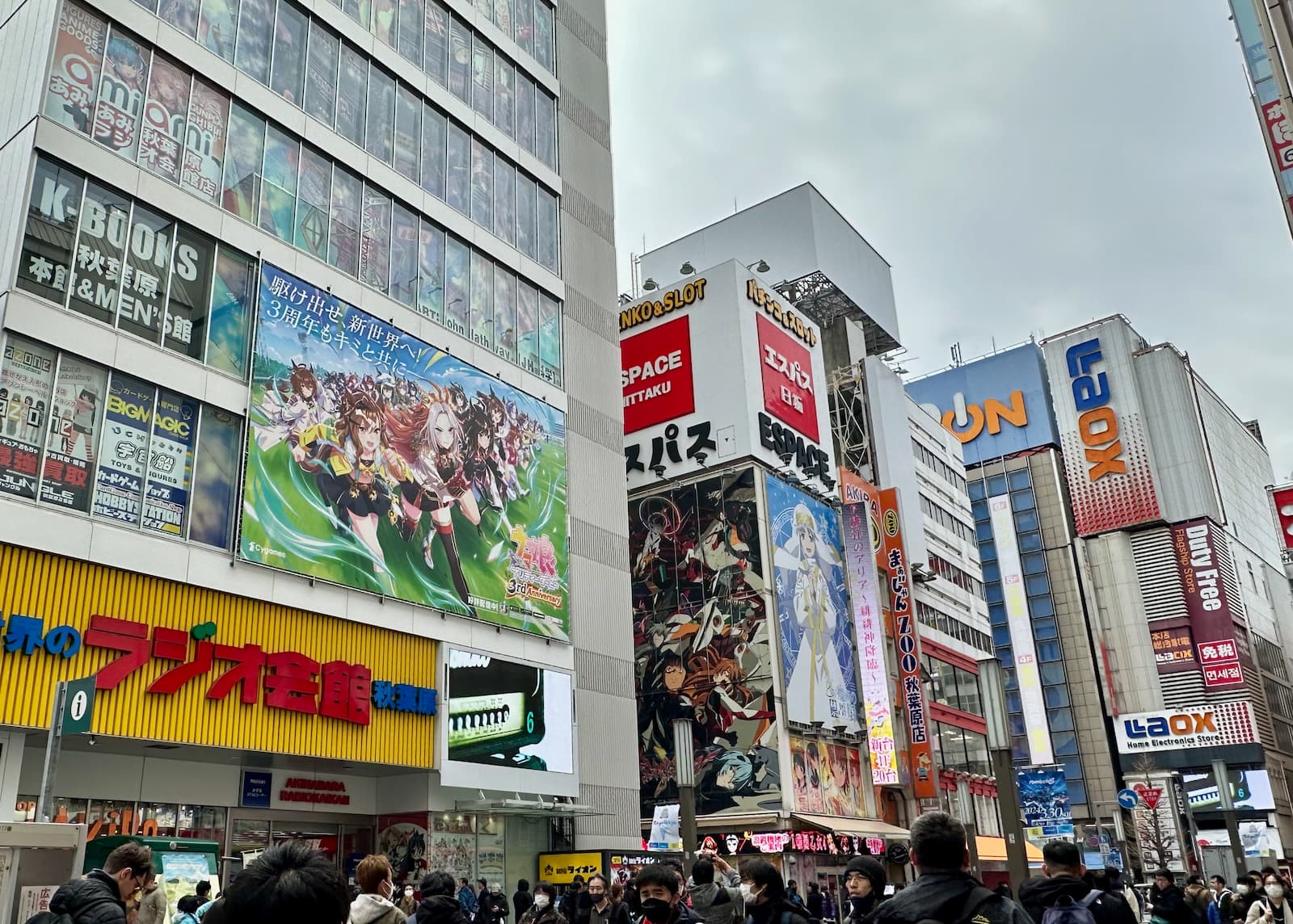
Day 2: Asakusa & TeamLab Borderless
Asakusa
In the morning we took the 10am Asakusa Free Walking Tour (2 hours). We had a wonderful guide (Reiko) who took us through the Senso-ji temple and surrounding streets:
- Thunder Gate of Senso-ji temple.
- The street from the Thunder Gate to the Senso-ji temple is the oldest shopping street in Japan.
- We learnt about the history of the Senso-ji temple.
- 5-storey pagoda.
- We heard about the rituals when visiting the temple.
- We learnt about Japanese culture.
- We walked through the surrounding streets full of shops, and eateries selling soba (buckwheat noodes), sushi and tempura. The area is particularly known for kitchen ware.
- Views of Sky Tree and Asahi Brewery building.
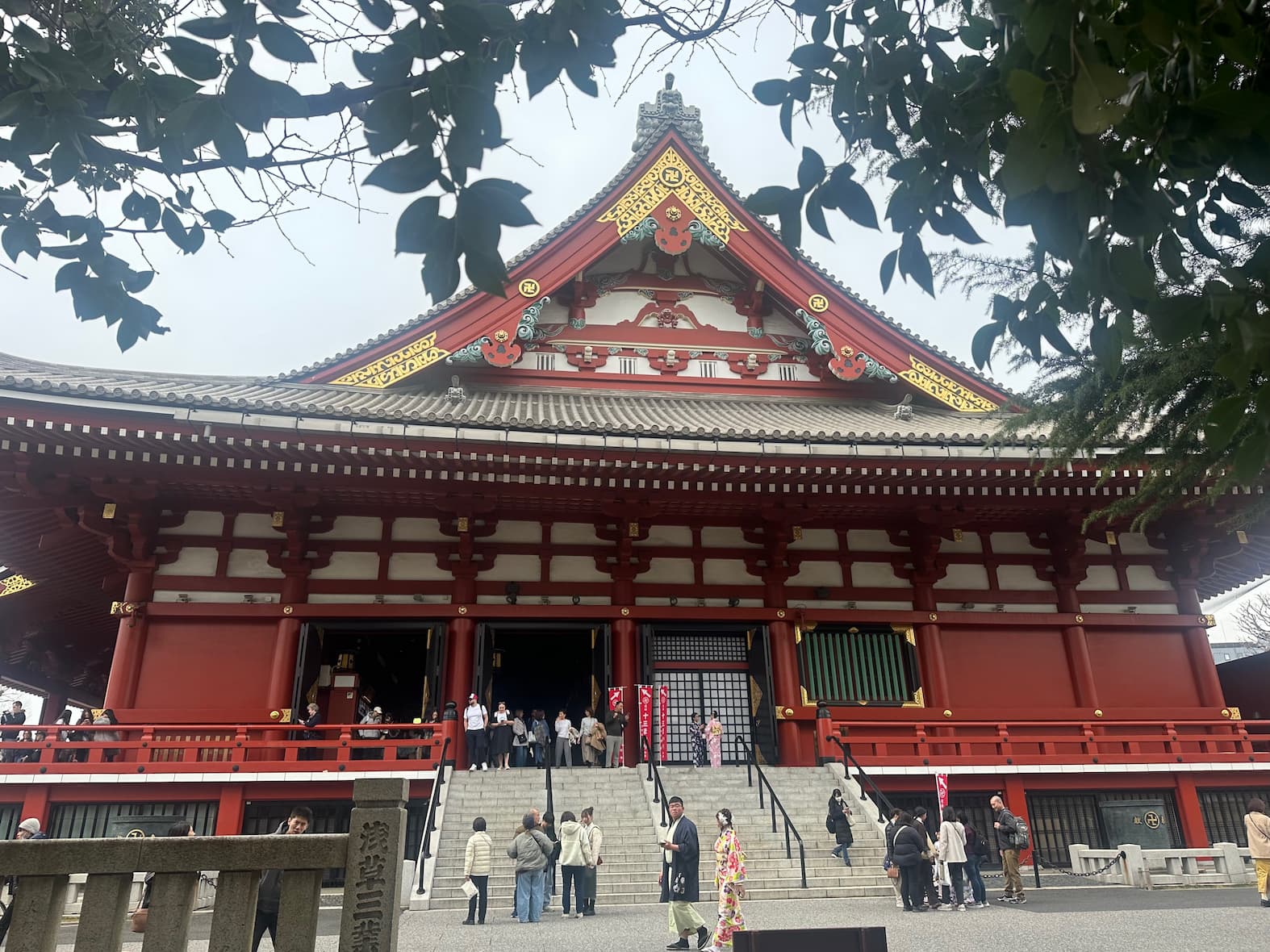
Asakusa Shrine, Tokyo
We did this tour on a Sunday and the temple and surrounding streets were very, very crowded. Perhaps choose another day for a less crowded experience.
We ate lunch at one of the oldest tempura restaurants in the area – San-Sada, sitting Japanese style.
If you like sushi, another restaurant nearby, recommended by our guide, is Sushi Zamai.
TeamLab: Borderless
In the afternoon, we had booked a 4pm time slot to visit the TeamLab Borderless museum. This is an amazing digital art experience – we loved it. Visitors walk from room to room and are immersed in the digital projections. There is another TeamLab museum in Tokyo – TeamLab Planets – which is a similar experience. Which is better? One of our friends has been to both and they liked TeamLab Planets! It is recommended to book tickets in advance as both museums are so popular. Tickets can be purchased two months in advance.
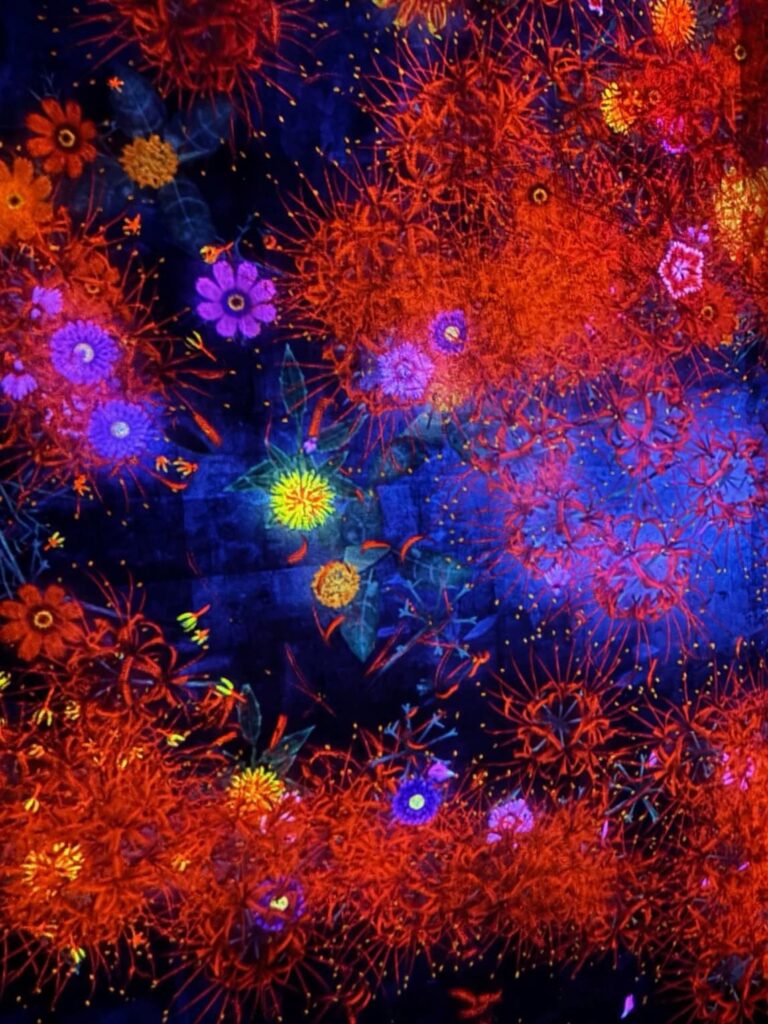
TeamLab Borderless Digital Museum, Tokyo
Day 3: Hakone Day Trip
Hakone is a beautiful area for hot springs and views of Mount Fuji. It is a popular day trip from Tokyo. There are many ways to do this day trip and it can be quite confusing. If it all gets too complicated, there are several one-day bus tours to Hakone/Mt Fuji catering to a variety of interests.
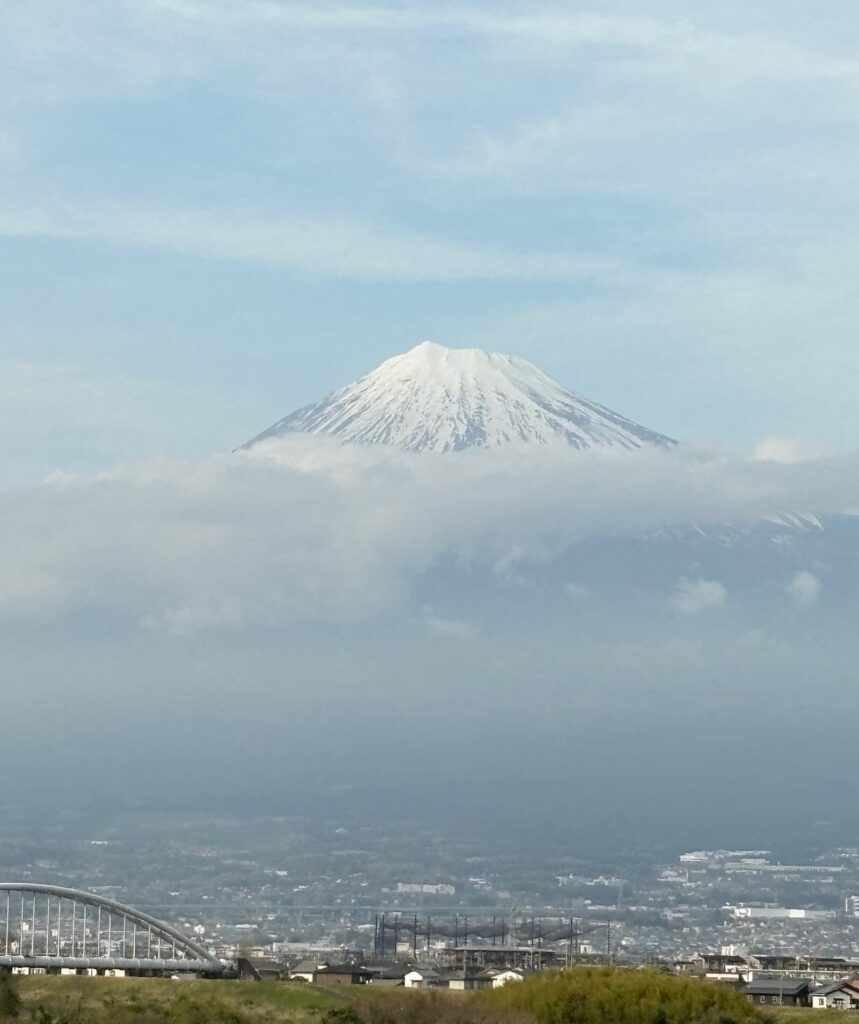
People travel to Hakone for views of Mount Fuji
For rail and bus access to Hakone a good reference point is the Japan Guide website – Hakone: Getting There and Around.
Because we had a JR Pass we used that to travel by train from Tokyo Station to Hakone. The main station at Hakone is actually called Hakone-Yumoto Station.
A popular DIY route, when on a clear day you will get good views of Mt Fuji, is as follows:
- Take a train from Tokyo Station to Odawara Station on the Tok”https://www.odakyu.jp/english/passes/hakone/” target=”_blank” rel=”noopener”>Hakone Free Pass
- From Hakone-Yumoto take a bus to Motohakone-Ko and walk to see the Hahone-Jinja Gate.
- From Motohakone-Ko take the Hakone Sightseeing Cruise (on a replica pirate ship) on Lake Ashi to Togendai. Views of Mt Fuji from the cruise.
- From Togendai Station take the Hakone Ropeway for a scenic 30-minute ride (4kms) to Sounzan (views of volcanic landscape and possibly Mt Fuji on a clear day).
- From Sounzan take the Hakone Tozan Cable Car for a 10 minute ride (1.2kms) to Gora.
- At Gora decide if you want to go to the Hakone Open-Air Museum (10-15 minute walk) or Pola Museum of Art (by bus) or return to Odawara Station on the Hakone Tozan Railway then onto Tokyo.
We travelled independently to Hakone. Because we had a JR Pass, we took the Tok”large” columns=”2″ ids=”9147,9149,9150,9151″]
Pola Museum of Art
It was a great way to spend a rainy day – both of these galleries are highly recommended.
Day 4: Daikanyama & Shibuya
Daikanyama
Daikanyama is a trendy neighbourhood of Tokyo with cool boutiques, cafes and clubs. Explore the charming backstreets to find all kinds of interesting places.
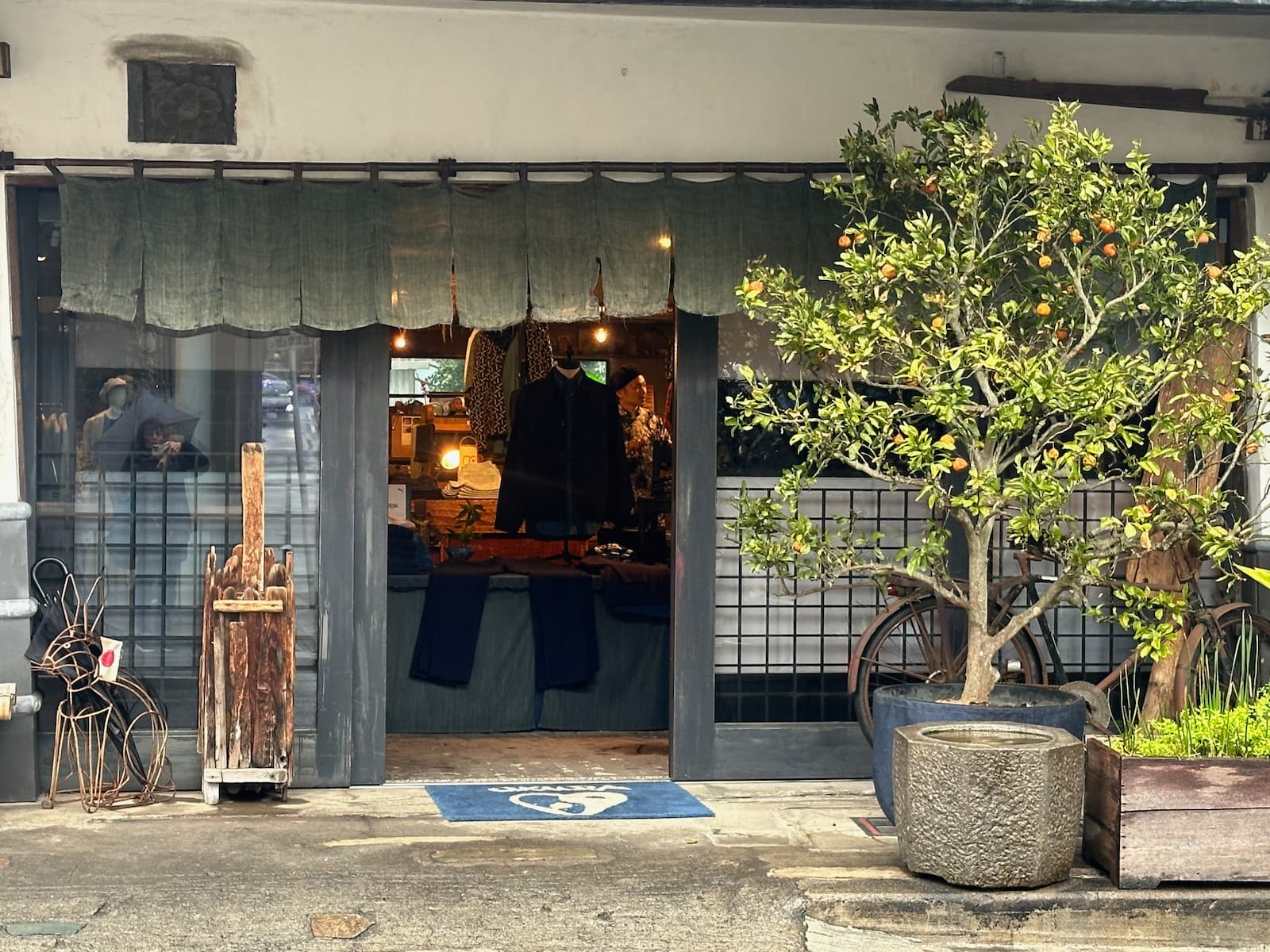
Boutique in Daikanyama, Tokyo
What we loved in this area:
- At Nakameguro Station – The City Bakery for delicious pastries.
- Asakusa Family House – an historic Japanese-style home open to the public.
- Daikanyama Tsutaya Bookstore (T-Site) – more than a bookstore, it is a cultural hub renowned for its award-winning architecture, wide selection of books, art and music, cafes, boutiques, etc.
- Ivy Place – a great restaurant for lunch.
- Starbucks Cafe – integrated with the Tsutaya Bookstore, home to upmarket Princi Italian Bakery.
- Number Sugar – an elegant sweet shop selling natural caramel sweets. The different flavours are numbered from 1 to 12.
- Blue Bottle Cafe – high quality coffee in a serene, minimalist environment.
- Log Road Complex – features a brewery, cafe and a few shops – interesting and relaxing.
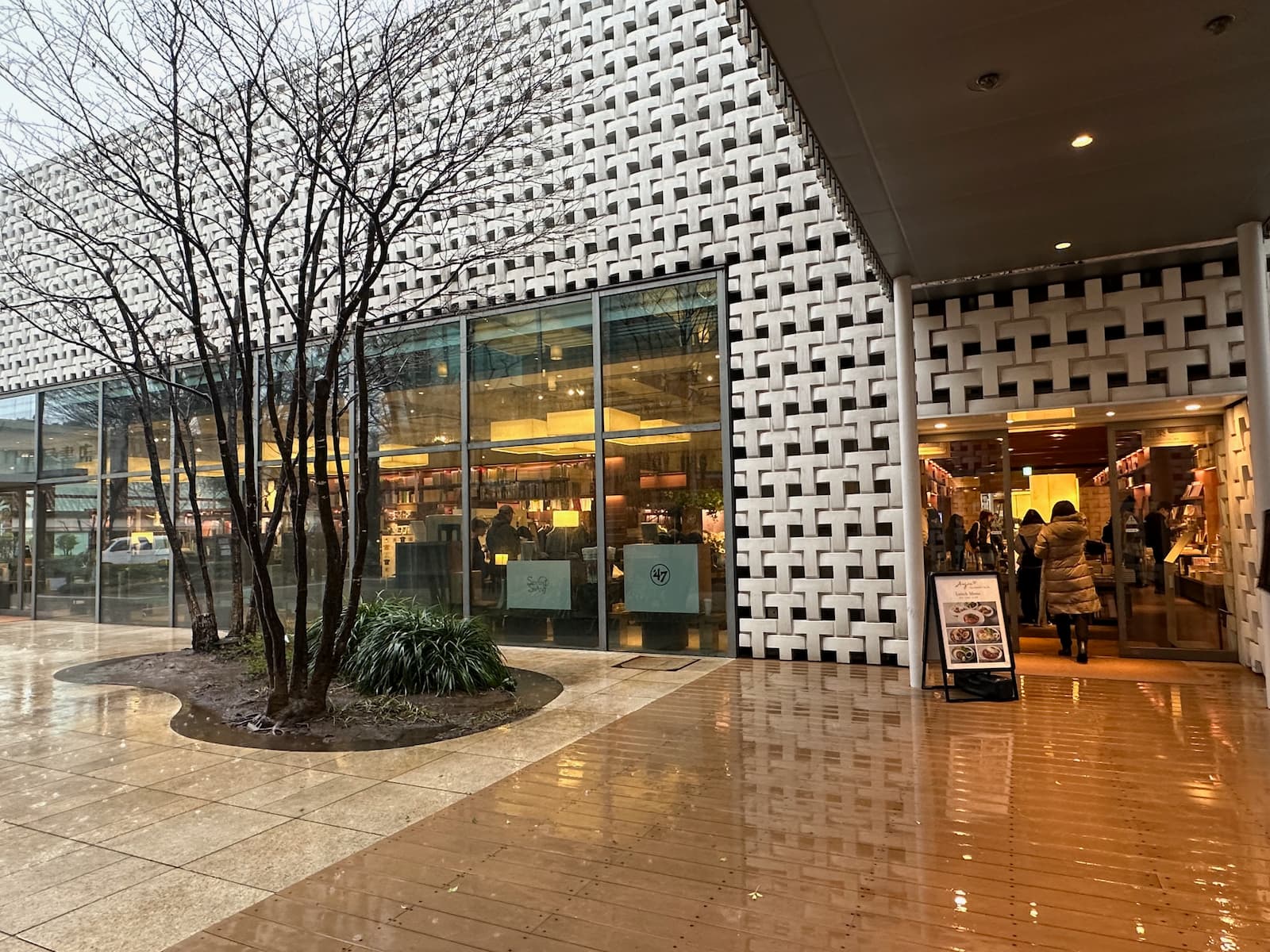
Daikanyama T-site
Shibuya
A complete change of pace from peaceful Daikanyama, Shibuya is one of Tokyo’s most vibrant and iconic districts – nightlife, neon lights, shopping, cultural experiences, tranquil green spaces – Shibuya has it all.
Here are some top recommendations for what to see and do in Shibuya:
Shibuya Scramble Crossing
One of the busiest and most photographed pedestrian crossings in the world! To get a birds-eye view of the crossing we p”attachment_9167″ align=”aligncenter” width=”1600″]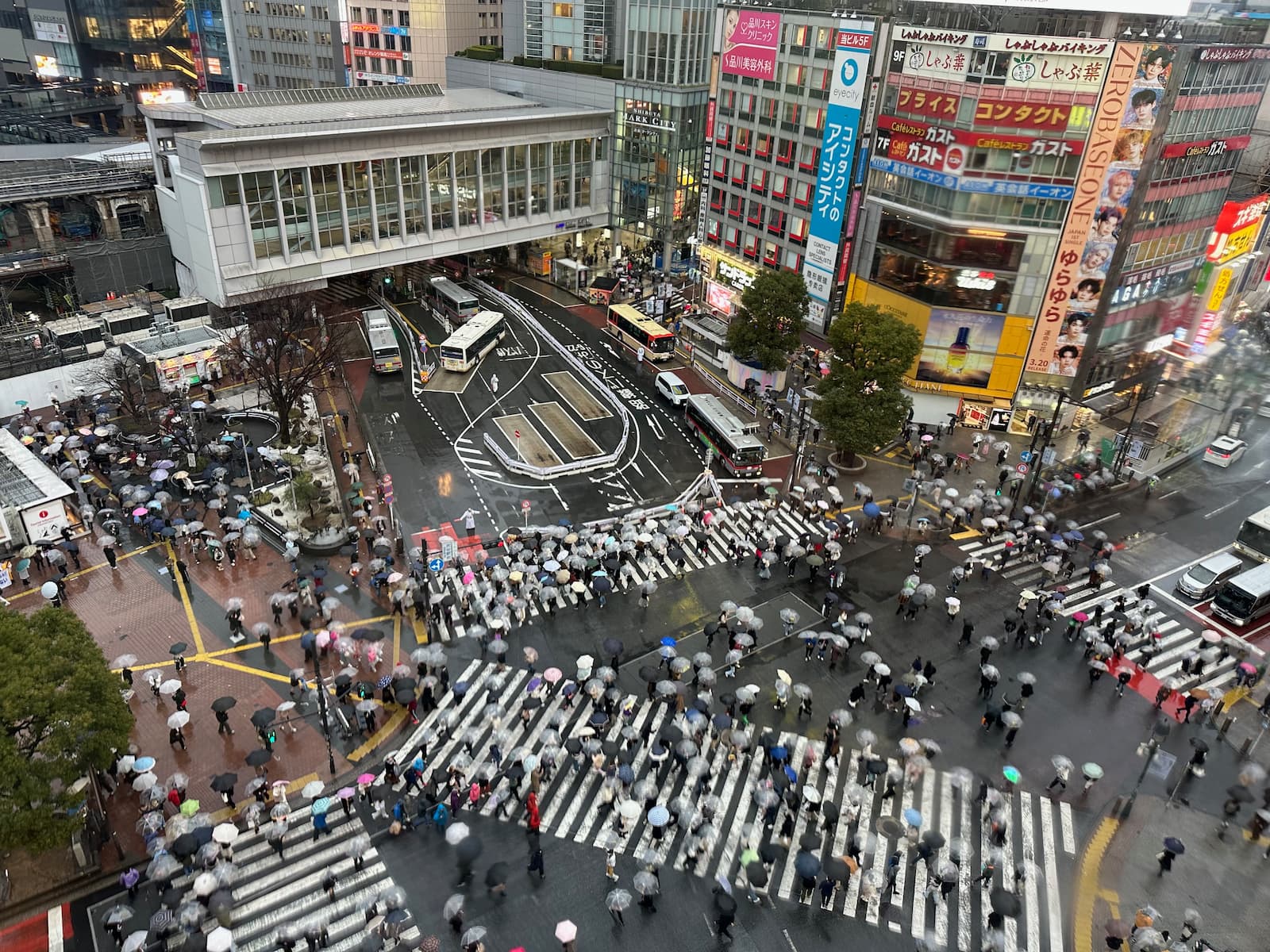
Shibuya Center-Gai
Shibuya Center-Gai is a lively pedestrian street packed with shops, restaurants, cafes and entertainment. It is particularly popular at night.
Shibuya Nonbei Yokocho
Shibuya Nonbei Yokocho is a maze of historic, lantern-lit alleyways lined with tiny Japanese bars and restaurants. This atmospheric area offers a nostalgic glimpse of postwar Tokyo and an authentic Japanese drinking and dining experience.
Cat Street
Cat Street is a trendy street that runs between Shibuya and Harajuku. It is renowned for its vibrant street fashion, boutiques, stylish cafes and relaxed atmosphere. It is mostly pedestrianised.
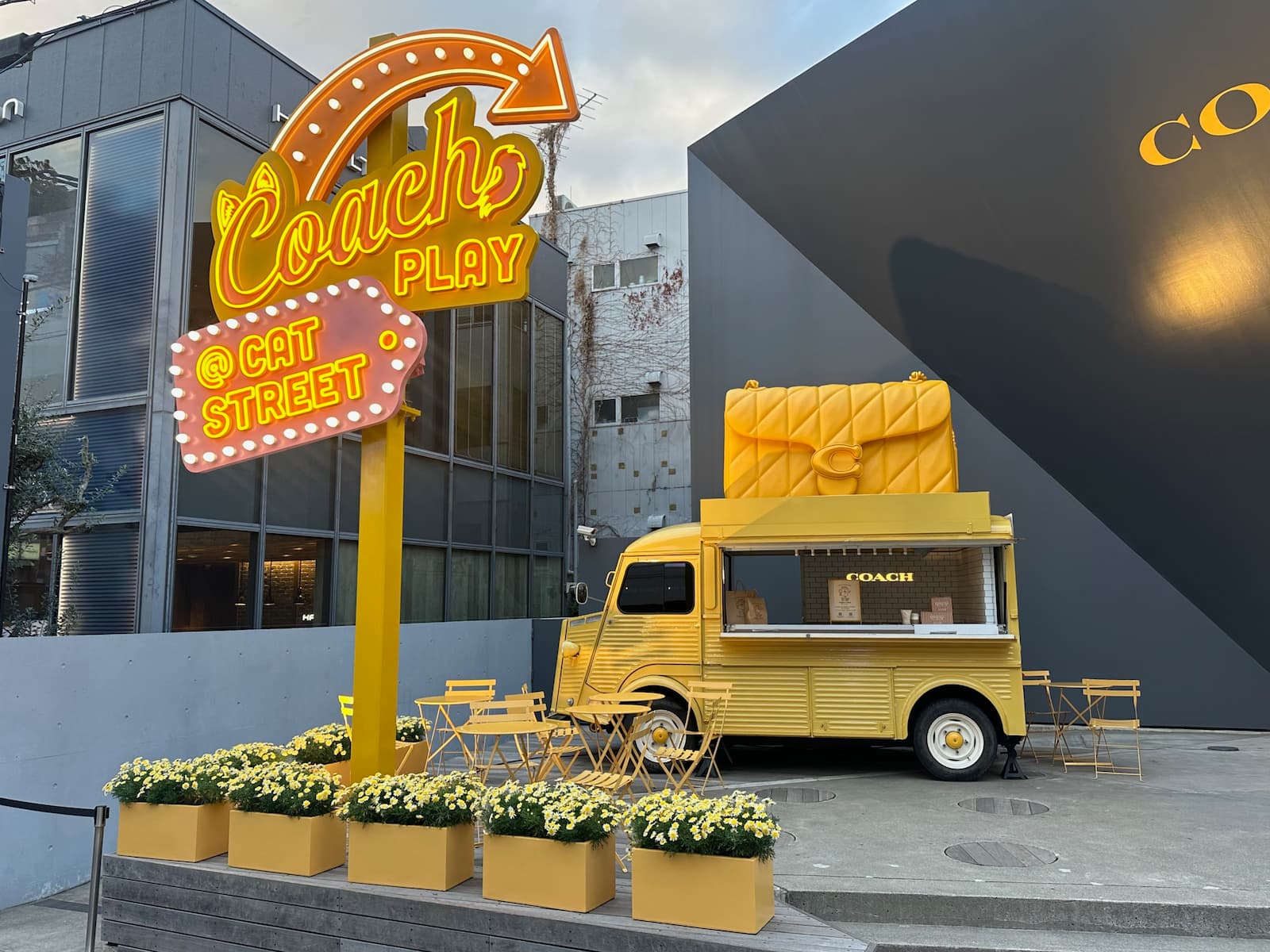
Coach on Cat Street, Shibuya
Day 5 – Shibuya again
There is much to see in Shibuya so we returned to see:
- Tokyo Skytree (in Sumida) – tallest structure in Japan, can buy tickets to one or both observations decks on a timed entry basis – recommend buying tickets in advance as no tickets available at the time of our visit.
- Meiji Jingu – one of Japan’s most popular Shinto shrines.
- Yoyogi Park – a lovely public park, popular on weekends with street performers.
- Omote-Sando Avenue – a fashionable, tree-lined boulevard known for its innovative architecture and high-end shopping.
- Cat Street – trendy street.
- Grandfathers Bar – cozy bar, 1970s retro atmosphere, listen to music from the owner’s vinyl record collection.
- Jomon Restaurant Shibuya – delicious yakitori (skewers of grilled meat and vegetables).
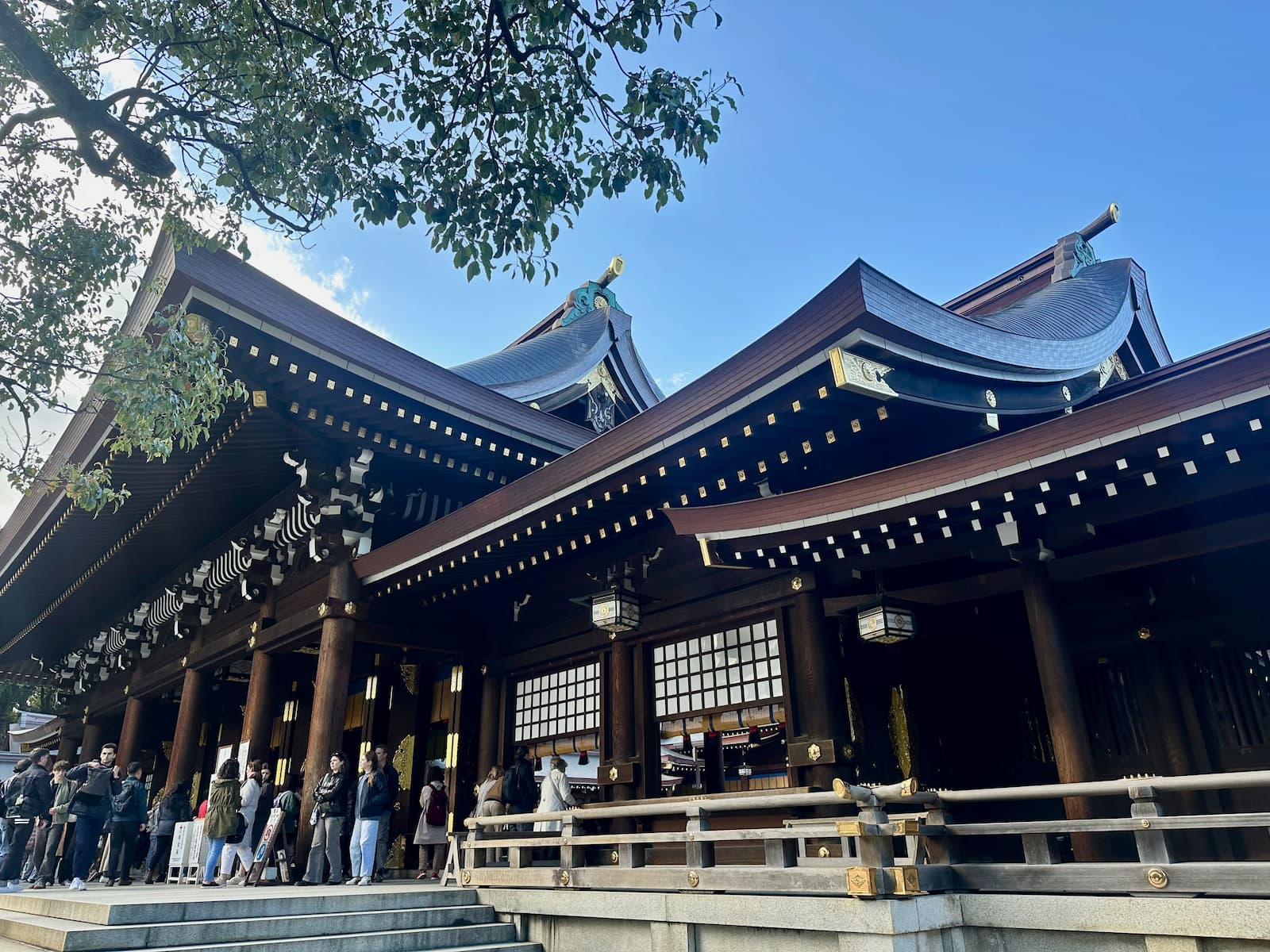
Meiji Jingu, Tokyo
TOKYO TO MATSUMOTO
We took the Shinkansen train from Tokyo to Nagano and changed to a regular train to Matsumoto. The trip was covered by the JAL Pass and took about 2 hours 45 minutes.
Matsumoto is a city in Nagano Prefecture and is a gateway to the Japanese Alps. The city dates back to the 4th Century and is known for its beautiful castle, historic streets and birthplace of artist Yayoi Kusama.

Matsumoto Castle
On arrival at Matsumoto station there is an excellent Tourist Information centre as you exit the platform. We picked up some maps and useful information.
It was a short walk from the station to our hotel – Onyado Nono Matsumoto Natural Hot Spring, Matsumoto.
Recommendations in Matsumoto:
- Matsumoto Castle – there are only 12 original castles left in Japan, 5 of them are National Treasures and Masumoto Castle is one of those National Treasures. It is a very beautiful timber castle and worth visiting.
- Matsumoto Museum of Art – highlight is the Yayoi Kusama exhibition ‘The Place for My Soul’. The cafe at the gallery is very good.
- Ishii Miso Brewery – take a tour of this boutique miso brewery where miso is made using traditional methods. The miso is delicious (tasting is part of the tour), or just visit their small restaurant for lunch.
- Nakamachi – the historic merchant district.
- Nakamachi-dori – an attractive street with upmarket shops and galleries in old merchant storehouses called kura, with namako walls to protect the building from fire and water (namako is the white grid pattern on the walls).
- Visit the Nakamachi Kurassic-kan – a former sake brewery.
- Across the river is Nawate-dori (‘frog street’) – a pedestrianised street with eateries and shops.
- Lunch in Mi Do Ri shopping centre above the Matsumoto train station – a good value-for-money meal at Midori on the 4th floor – delicious lunch special of hot soba and tempura vegetables and rice.
- Dinner at the food hall under the Alpico Plaza Hotel – a few minutes walk from our hotel towards the station. There are a dozen eateries to choose from. We had delicious yakatori (chicken skewers, meatball skewers) one evening and a Korean meal the next. Great atmosphere.
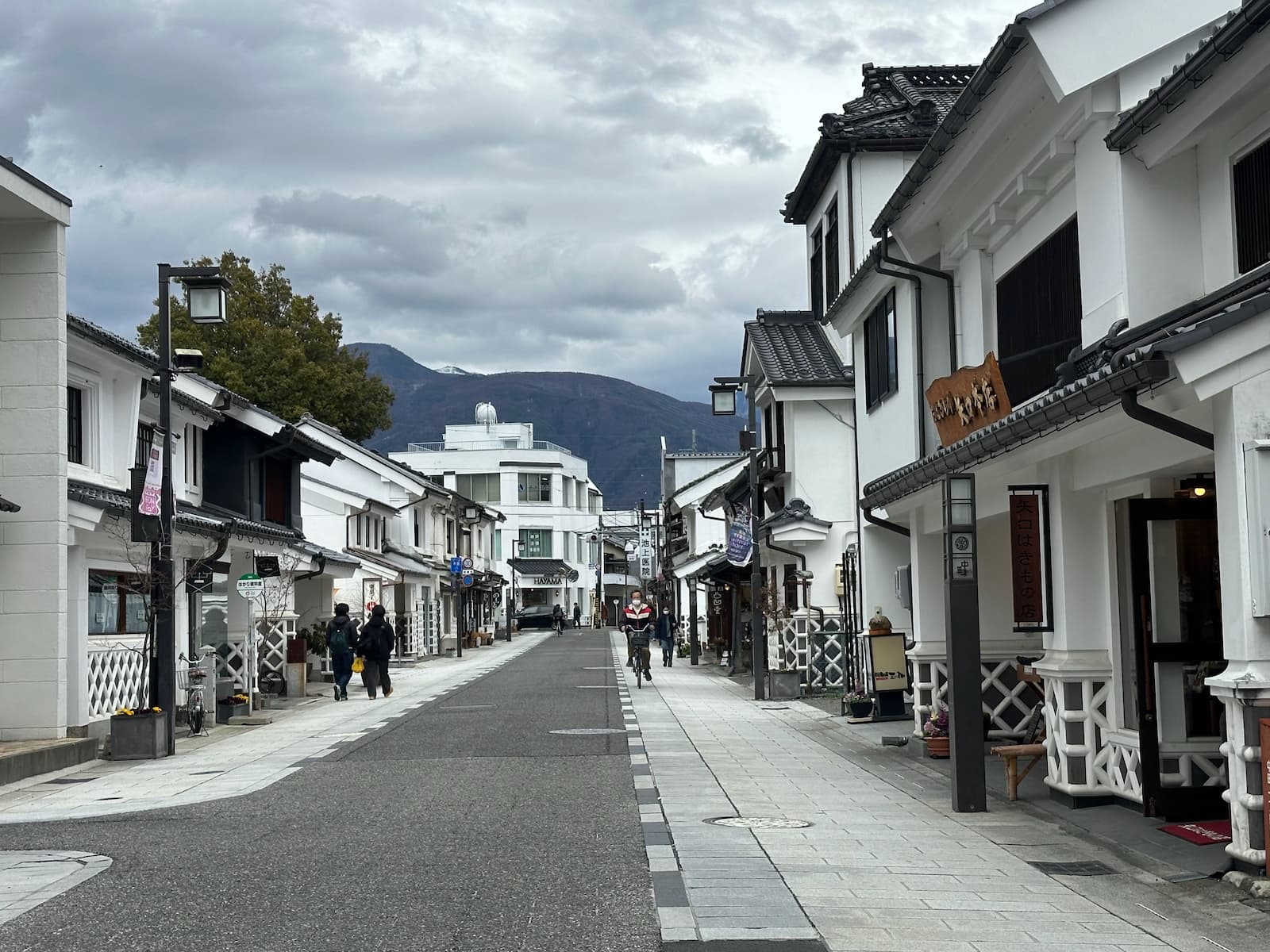
Nakamachi-Dori Street, Matsumoto
MATSUMOTO – NARAI JUKU – TAKAYAMA
We rented a car from Toyota Rent a Car in Matsumoto as we wanted to visit the post town of Narai Juku on the way to our next destination Takayama.
Narai Juku
From Matsumoto to the small town of Narai Juku was just under an hour’s drive. Narai Juku is an historic town that served as a rest stop along the Nakasendo Highway connecting Kyoto and Edo (Tokyo) during the Edo Period (1603-1868). People travelled by foot in those days and post station towns such as Narai Juku provided accommodation and meals.
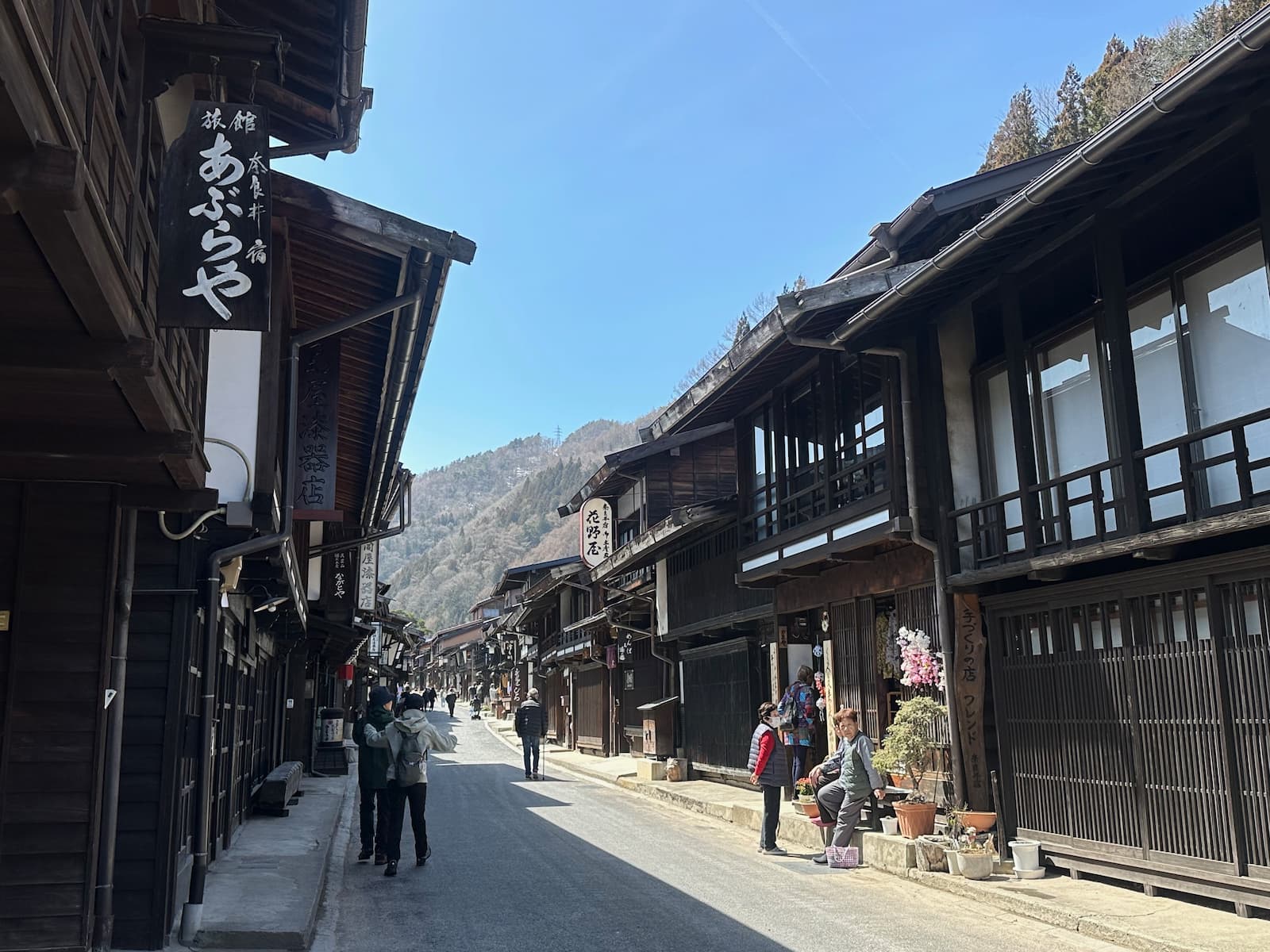
Narai-Juku main street
The main street, which starts in front of Narai Station, features beautifully preserved Edo period timber houses and is a Cultural Asset. For an insight into life during that time we can recommend a visit to Nakamura House, once home to a wealthy comb merchant. We highly recommend a visit to this beautiful town.
The drive from Narai Juku to Takayama was just over 2 hours on Hwy 26 and 158 – a beautiful trip with plenty of snow along the sides of the roads.
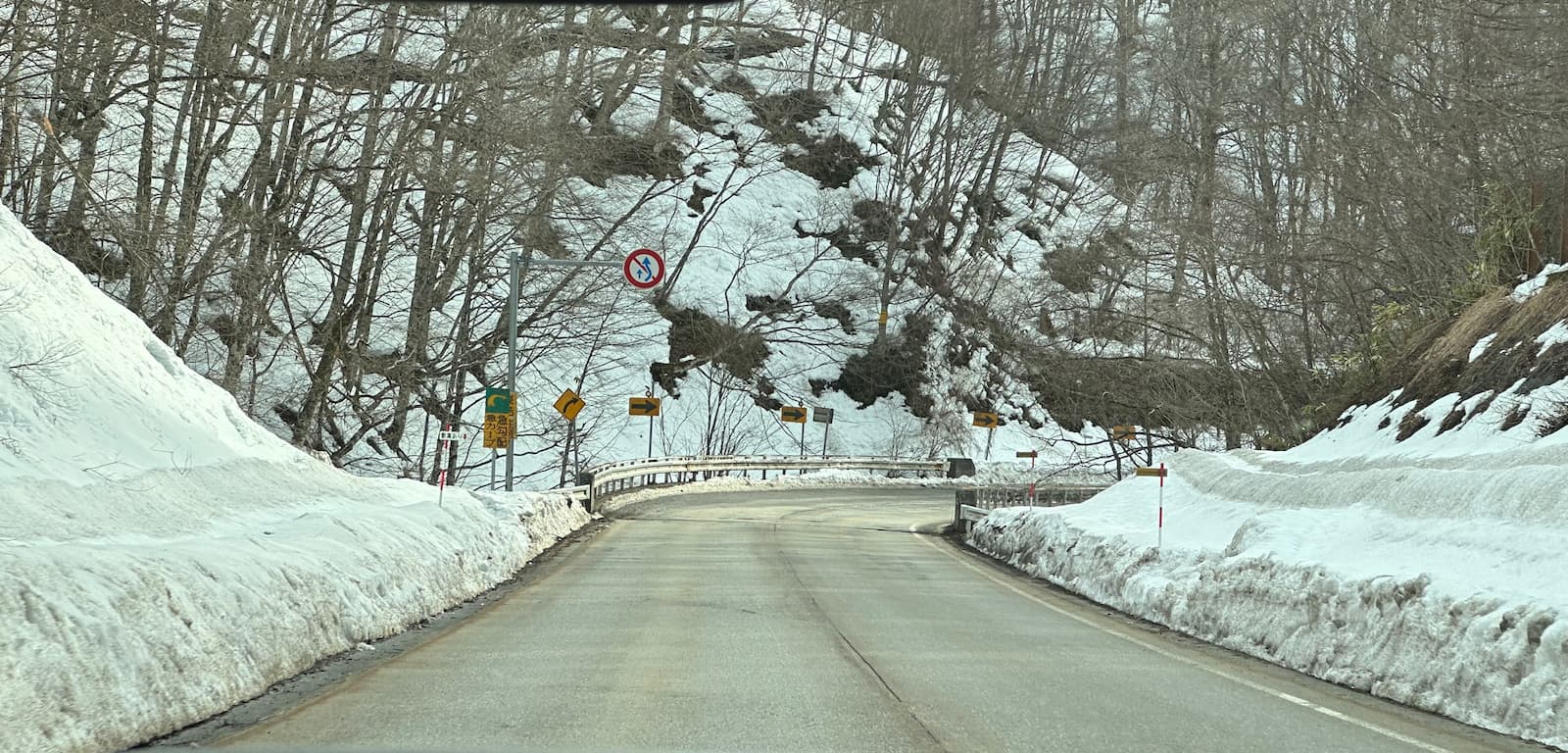
Road between Narai-juku and Takayama
TAKAYAMA
Takayama (also known as Hida-Takayama) is an historic town in the Hida Mountains (part of the Japanese Alps) in Gifu Prefecture. Its old town (Sanmachi) has beautifully preserved merchant houses from the Edo-period, numerous museums and temples. There is a lot to see and do here and it warrants at least a couple of days. Takayama is well-known for its bi-annual Takayama Festival, held in Spring and Autumn, featuring elaborate float parades through the streets.
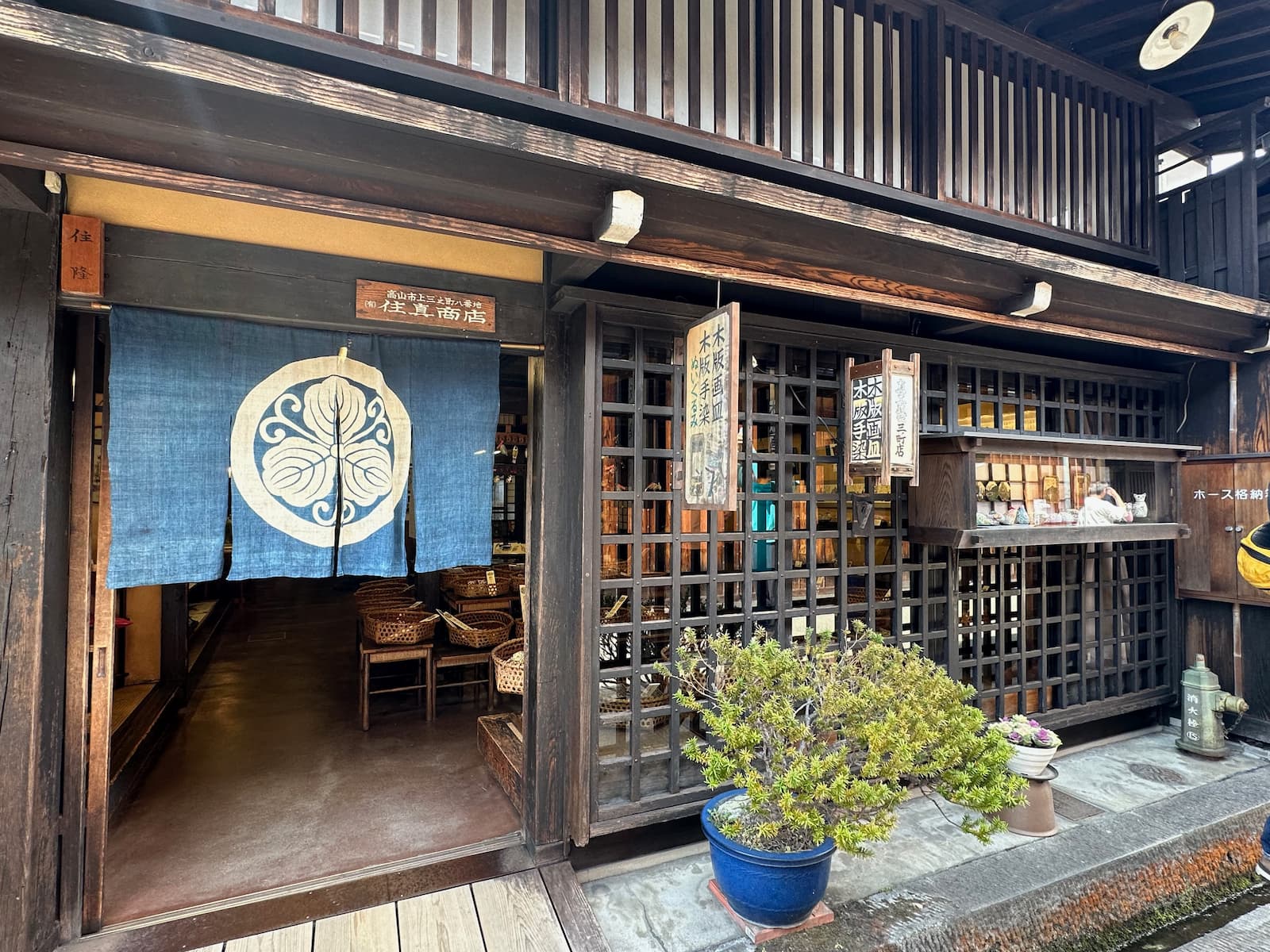
Shop in Sanmachi district of Takayama
Recommendations in Takayama:
-
Miyagawa Morning Market. This market features numerous stalls along the river between Kajibashi Bridge and Yayoibashi Bridge. Enjoy tasting local specialities – Hida beef skewers, octopus balls, Hida beef steam buns and fish-shaped pastries. The shops on the opposite side of the street to the market stalls are also excellent. This is a morning market – we went at 8.30am and it was already crowded. Open all year round: 7am-12 noon April-December, and 8am-12 noon January-March.
-
There is also another traditional, smaller market selling vegetables and some souvenirs – this is the Jinya-mae Market in front of the Takayama Jinya. We just caught the end of this market but it was also worth visiting.
-
Sanmachi Traditional Buildings Preservation Area – walk through this beautiful historic district dating back to the Edo period. The original timber buildings now house excellent craft shops, gift shops, restaurants, saki tastings, etc.
-
Nakabashi bridge – this orange-coloured bridge is a much photographed landmark in Takayama. It leads to the Jinya-Mae Market and Takayama Jinya.
-
Takayama Jinya – this traditional style building served as the government office in feudal times. Includes history, artworks and the Takayama Rice Storehouse – worth a visit.
-
Shimoninomachi-Ojinmachi Traditional Buildings Preservation Area – this area retains the atmosphere of Takayama’s castle town from the Edo period (1603–1867) with rows of traditional merchant and artisan houses, now home to sake breweries, museums and traditional restaurants. There are three historic private houses open to the public in this area: Yoshijima Heritage House, Miyaji Heritage House and Kusakabe Heritage House.
-
Hida Kokubunji Temple – the oldest building in Takayama. The grounds feature a 3-storey pagoda and a ginko tree s”attachment_9183″ align=”aligncenter” width=”1600″]
Sanmon Gate, Daioji Temple on Higashiyama Walking Course, Takayama[/caption]
Something worth noting is that we found it very hard to get into restaurants in the evening in Takayama so we recommend eating early or making reservations.
Our accommodation in Takayama was a close walk to the railway station (we travelled to Takayama by train) – Residence Hotel Takayama Station – highly recommended.
We rented a car while in Takayama as we wanted to drive out to see the Gokayama villages. There was car parking available under our hotel.
Takayama: Day trip to Gokayama villages of Ainokura & Suganuma
Gokayama was once considered a remote region and remained closed to the outside world for many years. Due to their isolation, the people developed a unique lifestyle and built houses to cope with the harsh winter environment.The small, picturesque Gokayama villages of Ainokura and Suganuma (both World Heritage Sites) are known for these unique houses – the gassho-style houses – and are located in beautiful mountainous settings. The word ‘gassho’ refers to the shape that a person’s hands make when they pray and this is a reference to the shape of the thatched roofs of the gassho-style houses. The shape of the roof is designed to withstand heavy snow.
Ainokura Traditional Industry Museum with ghasso-style roof
Note: If you are driving from Takayama, the Gokayama Tourist Information Centre is on your left just before the Kaminashi Tunnel – it’s easy to miss.
We left our accommodation in Takayama by car at 10.45am and took Expressway (toll road) to Gokayama – a scenic road – lots of tunnels and a dusting of snow on the mountains.
We passed through the Hida Tunnel which was 12kms long!
We took Exit 15-Gokayama and p”attachment_9186″ align=”aligncenter” width=”1600″]
Ainokura village[/caption]
There is a parking area at the edge of the village and we p”attachment_9189″ align=”aligncenter” width=”1600″]
Lunch at Matsuya in Ainokura village[/caption]
We spent about 3.5 hours exploring Ainokura and can highly recommend a visit to this unspoilt, quiet, traditional gassho village.
Suganuma
Suganuma is just a 12-minute drive from Ainokura. It is very small and very quiet with just nine gassho-style houses – some are over 200 years old.There is a small car park at the entrance to the village (and another above the village).
It is a beautiful place to wander. There are a couple of gift shops – one serves food. It is much smaller than Ainokura. There are two museums of interest here:
- Gokayama Folklore Museum – Housed inside a gassho-style farmhouse, this museum offers an insight into traditional village life, including displays of farming tools, silk production and everyday household items. On the second floor you can see the impressive gassho-style roof structure.
- Niter Museum – Suganuma has a unique history of producing niter (saltpeter), a key ingredient in gunpowder. This museum showcases the traditional tools and methods used in niter production.
Gokayama Folklore Museum, Suganuma
Shirakawa-go
Shirakawa-go is another ghasso-style village – about 20-minutes drive from Suganuma along Route 156. It is a much larger village with about 180 gassho-style houses. We found it very busy and crowded with tourists. If you have a choice, we would recommend visiting Ainokura and Suganuma instead for a more authentic experience.From Shirakawa-go it was about a half hour drive back to Takayama along the Expressway, with a toll of Yen1240. We arrived back at our hotel at 5.15pm – so an easy day trip.
TAKAYAMA TO HIROSHIMA BY TRAIN
We had an early start and caught three trains to get to Hiroshima:- Limited Express HIDA No 4 departed 8am – Takayama to Nagoya.
It is a nice train, lovely big windows, 2×2 seating, lovely bathroom in Car 3, plenty of luggage storage.
We bought sandwiches at little shop on the platform before boarding the train.
Very scenic train trip – mountains, rivers, cherry blossoms.
First half of trip it’s best to sit on the right hand side; second half of trip it’s best to sit on the left.
We arrived in Nagoya on time. - Shinkansen: Hikari 505 – Nagoya to Okayama. Departed Nagoya at 11.03am, Arrived Shin-Kobe 12.11pm.
We were able to store our luggage in overhead luggage racks (even the large bags). Normally passengers have to book seats which allow stored luggage in advance. Those seats are usually in the back and front rows of the carriage. - Shinkansen: SAKURA 555 – Dep Shin-Kobe 12.33pm, Arr Hiroshima 13.51pm
HIROSHIMA
On arrival at Hiroshima station, we took a taxi to our accommodation – Dormy Inn Urban View Heiwaodori.Hiroshima is famous as the location where the world’s first atomic bomb was dropped on 6 August 1945 during WWII. The devastation was catastrophic. It is a sobering experience visiting the museum and memorials dedicated to this event.
Hiroshima Peace Memorial Park
Beyond that Hiroshima is a vibrant city.
Peace Park and Memorial Museum
Shortly after arriving in Hiroshima, we walked across the Peace Bridge to explore Peace Park. We were delighted to see that the cherry blossom trees lining the river had started to bloom and people were picnicking under the trees.We visited the many memorials in the park:
- Hiroshima National Peace Memorial Hall for the Atomic Bomb Victims
- Peace Bell
- Children’s Peace Monument
- Atomic Bomb Memorial Mound
- Pond of Peace, Flame of Peace & Cenotaph for the Atomic Bomb Victim
- Rest House (Tourist Information Centre) – in the Basement Floor there is a description and personal recollections of what happened on the day the Atomic bomb was dropped. On the ground level is tourist information and an excellent gift shop.
Finally, we visited the Peace Memorial Museum – a very moving experience. This was where we spent most of our time when visiting the Peace Park.
Across the river from the Peace Park, (crossing the Motoyasu Bridge) is the A-bomb Dome – the remains of a building which was substantially damaged when the Atomic bomb exploded 160 metres away. In December 1996 the structure was added to the UNESCO World Heritage List as a reminder of the horrors of the atomic bomb and a symbol of peace.
Atomic Bomb Peace Dome, Hiroshima
Hiroshima – Free Walking Tour
We took a 2.5 hour morning walking tour of Hiroshima – Free Walking Tour – which we can highly recommend. The tour began at Hiroshima Castle and ended at the Peace Park. The tour visited the Gogoku Shrine, Hiroshima Castle, (passed by the Hiroshima Museum of Art), Chuo Park, Hiroshima Gate Park, Atomic Bomb Dome and Memorial.We learnt much about events leading up to WWII and the bombing of Hiroshima. We also learnt about food specialties in Hiroshima – particularly the different types of Okonomimura (Hiroshima pancake).
Hiroshima Pancake with Oysters, Okonomimura Food Hall, Hiroshima
A good place to try Okonomimura is at a food hall called Okonomimura – a short walk from our hotel. The food hall has 3 levels, with a variety of food stands to choose from – the speciality being Hiroshima-style pancake, made with layers of batter, cabbage, seaweed, bean sprouts, various seasonings and toppings of your choice – delicious! You can watch it being made as you sit and wait.
Miyajima Island – Day Trip
At the end of the walking tour, which finished at the Rest House/Tourist Information Centre in Peace Park, we crossed the Motoyasu Bridge and took the ferry to Miyajima Island. Cost is Y4,000 return and you purchase tickets from the vending machine at the dock. There is an attendant at the dock who speaks English to help you work it all out. The attendant asked us to nominate a return time and gave us a return ticket, giving us 3 hours on the island.Be sure to pick up a map and information on Miyajima Island at the dock.
The little ferry took 40 minutes to Miyajima Island. En route, the TV screen at the front of the ferry displayed information on the different sites along the river as we passed them by.
Miyajima Island is a World Heritage Site and is considered one of the three most scenic spots in Japan. The most famous site on the island is the Itsukushima Shrine. Dating back to 593, it is one of Japan’s most iconic and revered Shinto shrines. The shrine is world-famous for its “floating” torii gate (O-torii Gate) which appears to rise from the sea at high tide.
Miyajima Island
Once we arrived on the island, it was a 15-minute walk to Itsukushima Shrine. It’s a beautiful walk along the waterfront, lined with stone lanterns with views of the O-torii Gate. At the Shrine we purchased a combined ticket for the Shrine and the Treasure Hall (museum) for Y500.
The Shrine complex is built on stilts over the Seto Inland Sea with multiple interconnected buildings such as the main hall, prayer hall and corridors – all supported by pillars above the water. This design was intended to preserve the sanctity of the island and to create the illusion of floating structures – especially at high tide. There is a sense of peace and harmony throughout the Shrine complex.
Itsukushima Shrine, Miyajima Island
At the exit to the Shrine we crossed a little bridge and saw the Itsukushima Shrine Treasure Hall which displays artworks, handicrafts, swords, costumes, masks, etc which have been acquired by the Shrine throughout its history. Worth visiting.
The little street beyond the museum leads to the Miyajima Kitaoji Rosanjiln Museum. Down a little laneway to the left there is a cluster of beautiful cherry blossom trees with deer feeding under them.
Cherry Blossoms, Miyajima Island
The walk back towards the ferry, past the Shrine is also beautiful – lined with lanterns and cherry blossoms.
There is a lot to see at Miyajima Island and it could warrant a full day to explore if you have the time:
- Itsukushima Shrine
- O-torii Gate
- Hokoku Shrine (Senjokaku)
- Five-storied Pagoda
- Treasure Hall (museum)
- Tahoto Pagoda
- Daiganji Temple
- Daishoin Temple
- Miyajima History and Folklore Museum
- Miyajima Aquarium
- Momijidani Park
- Mt Misen and Ropeway
- Miyajima Traditional Craft Centre
- Tsutsumigaura Recreation Park
- O-Shakushi (Big Rice Scoop)
HIROSHIMA TO UNO PORT
We used our JR Pass and took the 8.10am Shinkansen (Sakura 540) from Hiroshima to Okayama (40 minutes), where we then took the Rapid Marine Liner train to Uno Station (50 minutes).Our accommodation – Uno Port Hotel – was just across the road from Uno Station. We left our luggage at the hotel, bought lunch from the local 7-11 and caught a ferry to Teshima. You can see the ferry terminal from the hotel – it is about a 5 minute walk away.
Uno Station
TESHIMA ISLAND
Teshima is a rural island of 14.5 square kms with a population of about 900 people. It has become an ‘art’ destination and is renowned for its contemporary art installations – many of which are part of the Benesse Art Site Naoshima project and the Setouchi Triennale international art festival. The most well-known installation on Teshima is the Teshima Art Museum.The ferry from Uno Port took us to Ieura Port on Teshima Island. There is an information centre at Ieura Port where it is a good idea to pick up a little booklet called Teshima Guide Map & Timetable. Check with the staff at the information centre on what is open and what is closed – a few museums and restaurants were closed during our visit. If the Tourist Centre is closed, check the Information Board at the port which has a map showing current openings. There are also information boards with ferry timetables, bus timetables and restaurants that are open.
Teshima Island port of Ieura
The island is a little too big to walk so we hired a little car for some of our group, and e-bikes for others. It is a good idea to book these in advance.
Teshima Information Board
There are several art installations and museums on Teshima Island however not all were open on the day we visited:
- Teshima Yokoo House – an art museum created by renovating an old private house. It is a collaboration between renowned artist Tadanori Yokoo and architect Yuko Nagayama. The building is divided into three main exhibition areas – the “Main House,” a “Warehouse” and an “Outhouse,” showcasing 11 works by Yokoo. There is also a stone garden, pond and cylindrical tower. Tinted red glass is used throughout the building symbolising blood and life.
- Needle Factory – originally an industrial sewing needle factory, operating from 1964 until the late 1980s. The factory was once a significant local employer – especially for women. Years after it was closed, it was transformed into an art space as part of the Benesse Art Site Naoshima project. (Closed during our visit).
- Teshima Art Museum – is a unique and contemporary art site. It was created through the collaboration of artist Rei Naito and architect Ryue Nishizawa. The structure is a large, open concrete shell with no supporting pillars and it blends with the surrounding landscape of rice terraces. Two large oval openings in the roof allow wind, sound and natural light to enter. Inside, water continuously springs from the ground, forming tiny pools that move gently across the floor in a work titled Matrix by Rei Naito. To appreciate the experience, don’t be in a hurry – sit and take it all in.
The museum operates on a reservation system so it is advisable to book online for a specific date and time entry. Photography is not allowed inside the museum.
There are lovely views over the rice terraces and a similar shaped structure next door houses a coffee shop and gift store. - Noe Aoki (Japanese sculptor) – outdoor installation titled “Particles in the Air” made of iron.
- La foret des murmures (the Forest of Whispers) – an artwork by French artist Christian Boltanski. The installation consists of 400 wind chimes suspended throughout a forest, each accompanied by a transparent strip bearing the name of a loved one. Visitors can add names to the installation – it is an ongoing work of art. (Closed during our visit).
- Shima Kitchen – designed by architect Ryo Abenot, Shima Kitchen is not just a restaurant but an artwork and architectural project. (Closed during our visit).
- Pipilotti Rist – is a Swiss video artist. Her installation is titled Your First Color (Solution In My Head–Solution In My Stomach) and is housed in a small, preserved storehouse near the Shima Kitchen restaurant. The installation features colourful video projections of tulips, flowers, people and natural scenery, which move across the screen, filling the space with shifting colour and light. (Closed during our visit).
- Llobet & Pons – Jasmina Llobet and Luis Pons are conceptual artists known for their installations that blend art, architecture and public interaction. On Teshima Island they have created No one wins – Multibasket. Multibasket is a full-sized basketball court uniquely designed with multiple hoops (six in total) mounted on a backboard shaped like Teshima Island. Each hoop represents one of the island’s towns allowing for simultaneous play by several people.
- Les Archives du Coeur (“Heart Archives”) – an installation by French artist Christian Boltanski. The installation is housed in a small building next to a pretty beach. Visitors enter a dimly lit room and listen to heartbeats that have been recorded over the years. Guests also have the opportunity to record their own heartbeat which is then added to the recordings – so it is an ongoing work of art.
- Heather B. Swann and Nonda Katsalidis – Australian artist and architect – have a joint work called Place for Sea Dreamers on Teshima. The artwork is a cast iron bench shaped like a dugout canoe – also reminiscent of a fishing net.
To see and experience all the island has to offer, it would be a good idea to spend a whole day or an overnight stay on Teshima Island. We only had time to see three installations in the four hours we spent on the island.
After catching a ferry back to Uno Port, we had dinner at Osakaya Shokudo restaurant – a delicious meal in a tiny space (just 5 tables of 4 people in total) – highly recommended.
NAOSHIMA ISLAND
Naoshima Island is a unique blend of art, architecture and nature, and is a popular destination for visitors who enjoy contemporary art. Similar in size to Teshima, it is more developed (in a good way) and was the group’s favourite art island.We took the ferry from Uno Port to Miyanoura on Naoshima.
One of the first things you will see as you disembark from the ferry in Miyanoura is Yayoi Kusama’s red ‘Pumpkin’.
At the port we collected our pre-booked cars. They are very cute – painted in the colours of Yayoi Kusama’s pumpkins!
There are essentially three areas on the island where attractions are concentrated:
- Miyanoura area
- Benesse House area
- Honmura area
With one day to spend on the island, we concentrated on the Benesse House area and the Honmura area.
Naoshima Island, near Benesse House
Benesse House area
We parked near the North Gate of the Benesse House area and walked along the private road leading to Benesse House. It is a pleasant walk with lovely views of the coast. Along the way was:- Chichu Art Museum – operates on date/time reservations and was sold out during our visit.
- Lee Ufan Museum and outdoor installations
- Valley Gallery – one of our favourites
- Cultural Melting Bath
- Benesse House Museum
Benesse House is both a museum and a hotel. Designed by Japanese architect Tadao Ando, Benesse House and Museum features indoor and outdoor contemporary art focusing on the concept of “coexistence of Nature, Architecture and Art”. There is much to see and this is where we spent most of our time on the island. When you buy your ticket for Benesse House Museum you will receive a brochure/map with a full list of installations in the museum, on the beach, the terrace, the oval, the park, etc.
We loved Benesse House museum. There is also an excellent cafe on the second floor of the museum (plus gift shop) which makes a good stop for lunch. There are also two fine dining restaurants.
Naoshima Island – Terrace
Note: The Hiroshi Sugimoto Gallery – located in the grounds of Benesse House – was fully booked on the day of our visit and it is recommended to make reservations in advance.
After spending a few hours at Benesse House and surrounds, we caught a shuttle bus back to the car park where we had left our cars and drove to the village of Honmura to see the Art House Project.
For the Art House Project, artists used seven empty houses, temples or shrines in the village of Honmura and turned them into works of art.
We bought a ticket at Honmura Lounge & Archive (Art House Project Ticket Office) and with recommendations and map in hand we visited five of the art house projects in this order:
- Gokaisho
- Kadoya
- Go’ o Shrine
- Minamidera
- Ishibashi
The Art House Projects closed at 4.30pm so we didn’t have time to visit Kinza (by appointment only) or Haisha.
It doesn’t take long to view each site. The most unusual project was Minamidera where we were led into a pitch black room and sat for 10 minutes in silence while our eyes adjusted to the darkness. We then had to walk forward in the dark and in doing so experienced an optical illusion of light.
After a busy afternoon in Honmura we walked to Honmura port and bought delicious ice cream from Naoshima Gelato – highly recommended.
At the end of the day we drove back to Miyamoura port and caught the ferry back to Uno Port.
After dinner in Uno Port – at a local yakatori restaurant – we caught a train to Okayama.
OKAYAMA
On arrival in Okayama, we took a taxi to our accommodation – Smile Hotel Okayama.Highlights of Okayama:
Okayama Korakuen Garden
This beautiful garden dates back to 1687 and is considered to be one of the three best landscape gardens in Japan. It covers about 33 acres (14 hectares) and was particularly beautiful during our visit as the cherry blossoms were blooming. Exiting the garden by the river, there is an avenue of cherry trees in full bloom, and down by the river there is an excellent food market. On the other side of the garden, is Okayama Castle – also open to the public.Cherry Blossoms in Korakuen Garden
Kurashiki
Kurashiki is an historic town just under 20 minutes by train from Okayama Station (using JR Pass). There is a Tourist Information Office near the south exit of the station where you can pick up a Kurashiki Walking Map. It is a 10-minute walk from the station to the Historical Quarter.Kurashiki was a thriving merchant town during the Edo Period, particularly as a distribution centre for rice. In the beautiful Kurashiki Bakin Historical Quarter there are many original warehouses, merchant houses and beautiful willow-lined canals. Many of the historic buildings now house museums, cafes, boutiques and souvenir shops. The shopping is excellent.
Kurashiki is also known for its textile industry and was the birthplace of jeans in Japan!
Kurashiki
OKAYAMA TO KYOTO
To reach Kyoto, we took the 10.36am Hikari 506 Shinkunsen, arriving in Kyoto at 12.02pm.KYOTO
Kyoto is on most people’s list when visiting Japan. It was the country’s capital from 794 to 1868 and is renowned as the cultural heart of Japan where many aspects of traditional Japanese culture are preserved. There are over 2,000 shrines and temples throughout the city and 17 sites in Kyoto are UNESCO World Heritage listed.Because Kyoto was spared from major destruction during WWII, many of its original architectural landmarks and cultural heritage remain.
Due to its popularity with both local and international tourists, Kyoto has become very crowded – and often over-crowded. The best way to beat the crowds is to start your day very early – especially when visiting shrines and temples.
Our hotel in Kyoto was Hotel Musse Kyoto Shijo Kawaramachi Meitetsu. The Kawaramachi area was an excellent base for exploring Kyoto – in walking distance to many cultural sites, close to the intersection of Kawaramachi Street and Shijō Street (a leading shopping area with lots of dining options) and a 5-minute walk to Gion Shijo Station.
Day 1 – Kyoto
On our first day in Kyoto we took the 2.30pm Kyoto Free Walking Tour – Gion and Higashiyama district.It was an excellent tour and highly recommended. Highlights:
- Gion, the main geisha district – we walked through the old streets and learnt a lot about Geisha – who in Kyoto are called Geiko and the apprentices are called Maiko. The main street in Gion is Hanamikoji Street – a beautiful street lined with Machiya – traditional wooden townhouses.
- Kennin-ji Temple – where we learnt about Buddhism and Shintoism.
- Walk through the old streets to the colourful Yasaka Koshin-do Temple.
- Walk along Yasaka-dori (street) to the Yasaka Pagoda.
- Walk Ninenzaka Path, past Kodaji Temple to Maruyama Park.
- Maruyama Park – beautiful cherry blossoms and food markets, very crowded.
- Yasaka Shrine – large, beautiful complex.
Our tour guide gave us the following recommendations of places to eat:
Ramen – Gion Shirakawa Ramen
Saki Tasting – Gion Kiyomizu Neki
Yakitori – Torikioku (a popular chain of yakitori restaurants)Day 2 – Kyoto
Making a fairly early start to beat the crowds, we walked the Philosopher’s Path – a 1.5km pathway along a canal lined with beautiful cherry blossom trees in full bloom. There were not too many people on the path at 8.30am in the morning.There are several sites to visit along the Philosopher’s Walk.
Firstly we took a taxi from our hotel to Ginkaku-ji Temple (which is at the beginning of the Philosophers Walk) and were there at opening time. The temple has beautiful moss gardens and raked sand gardens. It is home to the Silver Temple.
Ginkaku-ji (Silver Temple), Kyoto
Next stop was Anraku-ji Temple – lovely gardens.
Continuing along the canal, there are little cafes, pottery shops, etc but most were not open before 11am.
Otoyo Shrine – very beautiful. We loved the cherry blossoms and the stone mice guarding the entrance.
Otoyo-jinja Shrine
A Japanese man along the canal was making little ‘boats’ out of leaves and flowers and giving them free to people to drop in the canal. He s”attachment_9289″ align=”aligncenter” width=”1600″]
Eikando Temple[/caption]
Nanzen-ji – Hatto (lecture hall), Sanmon Gate.
Sanmon Gate, Nanzen-ji Temple, Kyoto
Running short of time we missed the Hojo (main hall) and its rock garden; the aqueduct; Nanzenin Temple; Konchi-in Temple and Tenjuan Temple.
Our late lunch stop was at a brand new burger café (opened 5 days prior) called Dragon Burger – delicious and highly recommended.
Walking back to our hotel, we passed the Keage Incline, an old railway track lined with cherry blossoms.
Cherry Blossoms, Keage Incline, Kyoto
Day 3 – Kyoto to Nara Day Trip
Nara is a popular day trip from Kyoto – and we can highly recommend it.We caught the 11am Sightseeing Limited Express Aoniyoshi – a special tourist train to Kentsuya-Nara station, arriving 11.34am. The train was very attractive with colourful seats, large windows and buffet car.
Arriving in Nara, we made a plan to do a self-guided walking tour, the highlights of which were:
Todai-ji Temple complex
Starting at the Nandaimon Gate (Great South Gate), next door is the Todai-ji Museum, then the Great Buddha Hall, home to a 15m tall bronze statue of Buddha. Look for the pillar with a hole the size of Buddha’s nostril! (You can buy a combined ticket to the Great Buddha Hall and the Todai-ji Museum.)Great Buddha Hall
Up the hill is Hokkedo (Sangatsudo) Hall (oldest structure in the complex) and the Nigatsudo Hall. Climb the stairs of Nigatsudo Hall for views of Nara. In Nigatsudo there was a room where visitors could shelter from the cold, have a picnic lunch (self provided) and use the toilets. They even provided a hot cup of tea.
Nigatsudo, Nara
Nara Park – lots of deer (can be aggressive!), lots of cherry blossoms and the National Museum.
Deer in Nara Park
Kasuga Taisha Shrine & Wakamiya Shrine – Shinto shrines with thousands of stone and bronze lanterns – beautiful.
Lanterns, Kasuga-taisha Shrine, Nara
Kofuku-ji Temple complex – a UNESCO World Heritage site and one of Japan’s oldest Buddhist temple complexes. There are a number of buildings to see here – the 5-storey Pagoda (symbol of Nara), 3-storey Pagoda, the Central Golden Hall, Eastern Golden Hall and National Treasure Museum (admission fees apply to the last three). This was the last site on our tour before we returned to the station and caught a regular train back to Kyoto.
Three-storey Pagoda, Kofuku-ji Temple, Nara
Day 4 – Kyoto
We visited two of the most popular sites in Kyoto:- Fushima Inari Shrine
- Kiyomizu-dera Temple
Fushimi Inari Shrine – famous for its torii gates, this shrine is one of the most photographed in Kyoto. The shrine is open 24 hours a day and the earlier in the morning you visit the better. It gets super crowded. Entry is free. We did part of the hike through the torii gates – quite steep in parts.
Torii Gates, Fushima Inari Shrine
Kiyomizu-dera Temple – a magnificent Buddhist temple and UNESCO World Heritage listed. Highlights are the Main Hall (famous for its huge wooden verandah with panoramic views over Kyoto), 3-storey pagoda, Niomen and Saimon Gates, Otowa Waterfall and the Jishu Shrine. Whilst you can walk free-of-charge around the grounds of the temple, there is a fee to enter the Main Hall (Y500 at the time of our visit).
Kiyomizu-dera Shrine, Kyoto
The area around Kiyomizu-dera Temple is a classic Kyoto experience with historic temples, picturesque streets, local crafts, teahouses, etc. It can get very crowded. The main street leading to the Temple is Matsubara Street, and off this are some of the prettiest streets in old Kyoto – Sannenzaka, Ninenzaka and Ichinenzaka. It is hard to appreciate the beauty of the area with all the crowds, so it is a good idea to revisit in the early morning.
Sannenzaka, Kyoto
Ninenzaka, Kyoto
In the evening, to celebrate a birthday, we had a drink at the Moon Rooftop Bar followed by dinner in Pontocho Street. Highly recommended!
Pontocho Street
Pontocho is one of Kyoto’s most iconic and atmospheric districts, known for its traditional charm, nightlife and deep ties to geisha culture. The district centres on a narrow, pedestrian alley (Pontocho Street) that runs parallel to the west bank of the Kamogawa River.We ate at two restaurants there:
- Unagi Restaurant – once seated we realised it was an ‘eel speciality’ restaurant! If eel doesn’t take your fancy there are other dishes including chicken on rice and tempura vegetables – delicious.
- Izakaya Fukurou – a Japanese izakaya (pub/bar) serving traditional meals.
Gion
Whilst in the area of Pontocho, take an evening stroll through the nearby historic streets of Gion – the geisha district of Kyoto. Whilst we had walked through this area during the day on the Walking Tour, it is beautiful at night. The main street in Gion is Hanamikoji Street – a beautiful street lined with Machiya – traditional wooden townhouses. Don’t miss the Gion Tatsumi Bridge (featured in the film Memoirs of a Geisha) which is illuminated at night.Hanamikoji-dori, Gion
Miyako Odori
If you are in Kyoto in April, you will have the opportunity to see Miyako Odori – a celebrated annual dance event held every April. It is performed by geisha and apprentice geisha from the Gion district and showcases traditional Japanese dance, music and culture. Miyako Odori is performed at the Gion Kobu Kaburenjo Theatre in Gion.
Day 5 – KyotoKinkaku-ji Temple (Golden Pavilion)
Kinkaku-ji Temple is one of Kyoto’s most iconic Zen Buddhist temples and a UNESCO World Heritage Site. It is the Golden Pavilion most people come to see – a three-story building whose top two floors are covered in gold leaf. It is viewed by taking the path around the pond. Entry into the pavilion itself is not permitted. It gets very crowded so good idea to visit early. There is an entry fee to the grounds (Y500 at the time of our visit).Kinkaku-ji (Golden Temple)
After visiting the Golden Pavilion, we took a taxi to Arashiyama. Alternatively Arashiyama is accessible from Kyoto Station by train – you can use a JR Rail Pass on the JR Sagano Line between Kyoto and Arashiyama. The trip takes about 20 minutes.
Arashiyama
Arashiyama is a picturesque area on the western outskirts of Kyoto. The town itself has become very touristy (probably due to the popular Sagano Bamboo Grove) but walk away from the town and you will find quiet lanes, some beautiful small temples and local crafts.We had a quick look at the Sagano Bamboo Grove but found it to be overcrowded and a bit tired. There is a much better place to experience a smaller bamboo grove away from the crowds at Adashino Nenbutsuji Temple – about a half hour walk away.
Saga Toriimoto Street
Escape the busy Arashiyama town and take a walk along Atago-K”attachment_9260″ align=”aligncenter” width=”1600″]Atago-K”attachment_9262″ align=”aligncenter” width=”1600″]
Adashino Nenbutsuji Temple, Arashiyama[/caption]
At the rear of the temple grounds is a beautiful bamboo grove – without the crowds!
Bamboo Grove, Adashino Nenbutsuji Temple, Arashiyama
Otagi Nenbutsu-ji
This is another beautiful Buddhist temple known for its 1,200 stone Rakan (arhat) statues (disciples of Shaka, the founder of Buddhism). Each statue has its own distinct expression and ‘personality’!
Entry fee is Y400 at the time of our visit. It is open from 8.30am-4pm.
Otagi Nenbutsu-ji Temple, Arashiyama
Cafe Sagano
Walking back towards Arashiyama we found a homely little place – Cafe Sagano – and had a delicious lunch served by two lovely Japanese ladies. Despite our lack of Japanese and their lack of English we were given a most friendly welcome.Cafe Sagano
Seiryoji (Sagashakado) Temple
Before we reached Arashiyama Station we walked through the grounds of the Seiryoji (Sagashakado) Temple – a large Buddhist temple which has an impressive entrance gate. The main hall features the Shaka Nyorai (Shakyamuni Buddha) statue, a wooden statue s”attachment_9265″ align=”aligncenter” width=”1600″]Seiryo-ji Temple, Arashiyama[/caption]
After a wonderful day in Arashiyama we took a local train back to Kyoto Station.
Day 6 – Kyoto
On day 6 in Kyoto, we just had the morning before taking an afternoon train to Tokyo. We took the opportunity to check out Kyoto’s food market and shopping district. Even if you don’t usually like shopping, there is something about shopping in Japan that draws you in. For us it is the unique items available, beautiful Japanese arts and crafts, quality and presentation. Shopping in Kyoto is no exception.Both the Nishiki Market (Kyoto’s food market) and undercover shopping area of Teramachi Kyogoku Shopping Street – are within a few minutes of our hotel.
Nishiki Market
This amazing food market stretches over five blocks (about 400 meters), and is a covered pedestrian arcade lined with over 100 shops and stalls, many of which have been operated by the same families for generations. Much of the food is locally sourced and includes seasonal produce, fresh seafood, pickles, Japanese sweets, sushi, tofu, dried foods and kitchenware. Unique local delicacies include skewered octopus!Although crowded, it has a wonderful atmosphere.
We loved the Taiyaki (fish-shaped waffle with filling of either custard, chocolate or red bean paste) made fresh as we waited. We also loved the muffins and cakes at City Bakery cafe.
Teramachi Kyogoku Shopping Street
This shopping district, in the same area as Nishiki Market, includes Teramachi and Shinkyogoku Shopping Arcades and a series of small streets with fashion boutiques, high end stores, etc. It is a busy area with a great atmosphere.Don’t miss the food hall in the Daimaru Department Store!
KYOTO TO TOKYO
In the early afternoon we took a Shinkensen train from Kyoto to Tokyo Station where we s”https://bestmonthofyourlife.com/japan/” target=”_blank” rel=”noopener”>Best Month of Your Life.22 March – 13 April 2024
Accommodation Guru


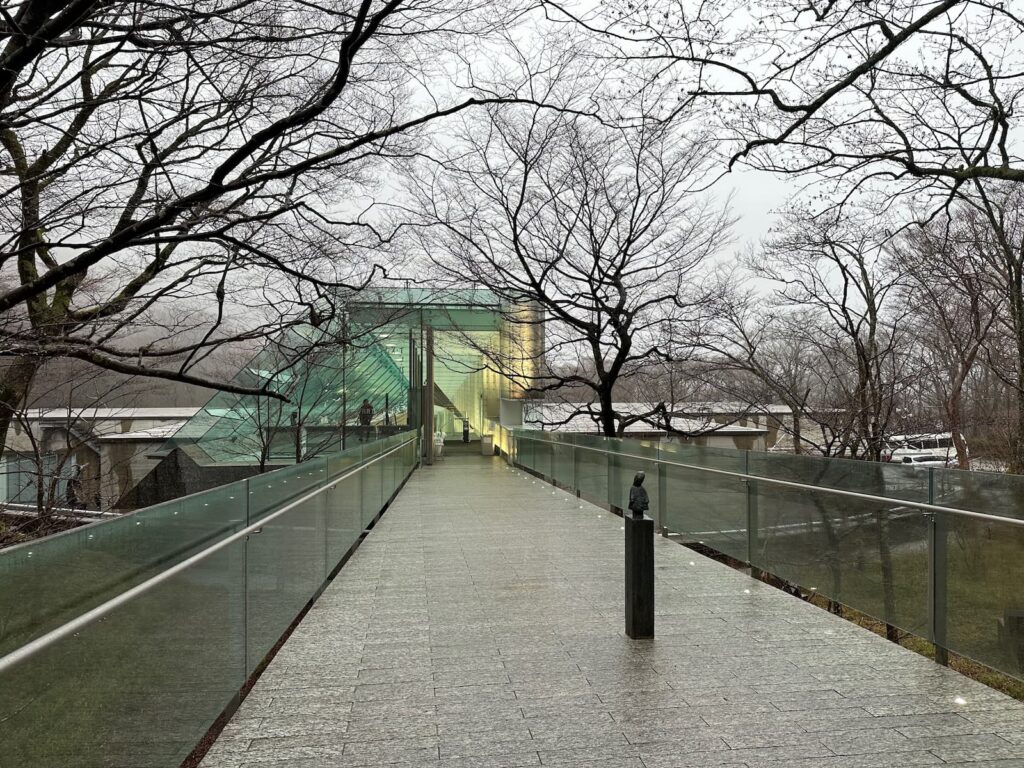
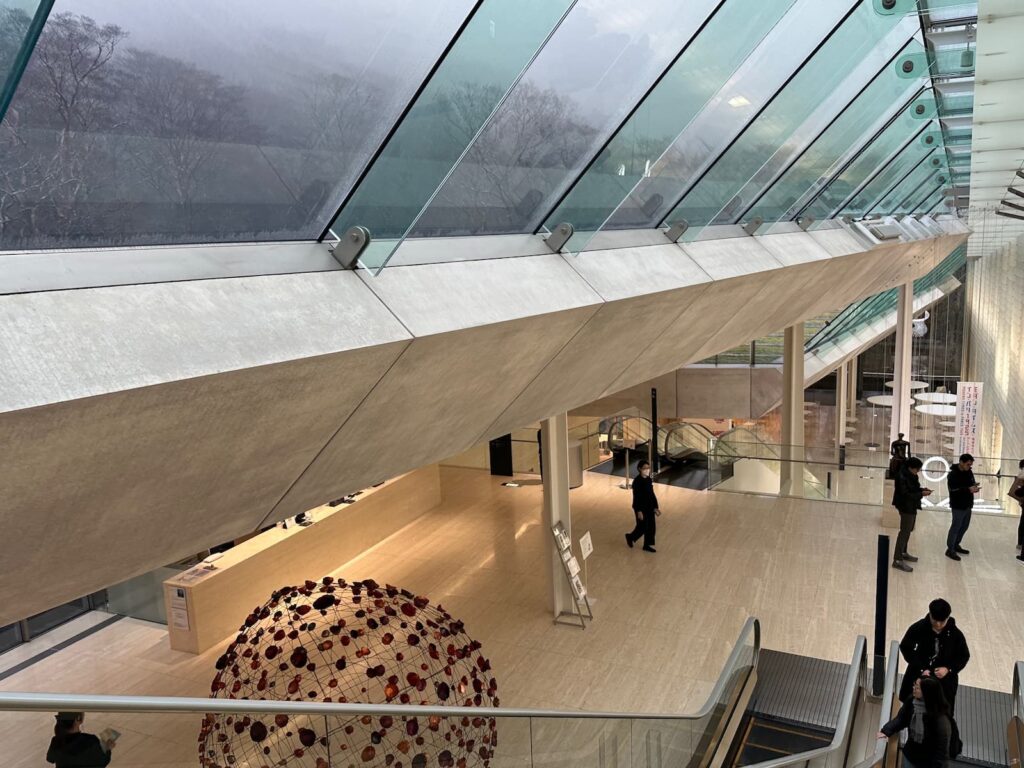
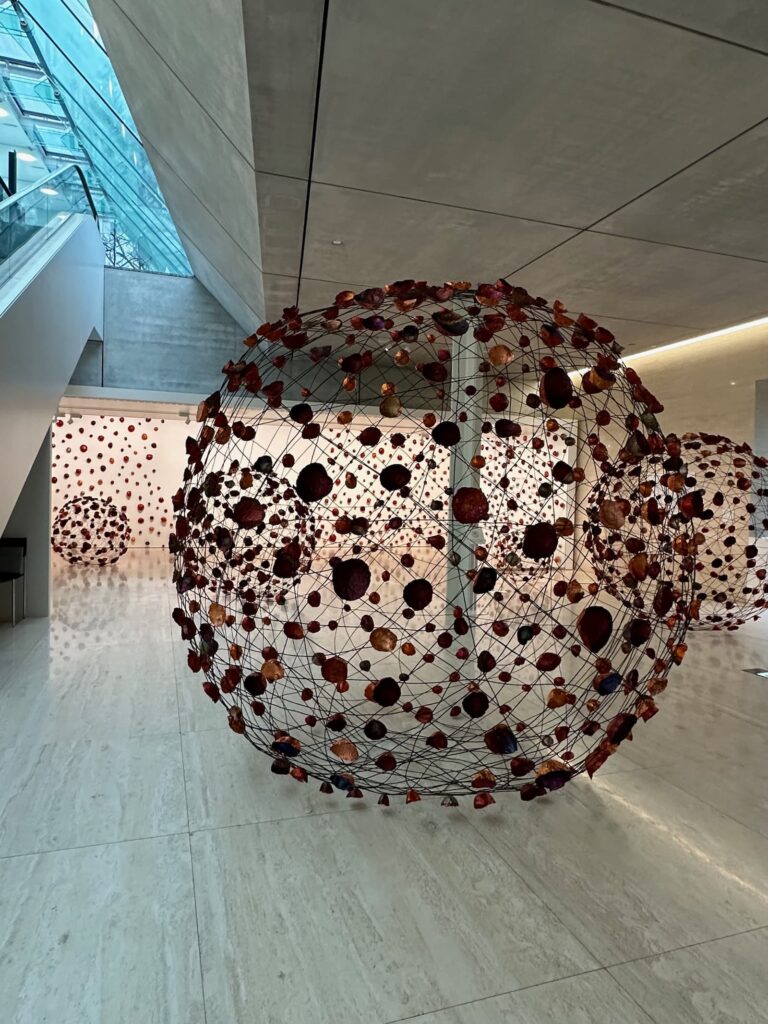
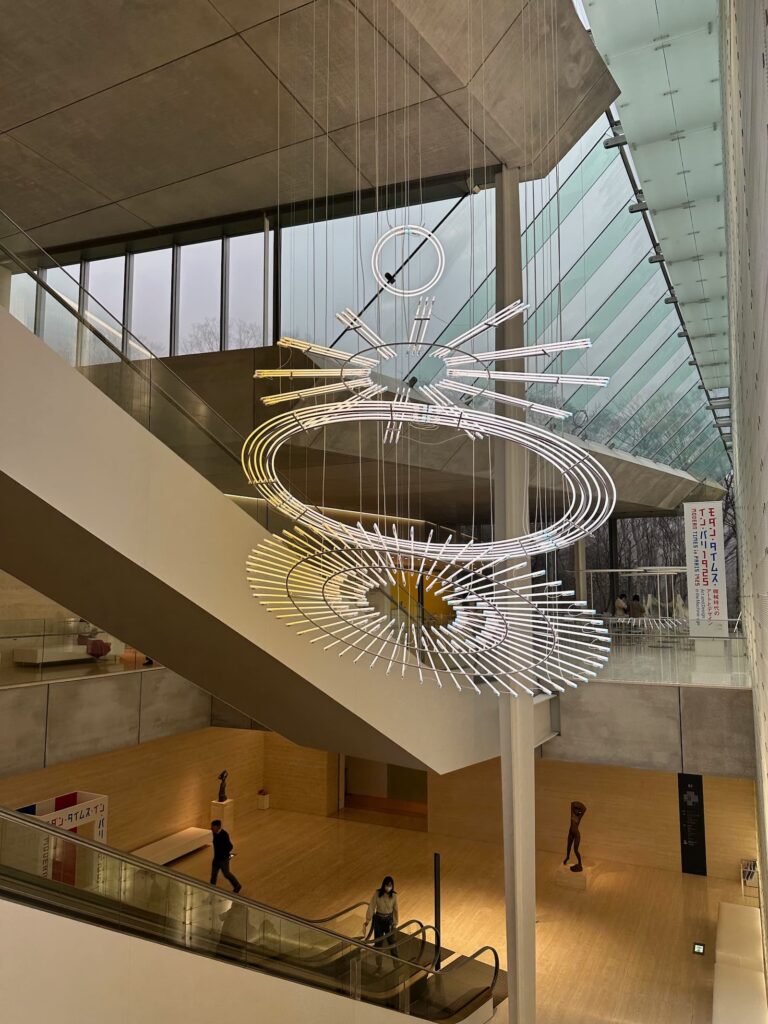
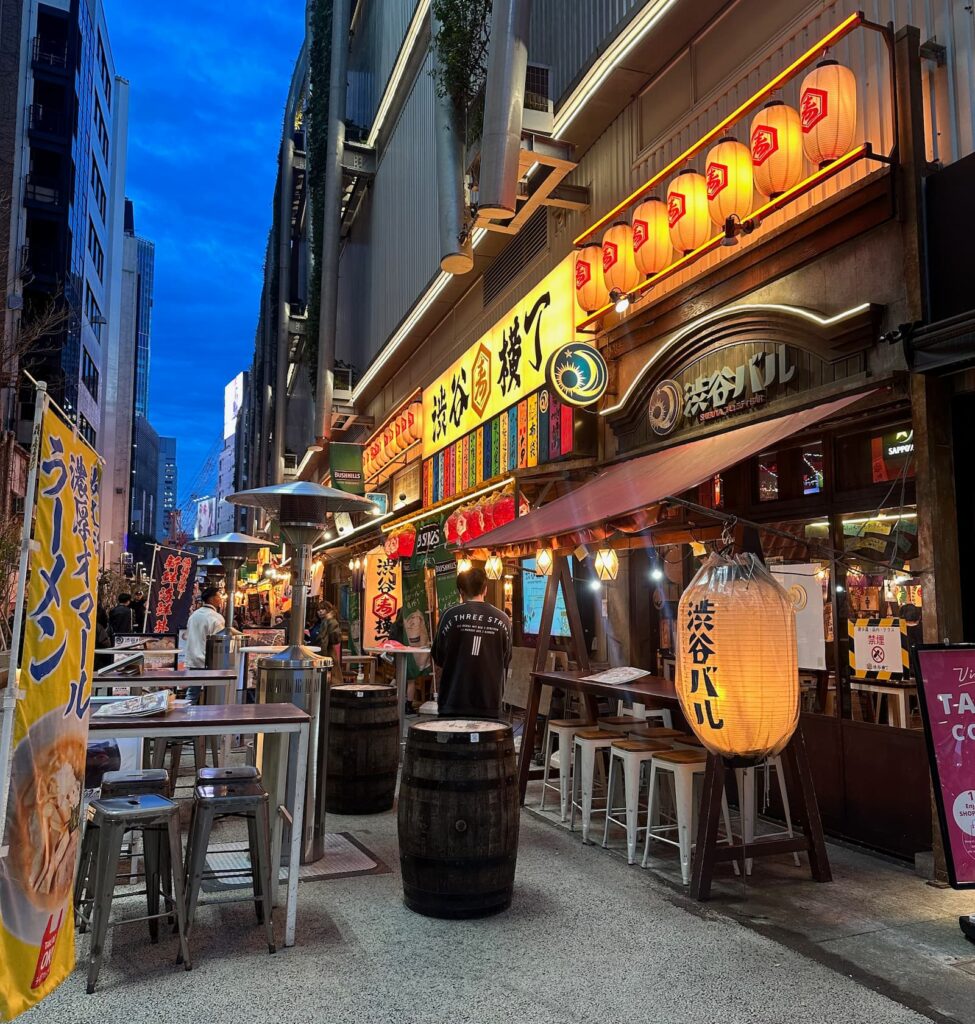
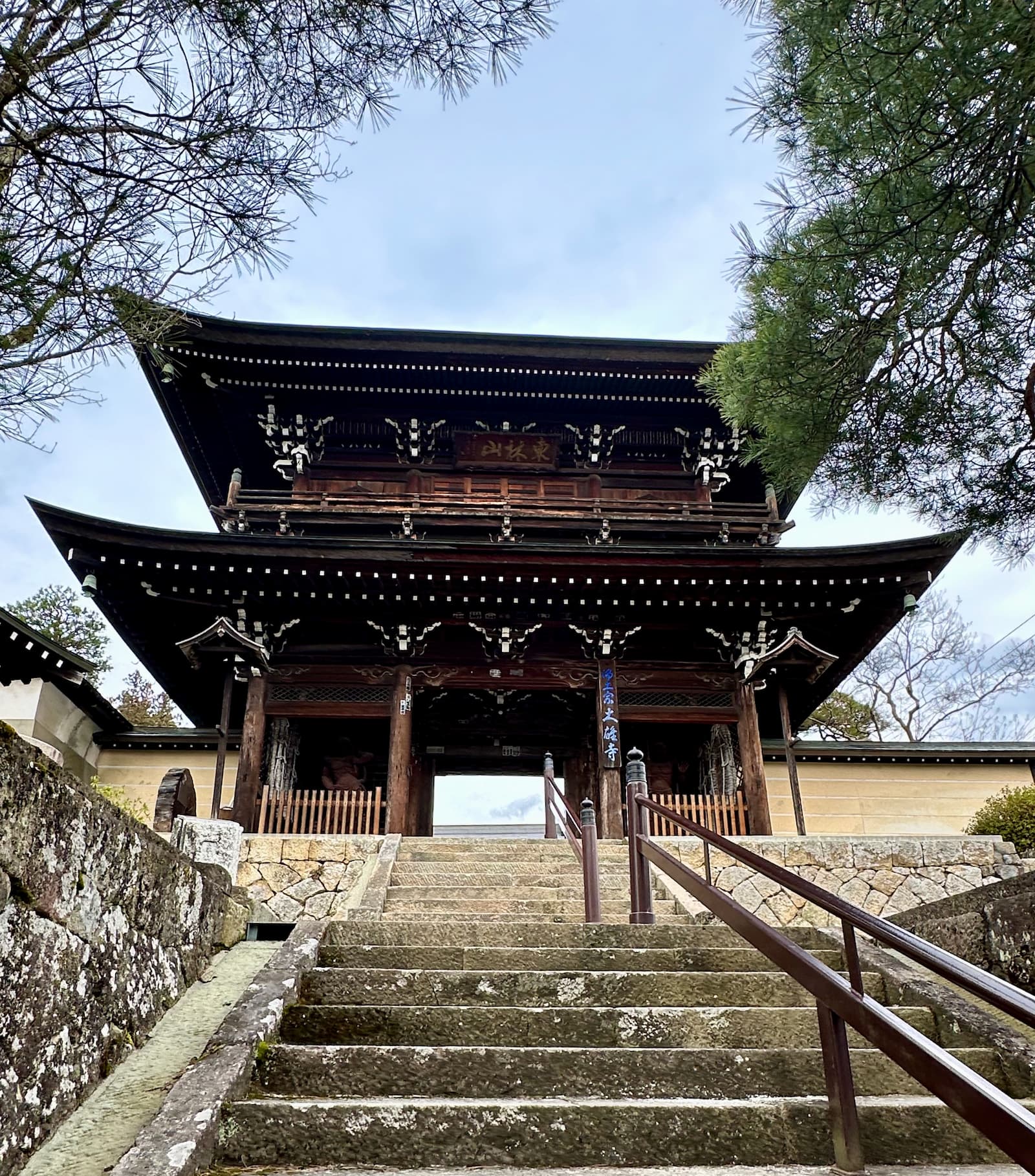 Sanmon Gate, Daioji Temple on Higashiyama Walking Course, Takayama[/caption]
Sanmon Gate, Daioji Temple on Higashiyama Walking Course, Takayama[/caption]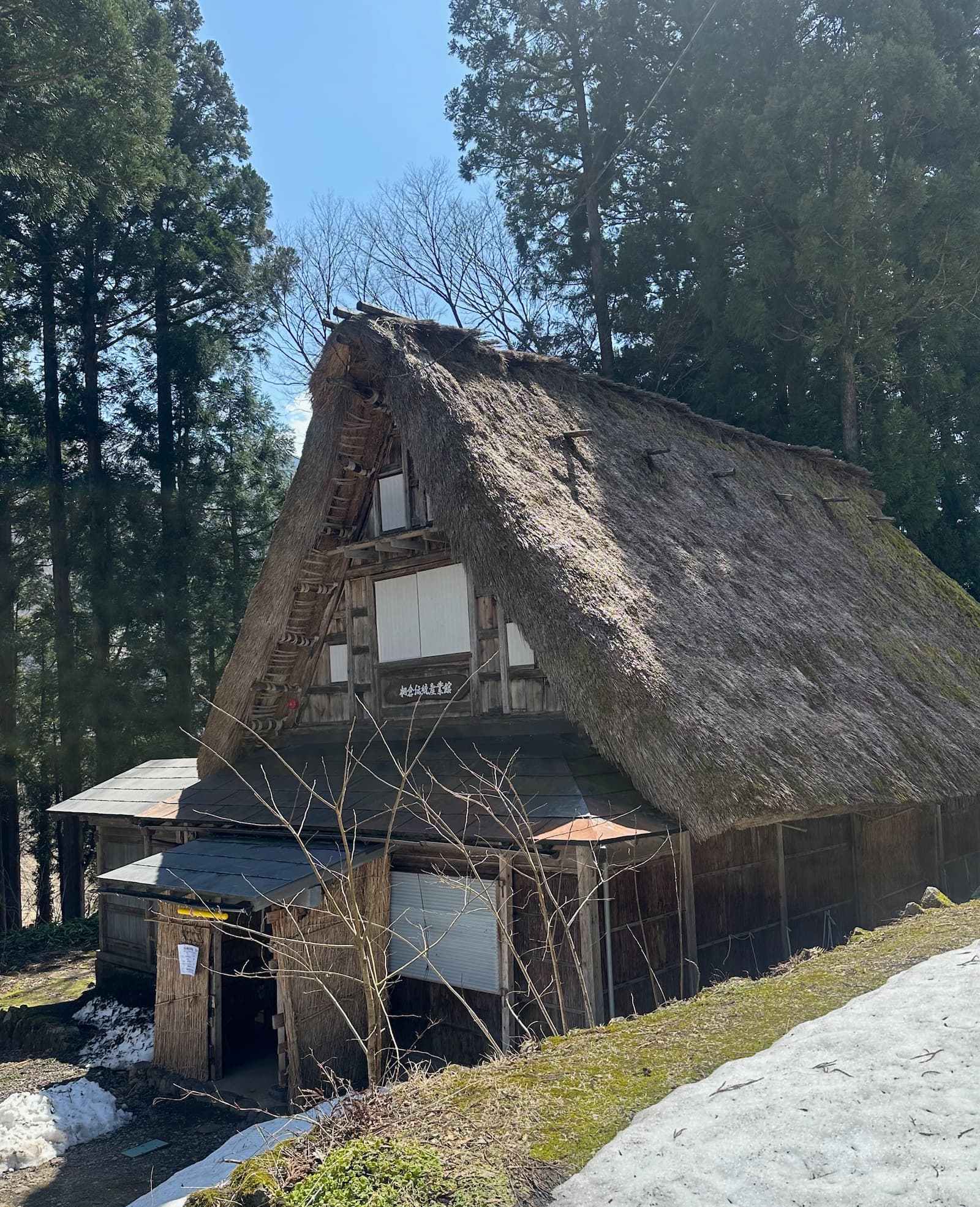
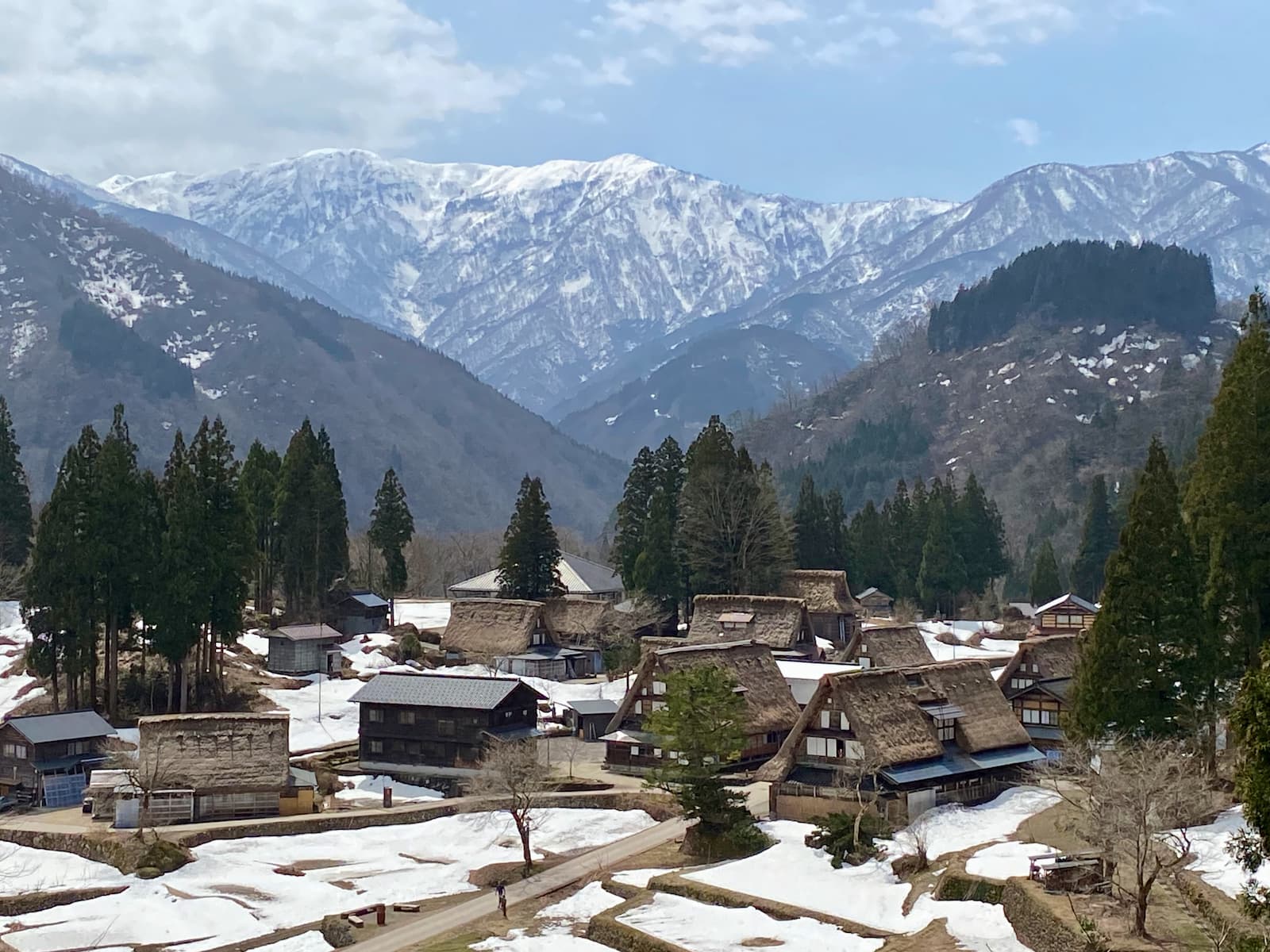 Ainokura village[/caption]
Ainokura village[/caption]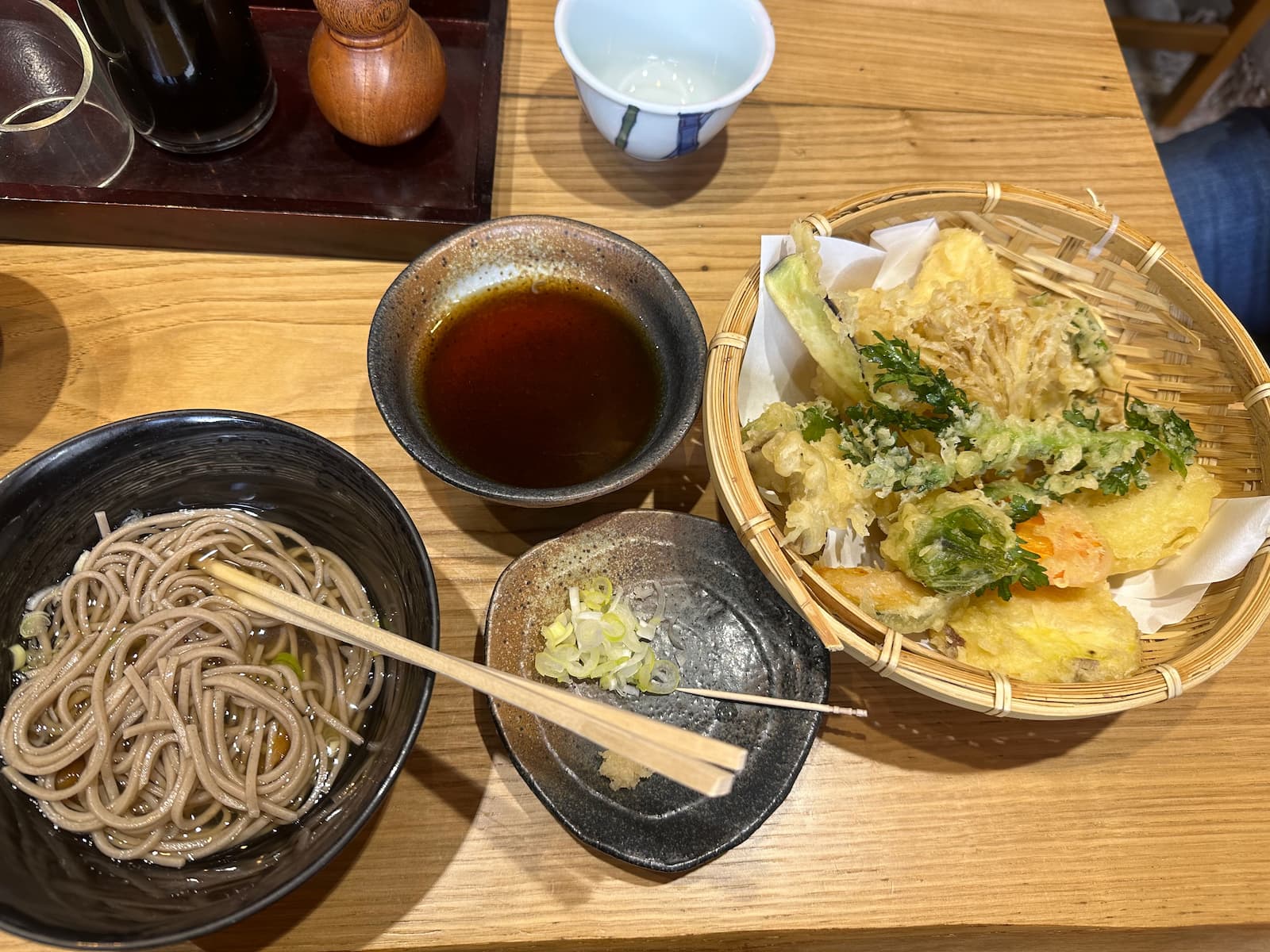 Lunch at Matsuya in Ainokura village[/caption]
Lunch at Matsuya in Ainokura village[/caption]
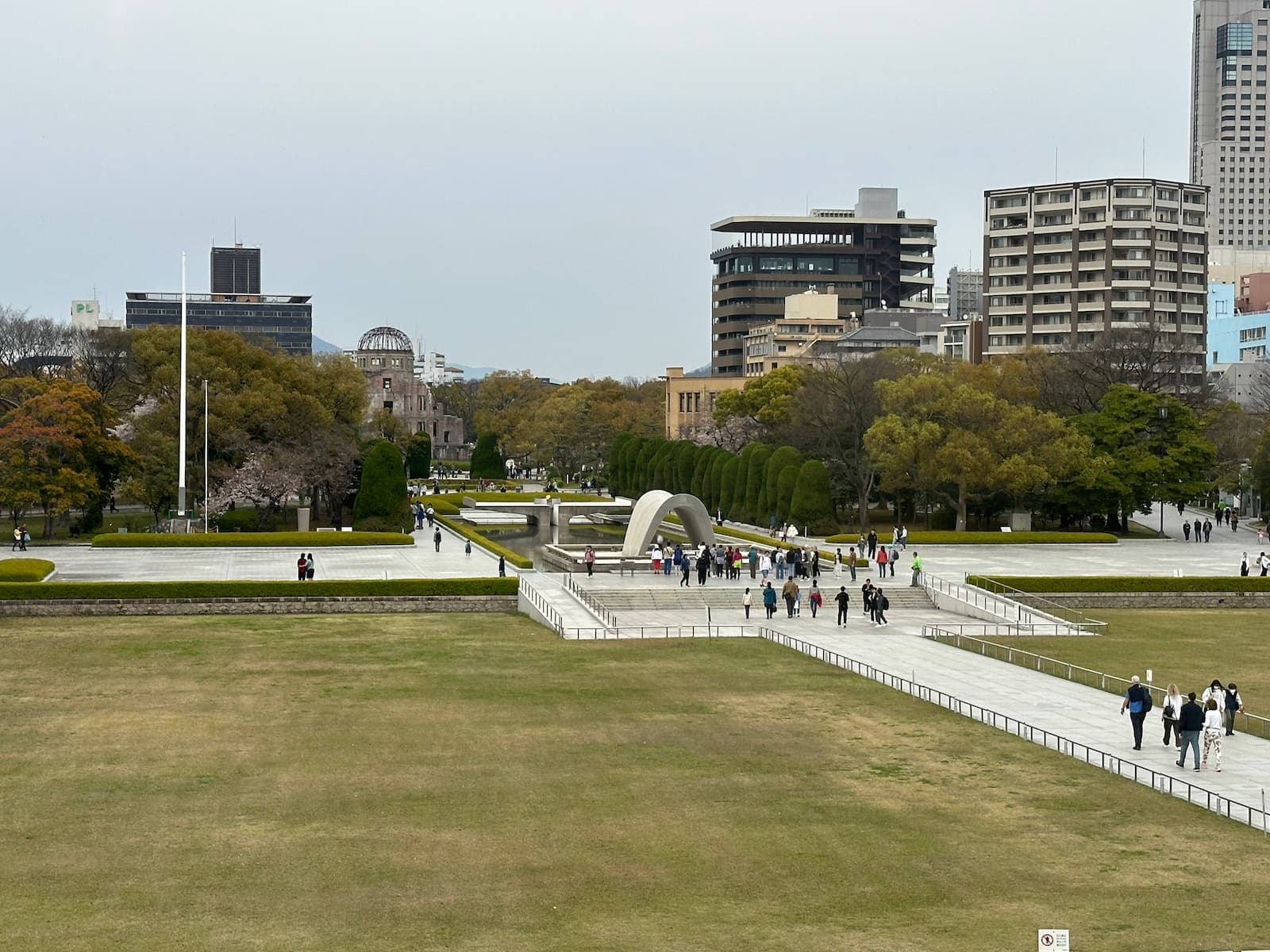
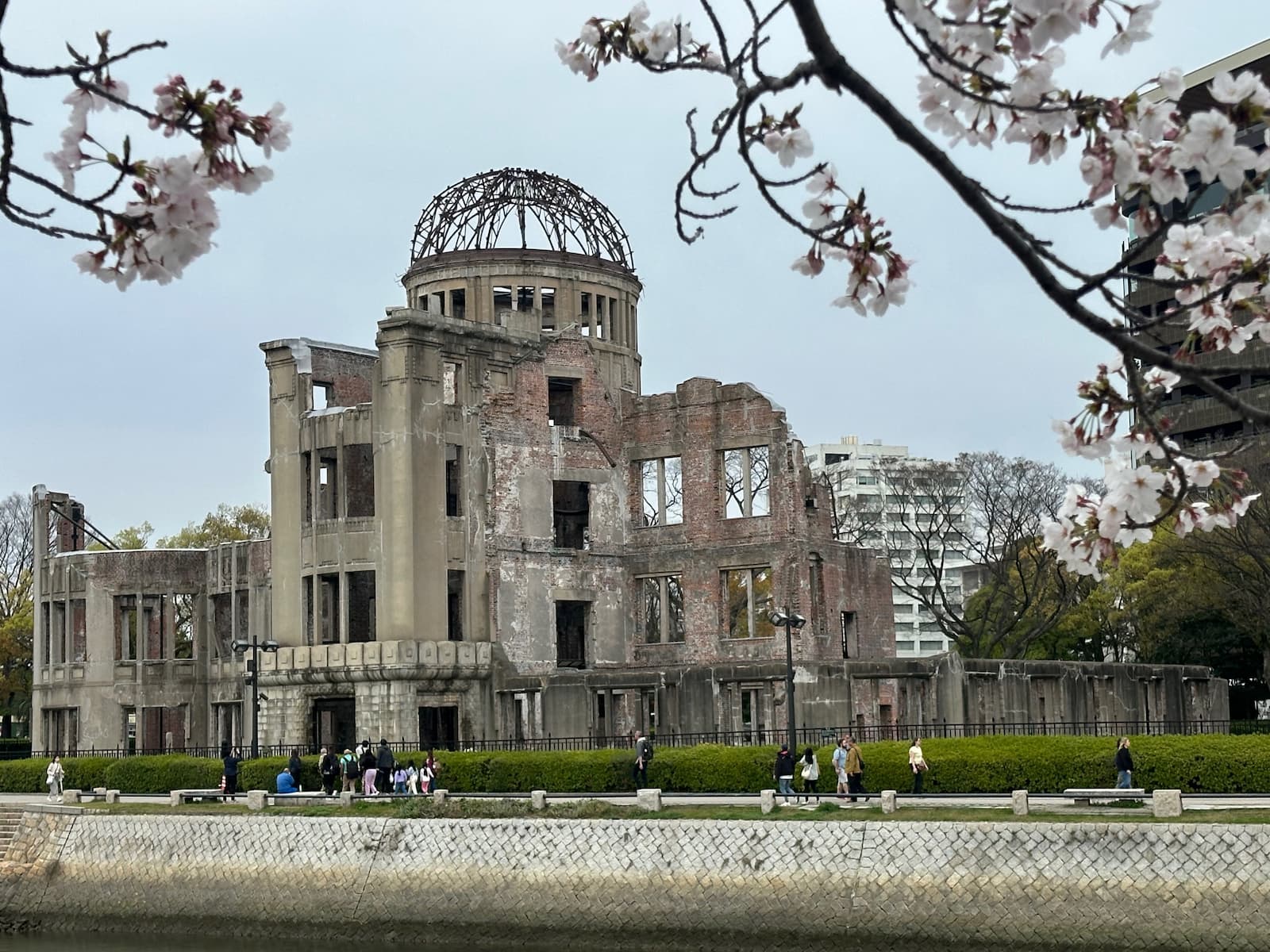
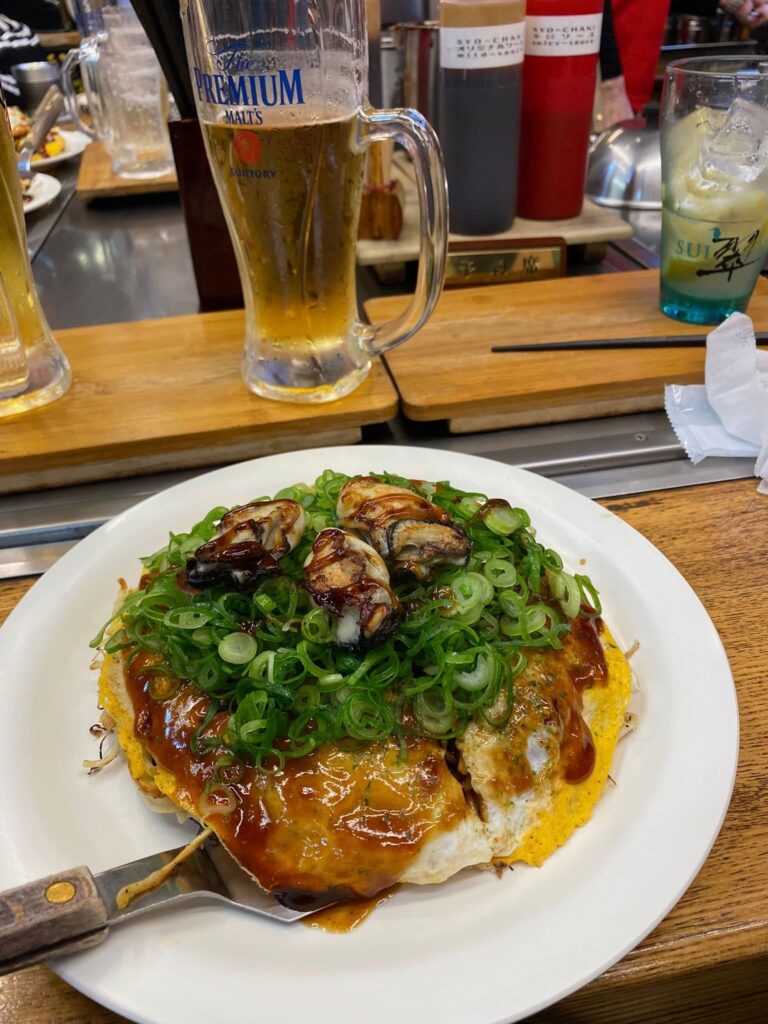
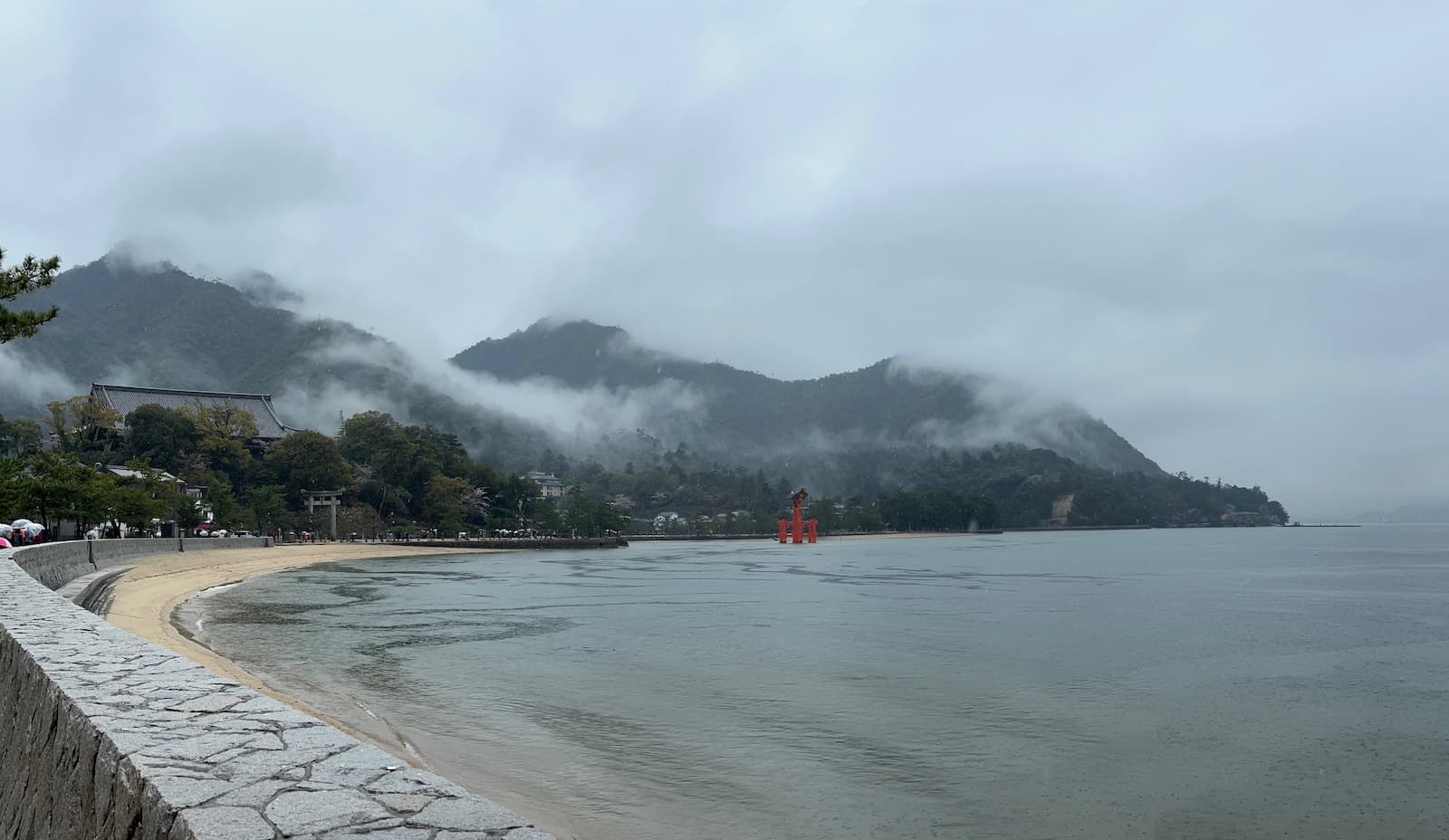
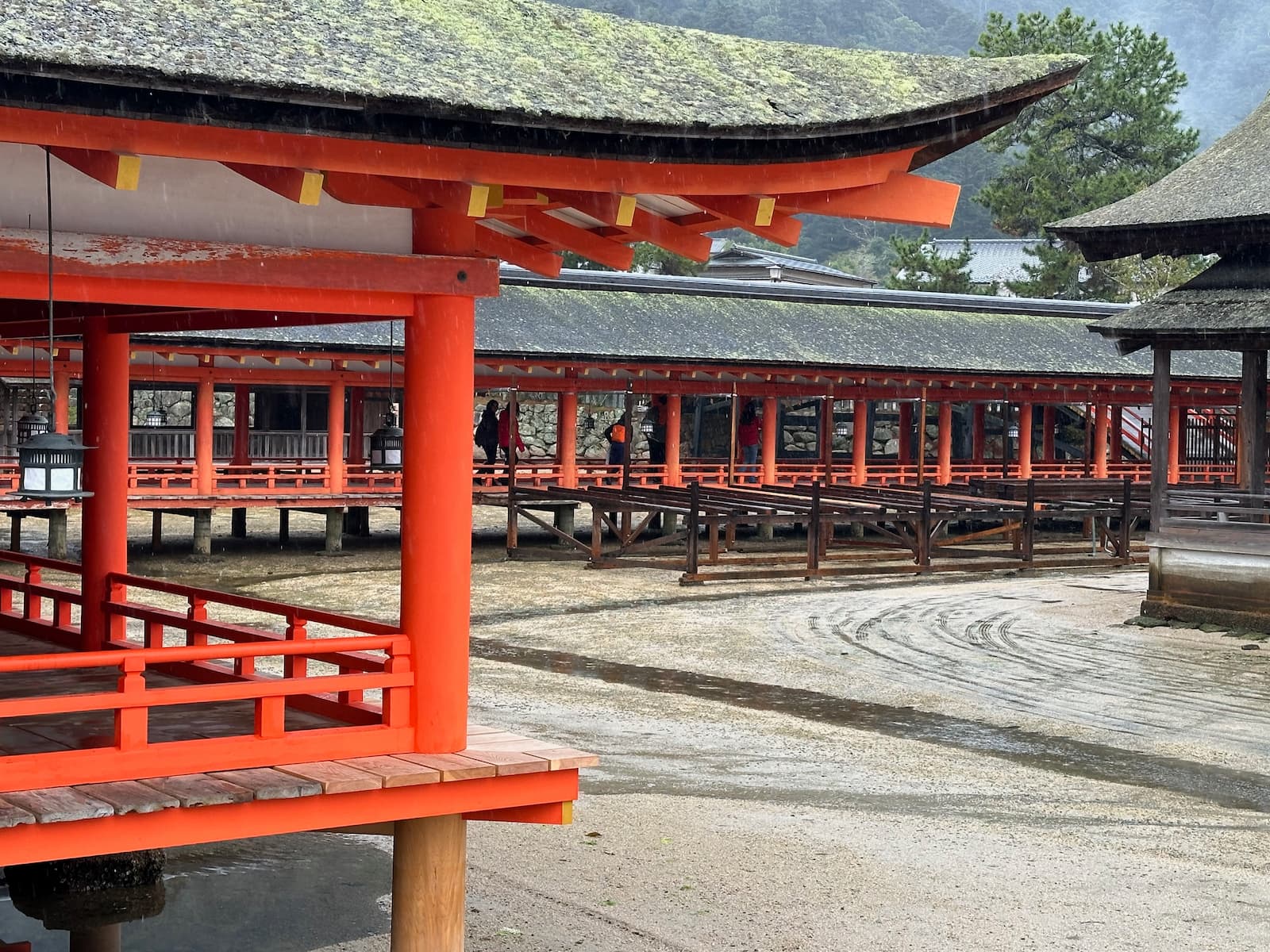
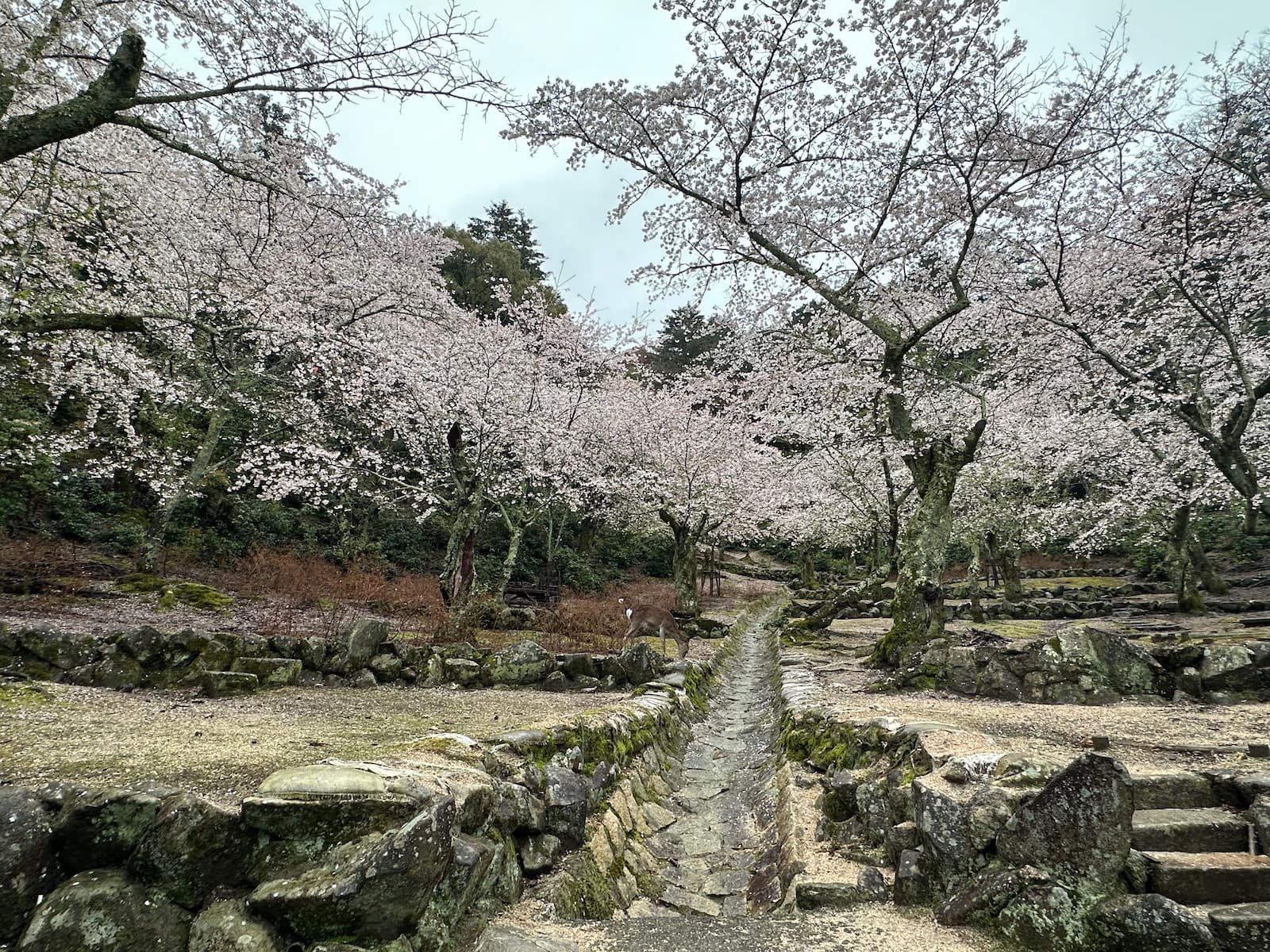
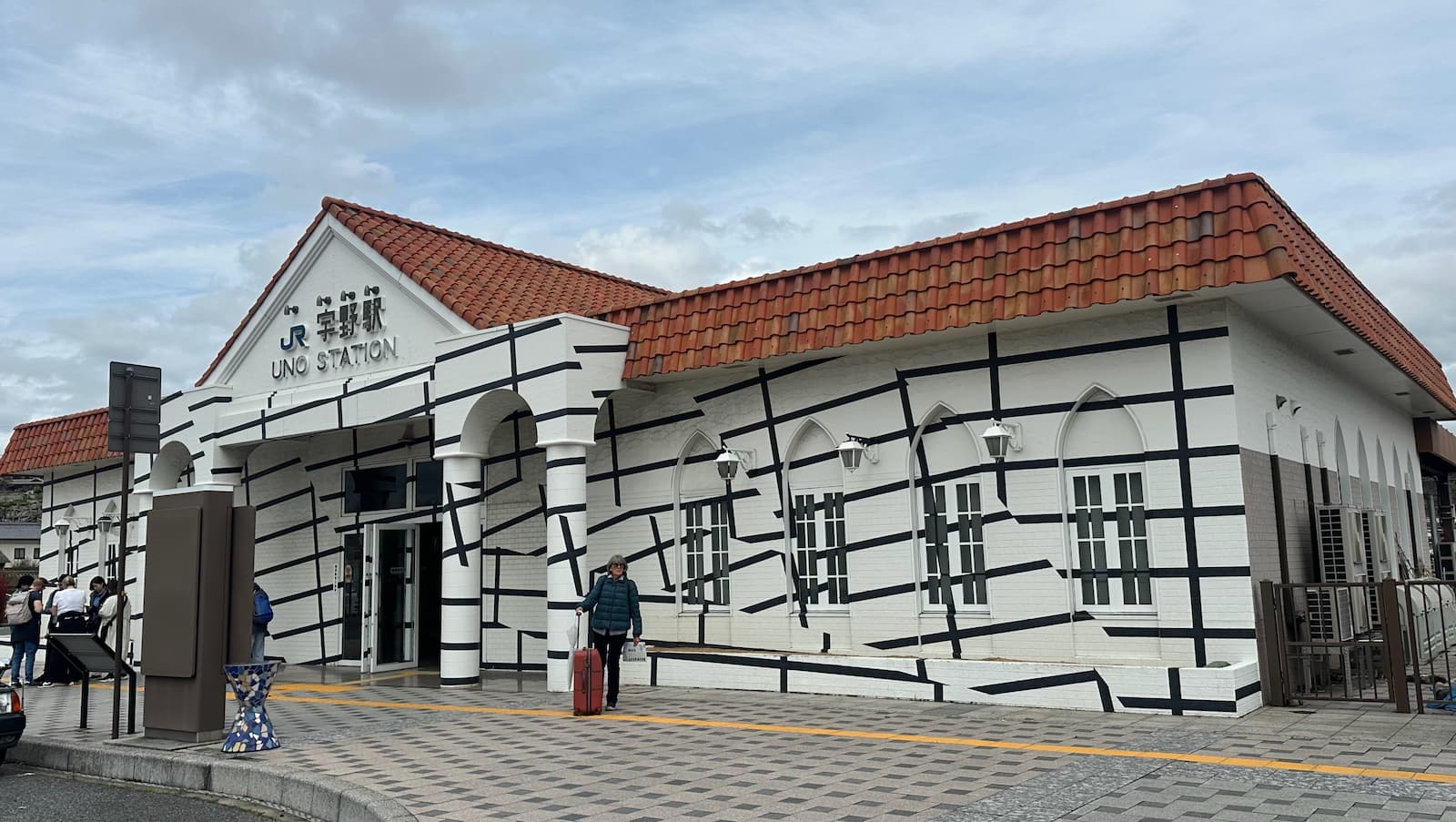
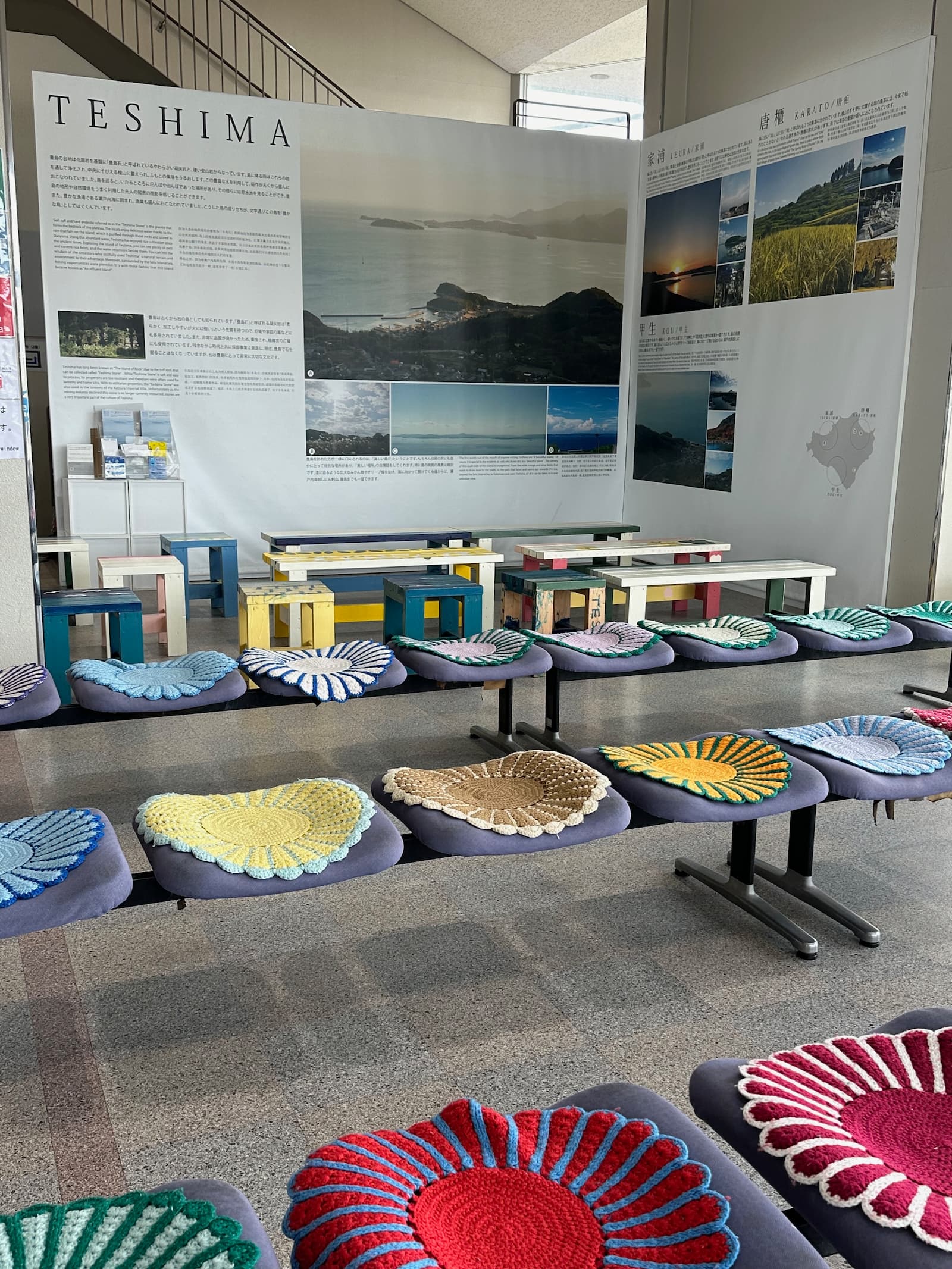
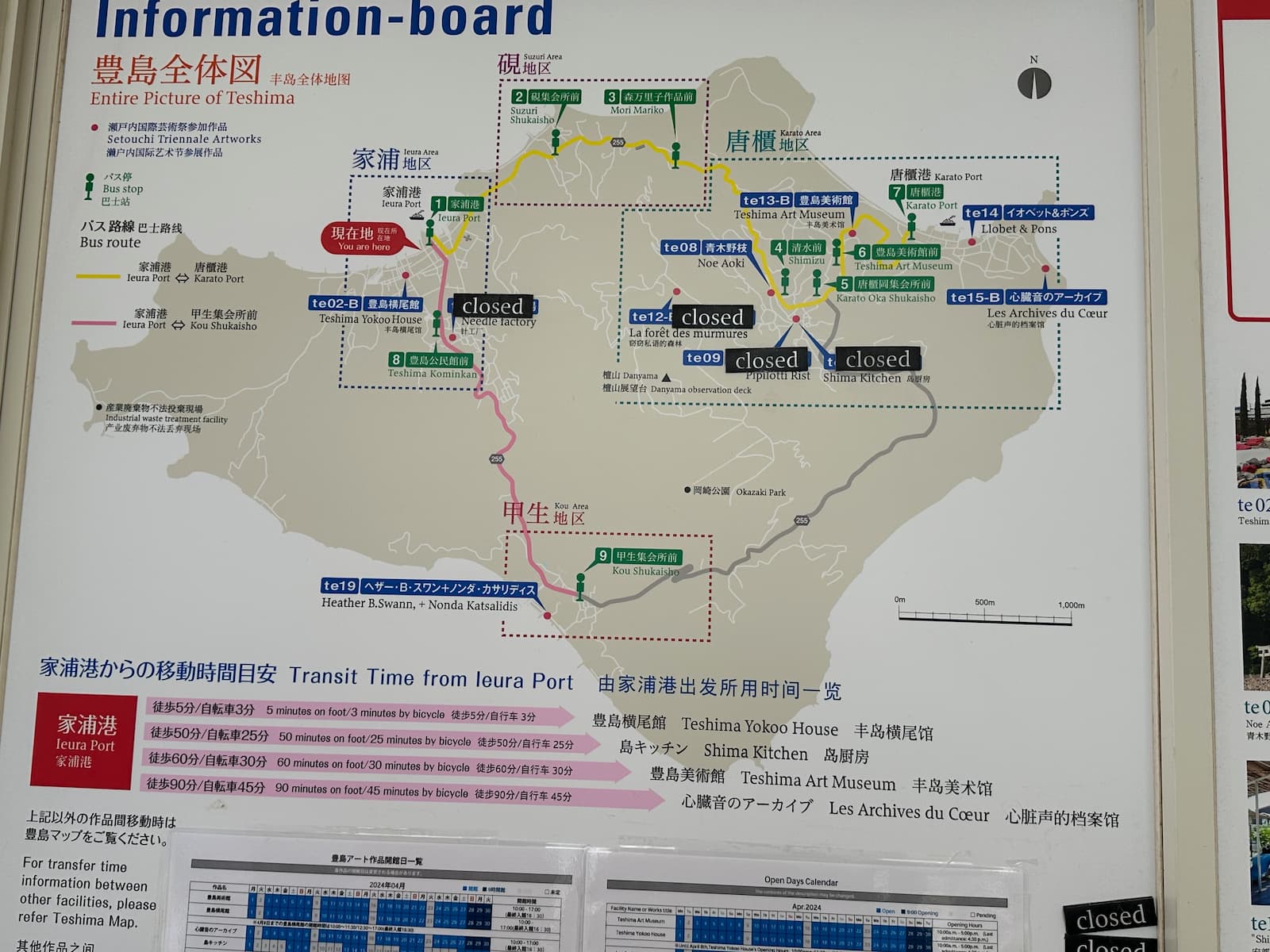
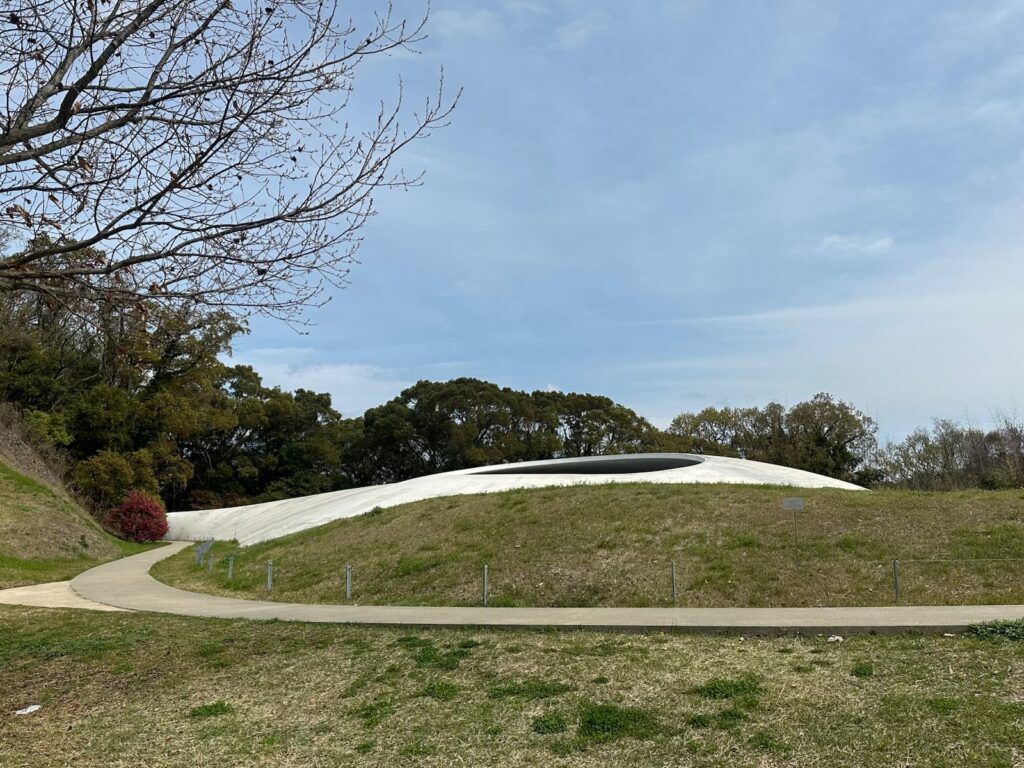
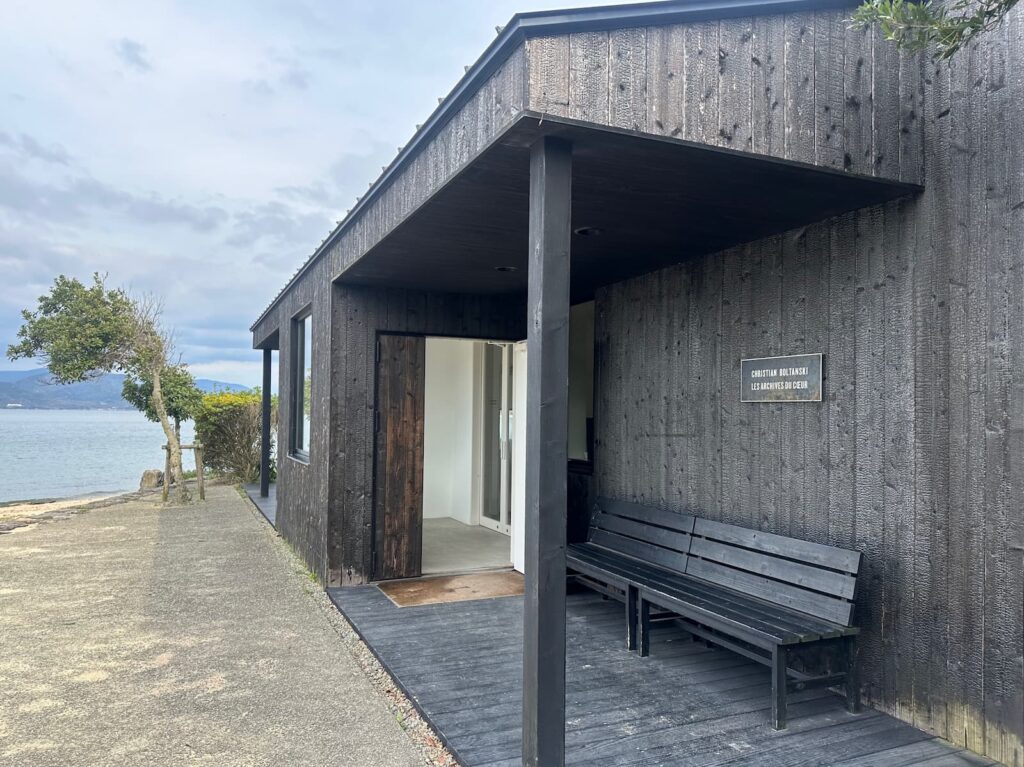
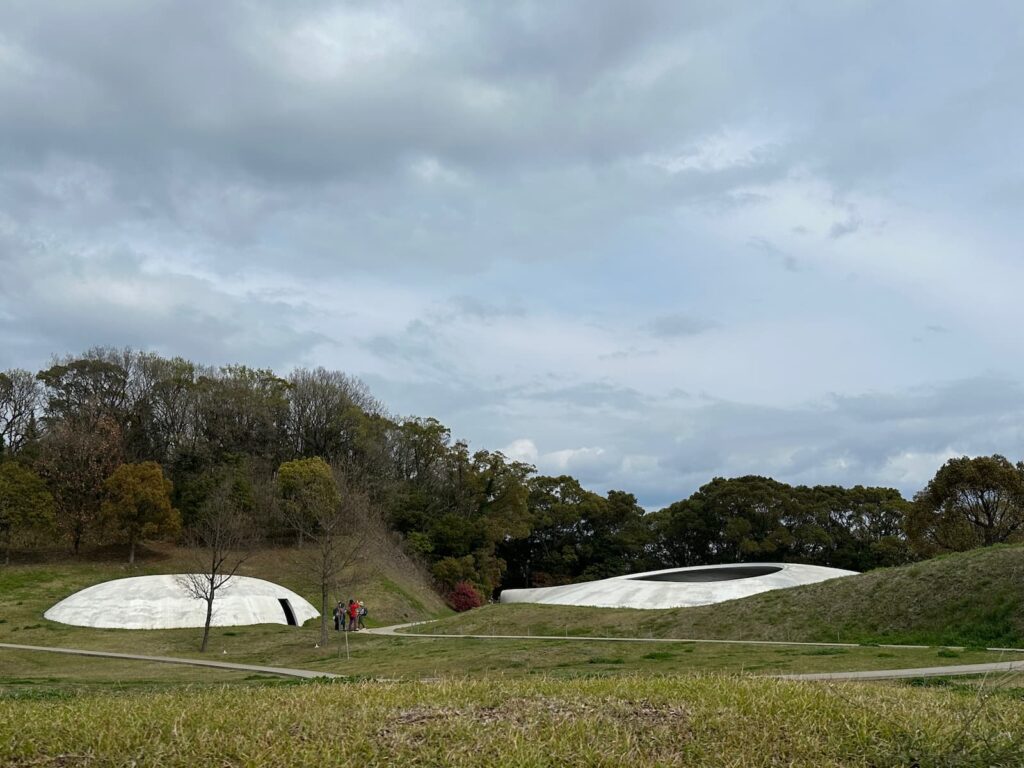
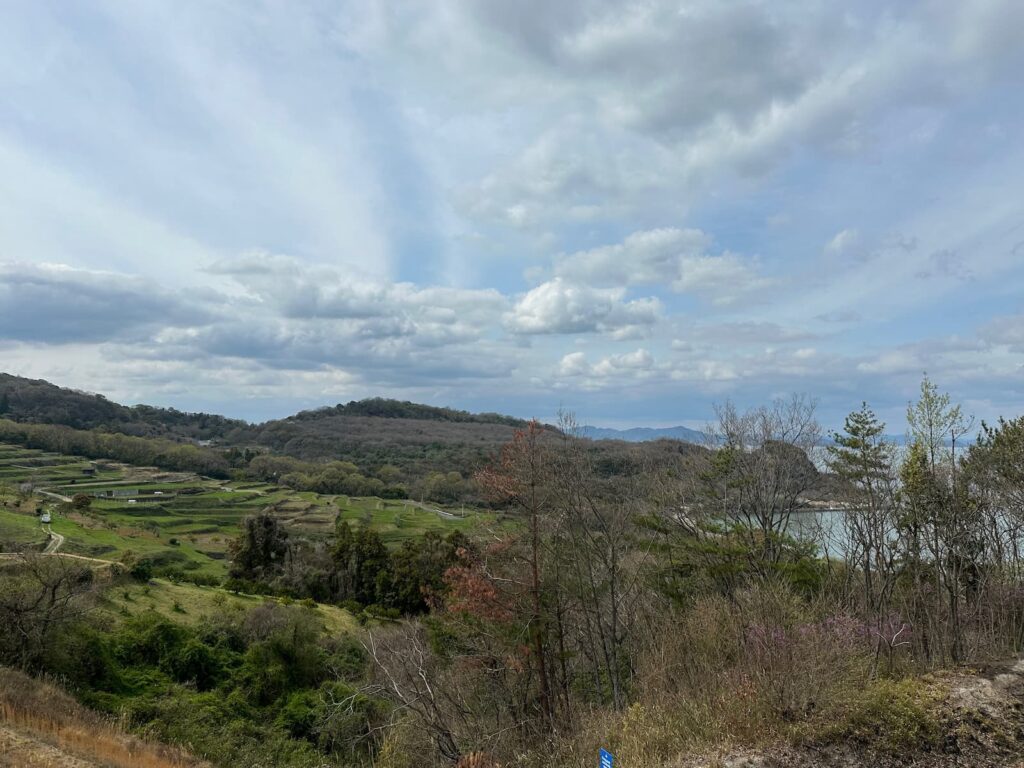
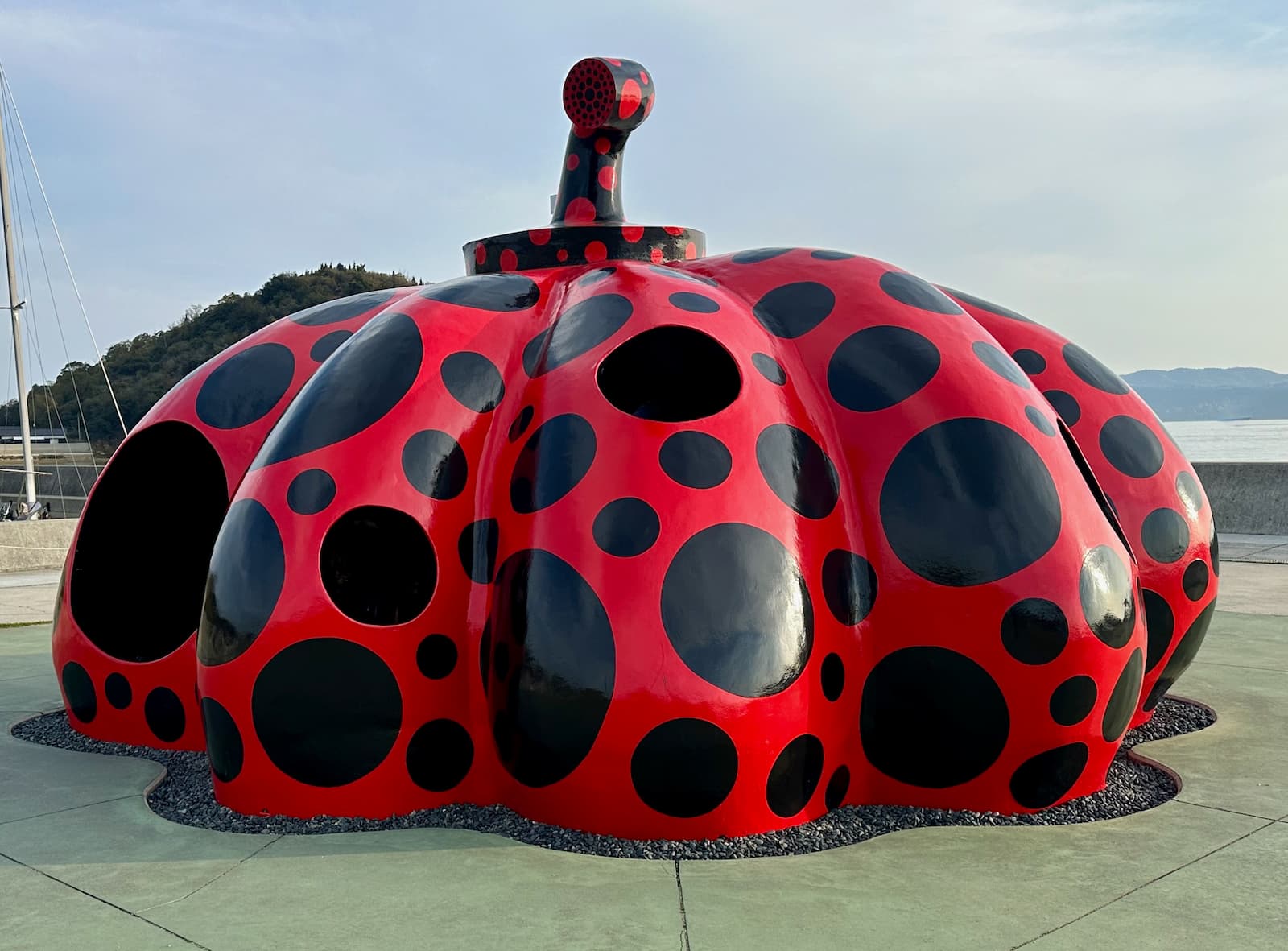
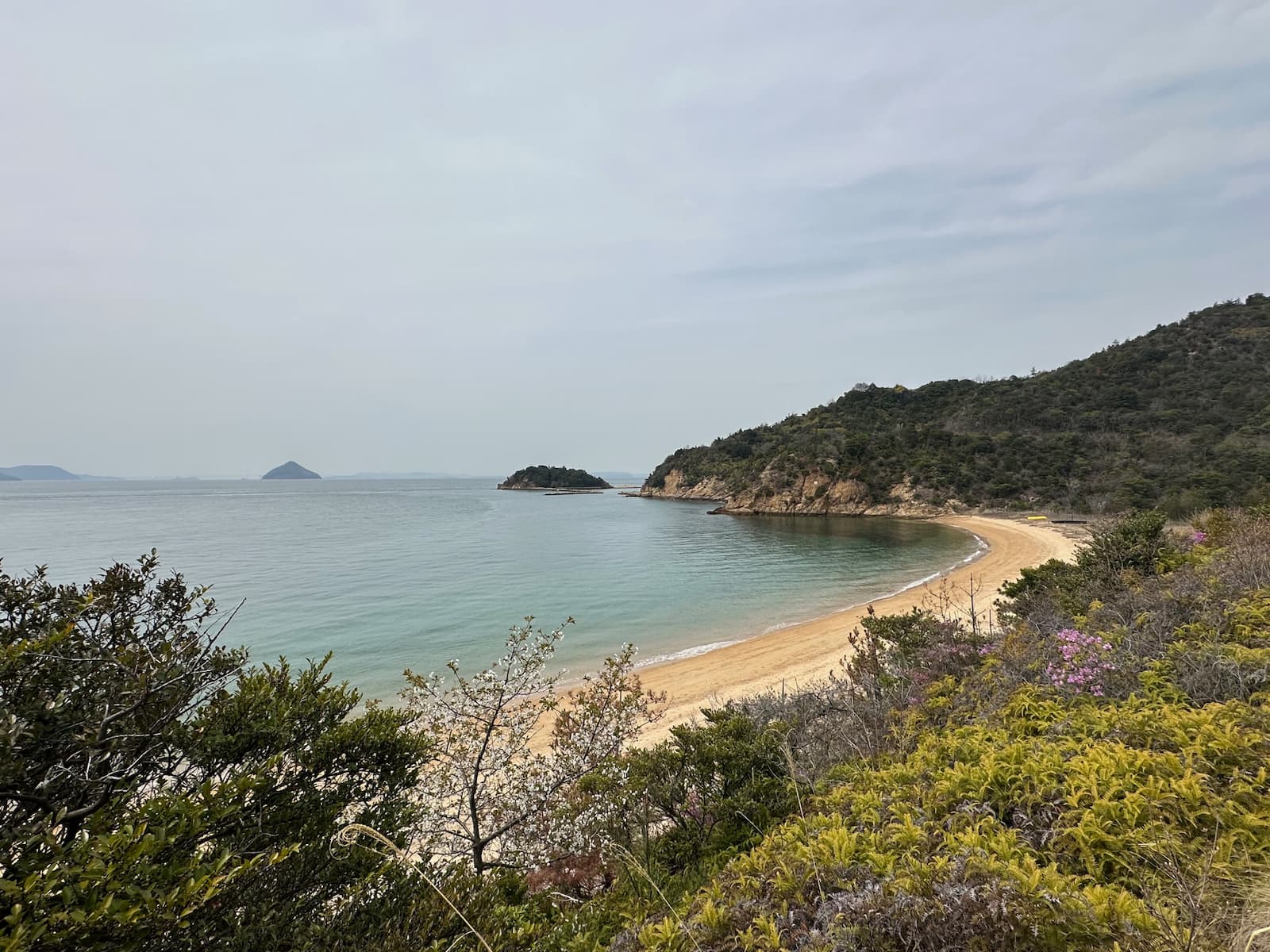
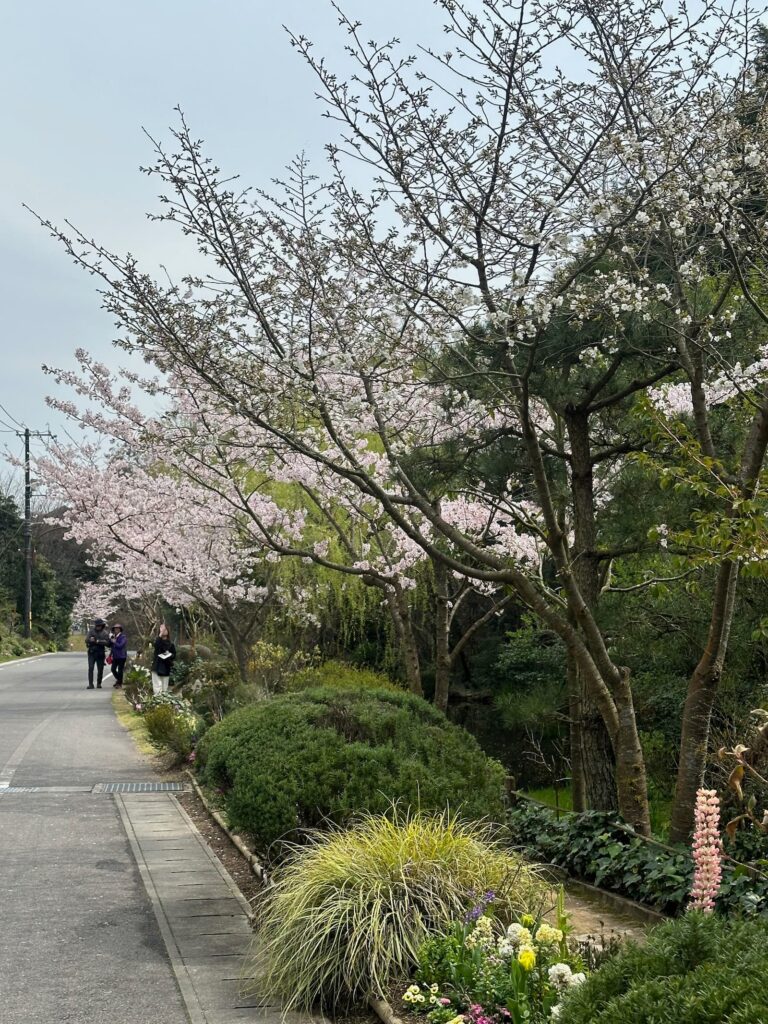

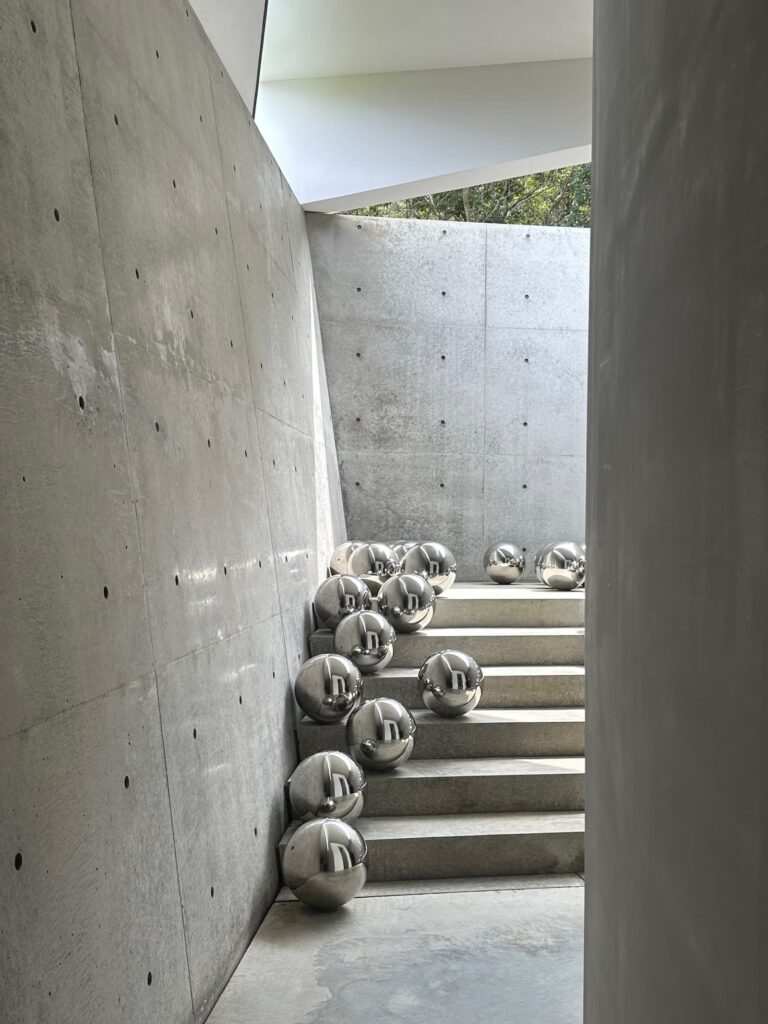

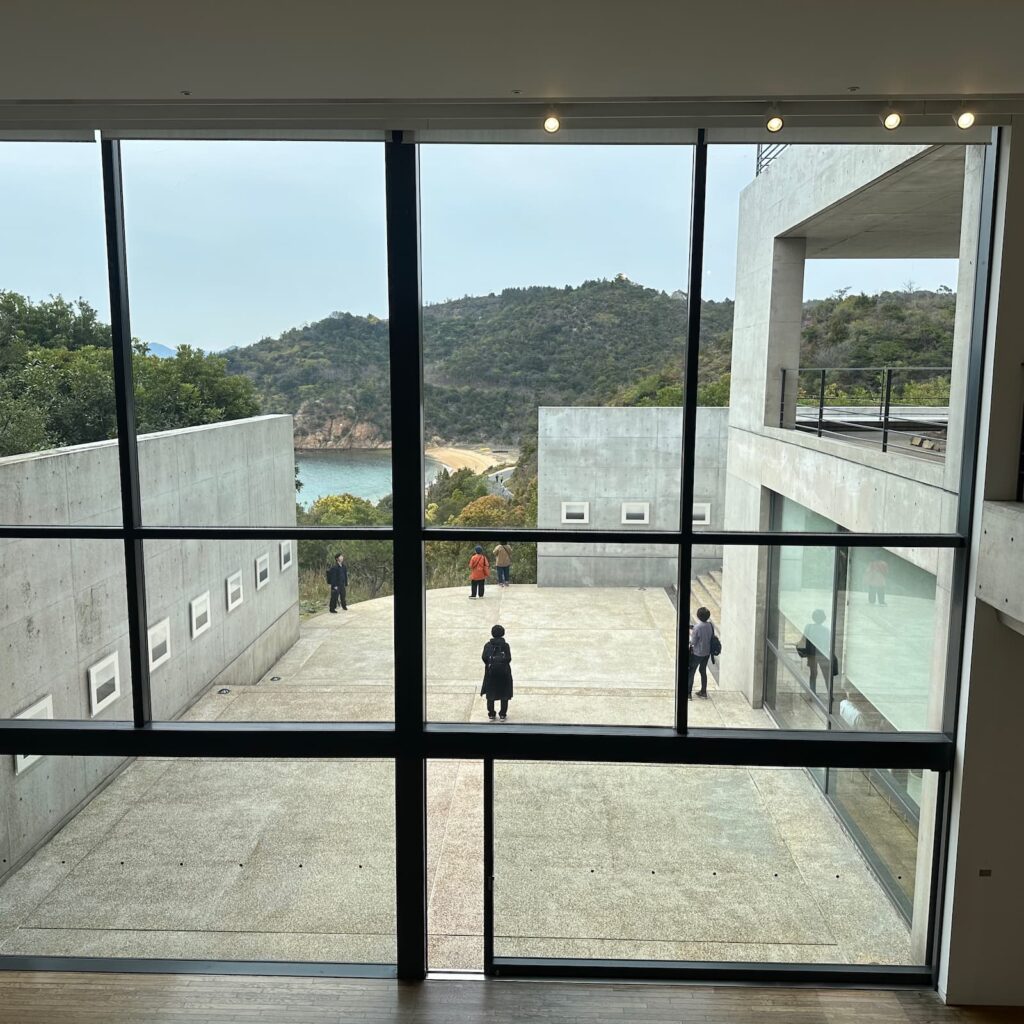
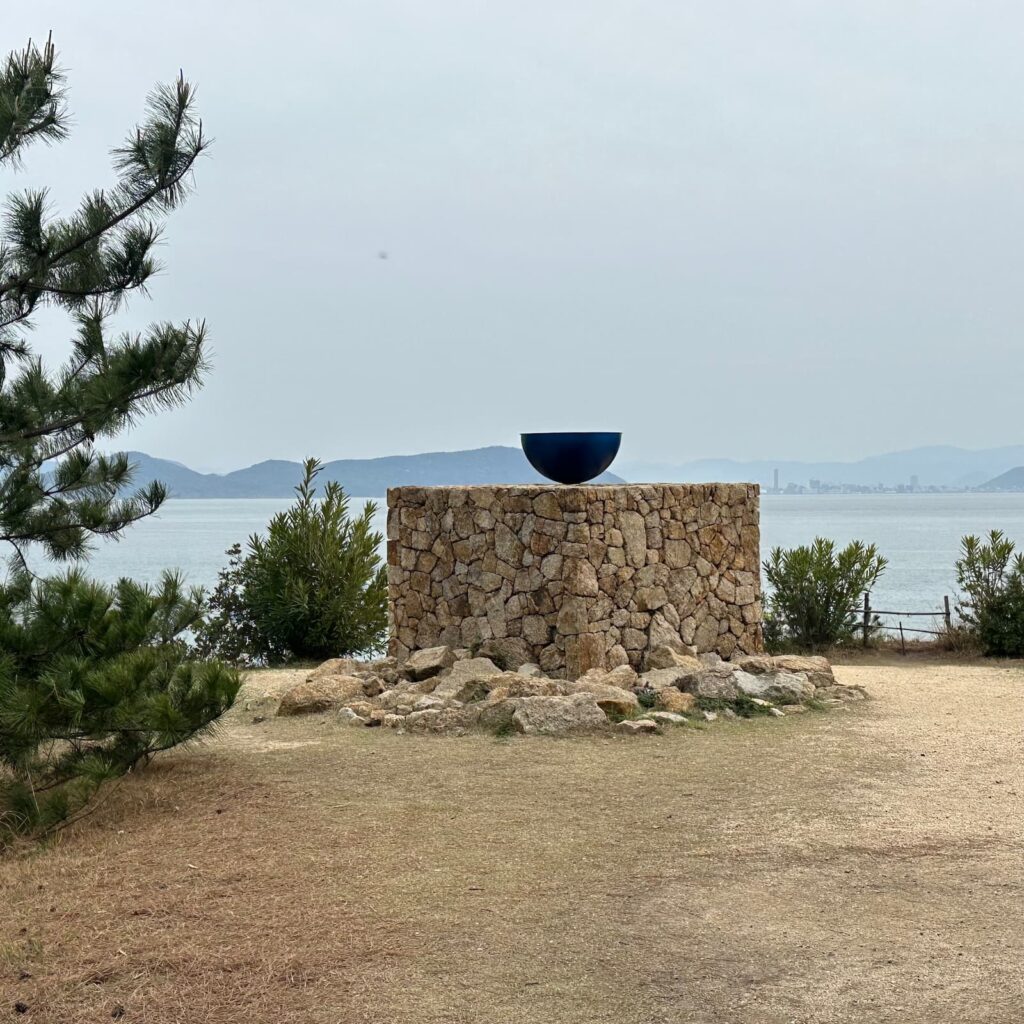
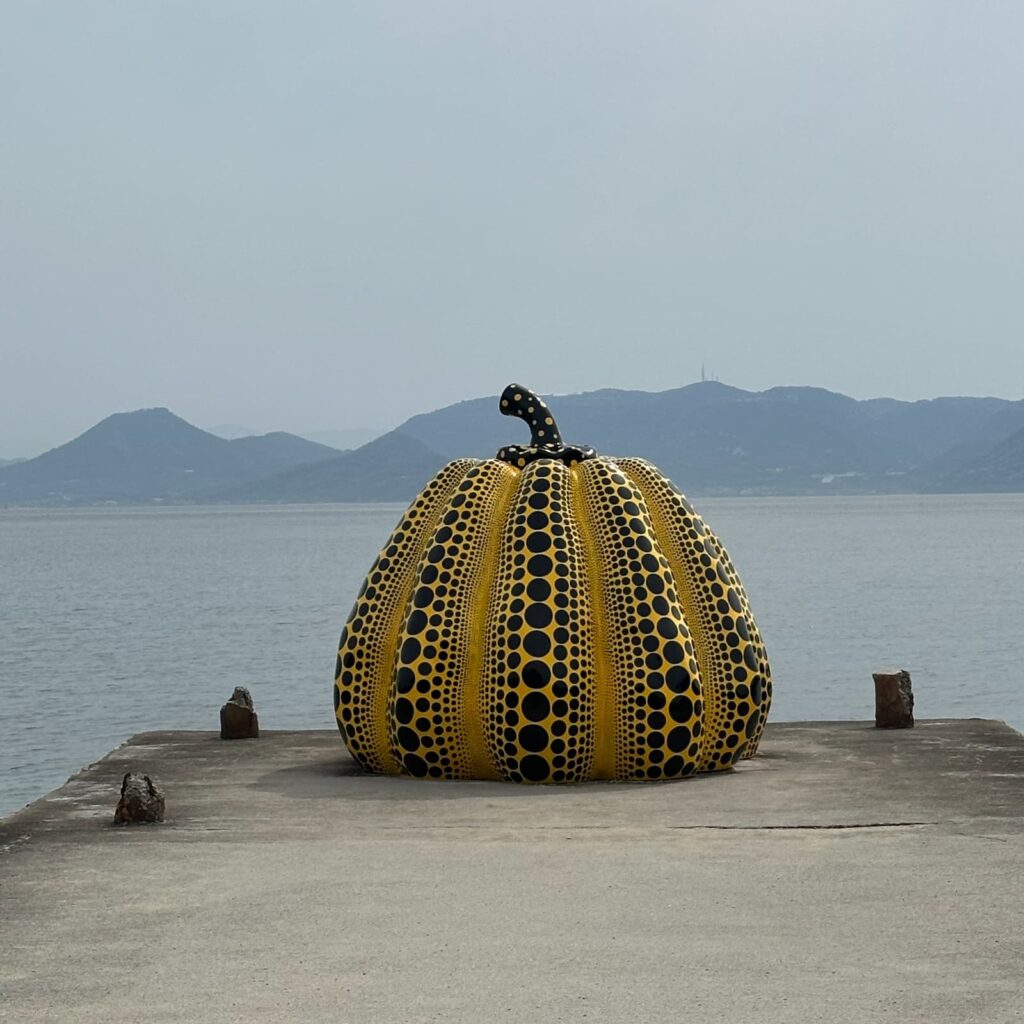

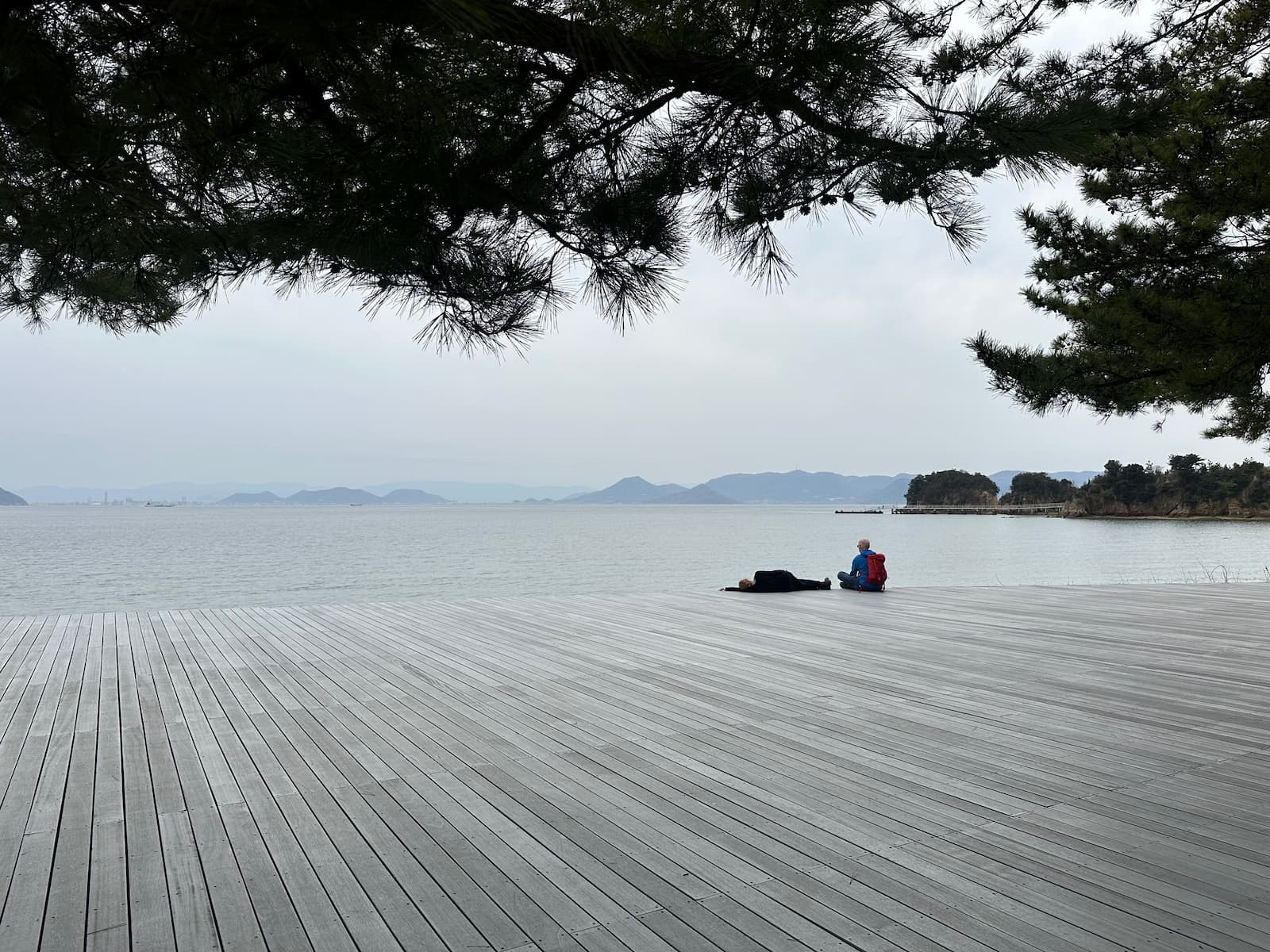
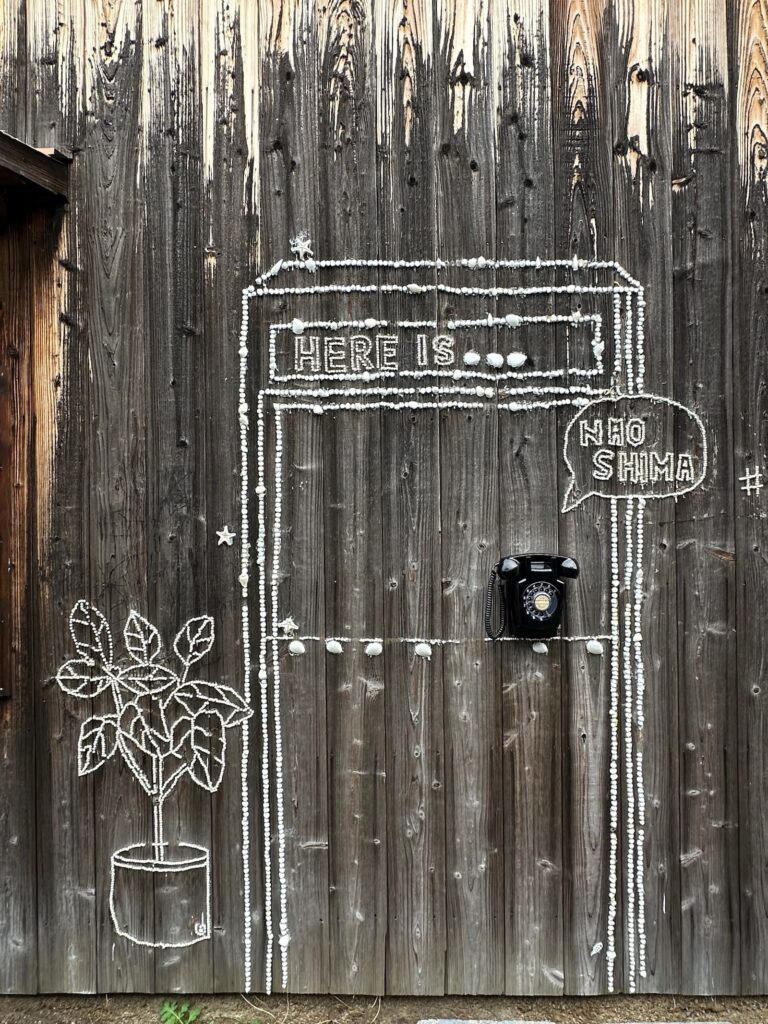
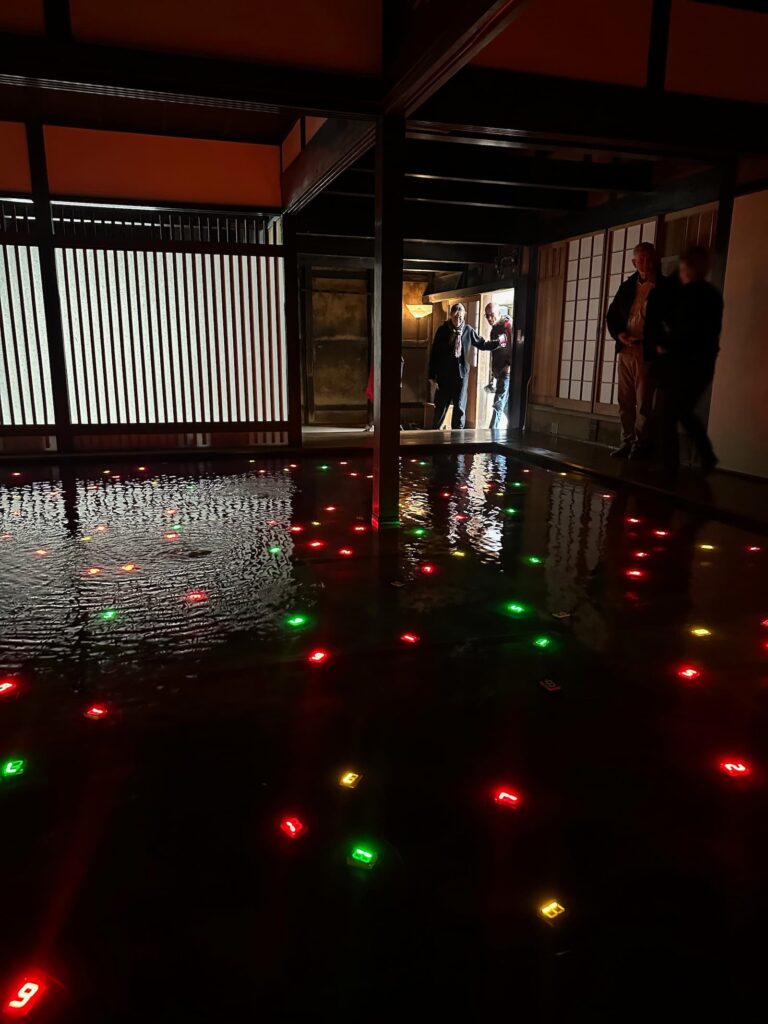
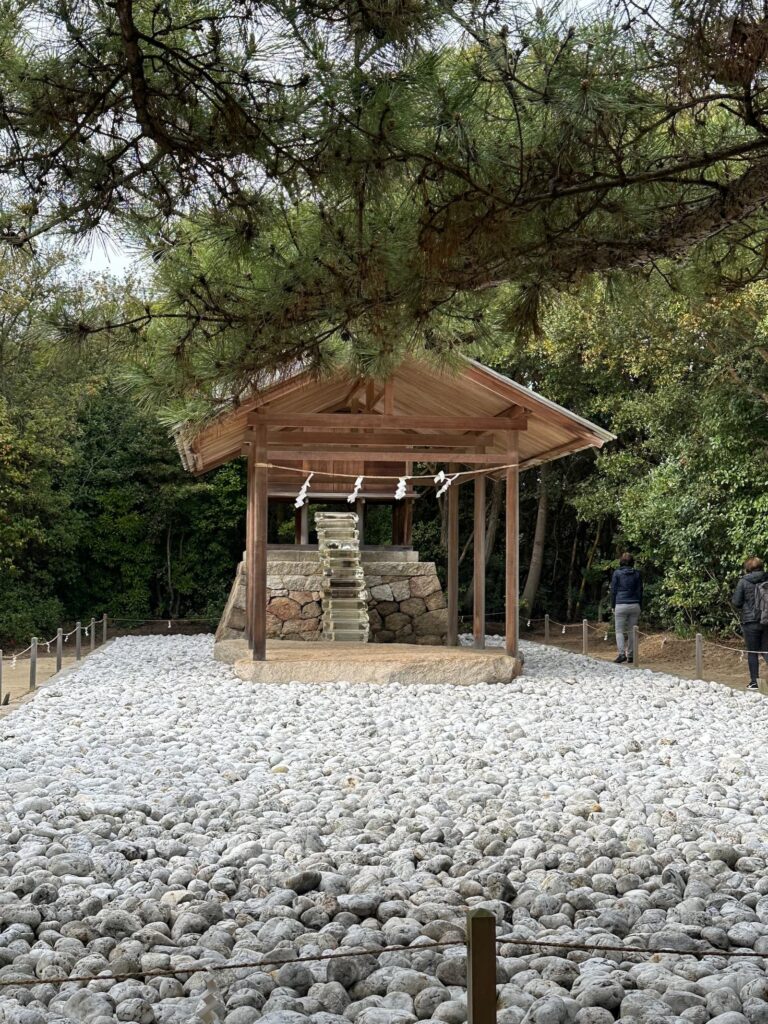
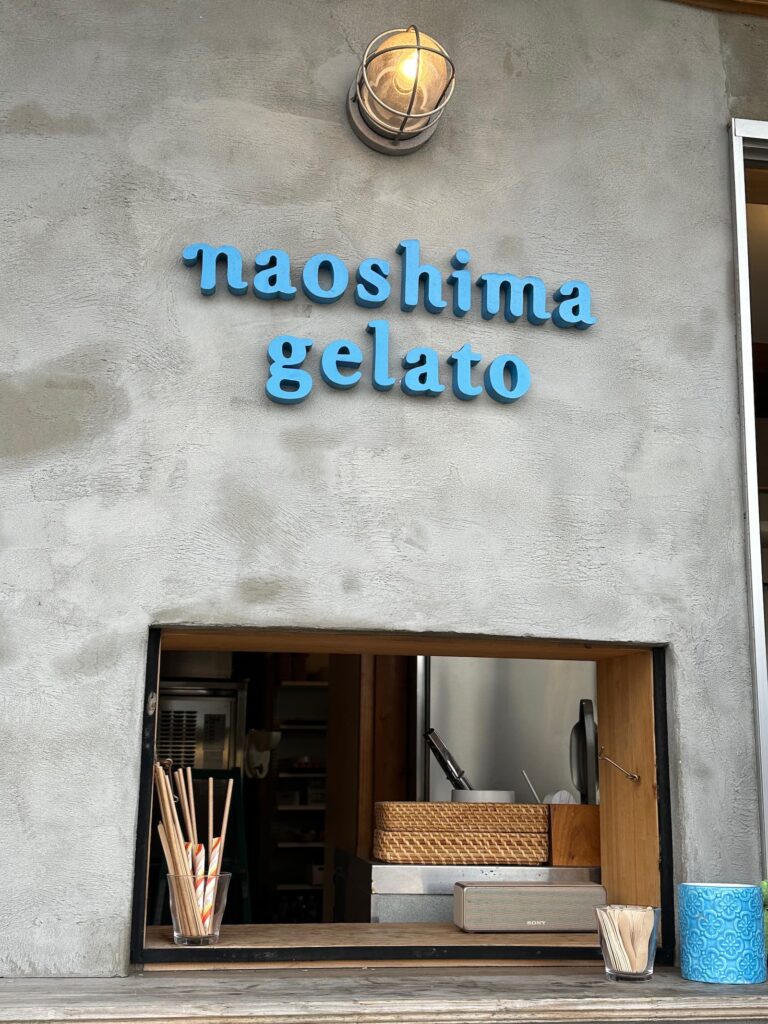
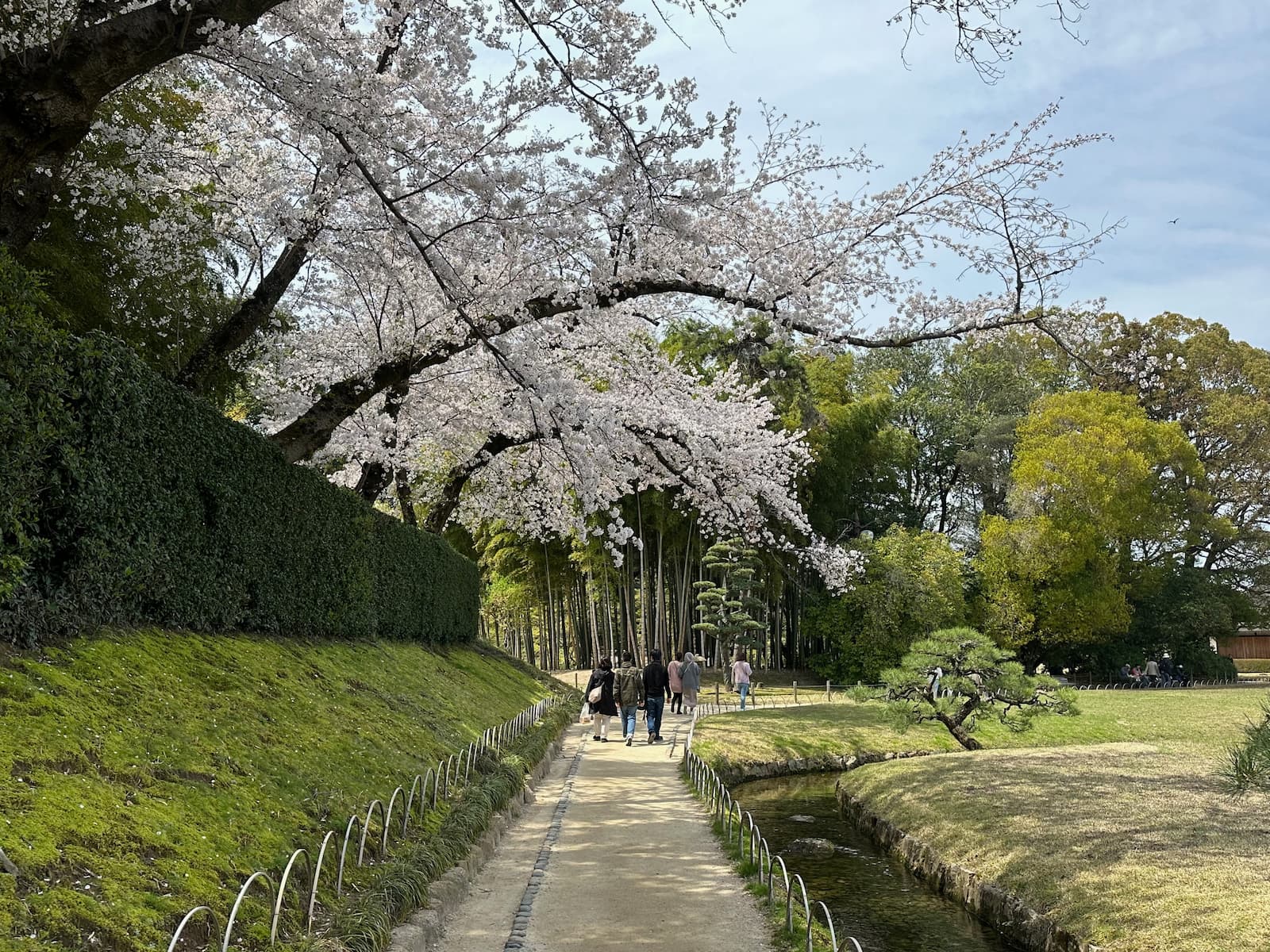
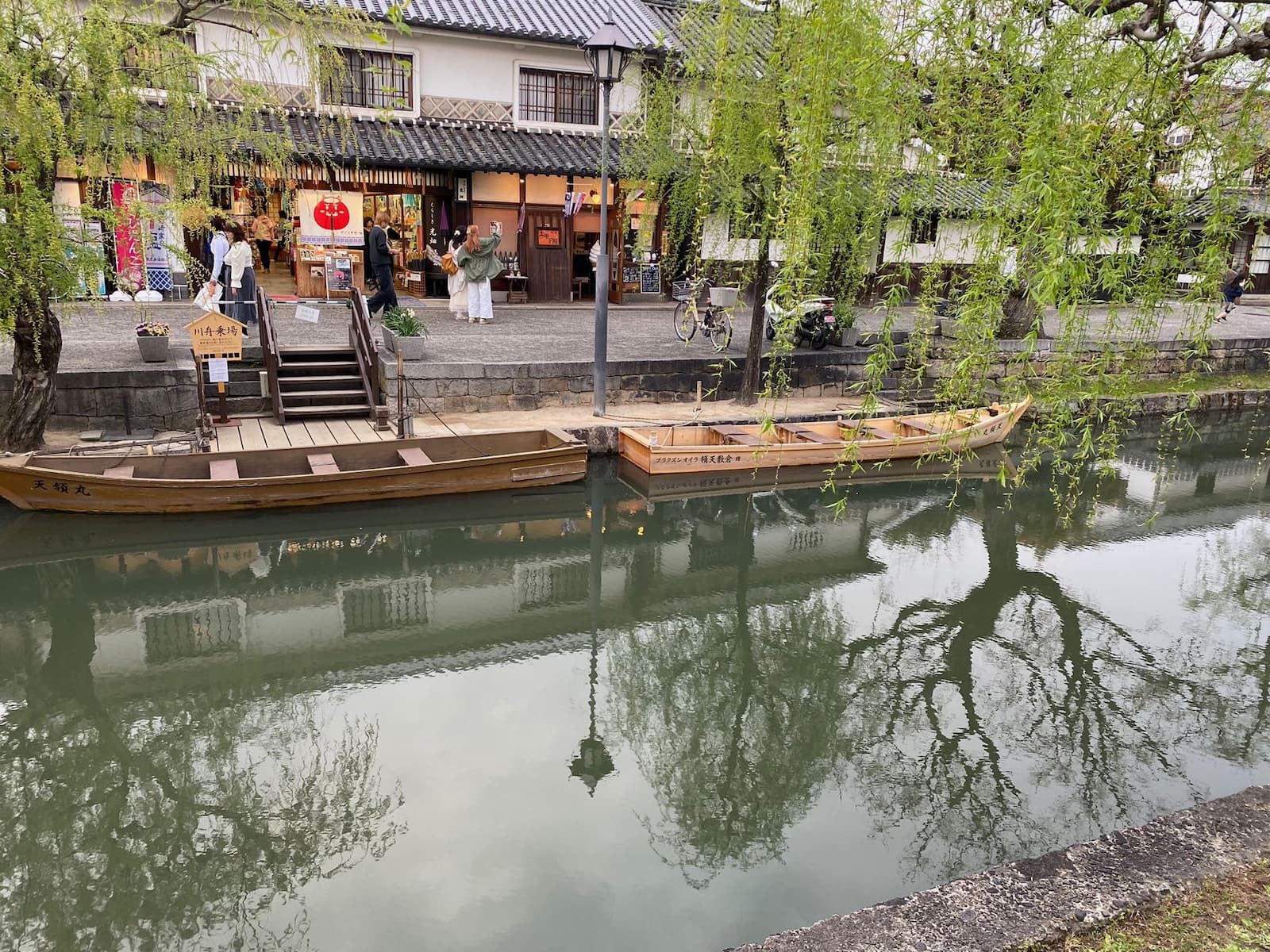
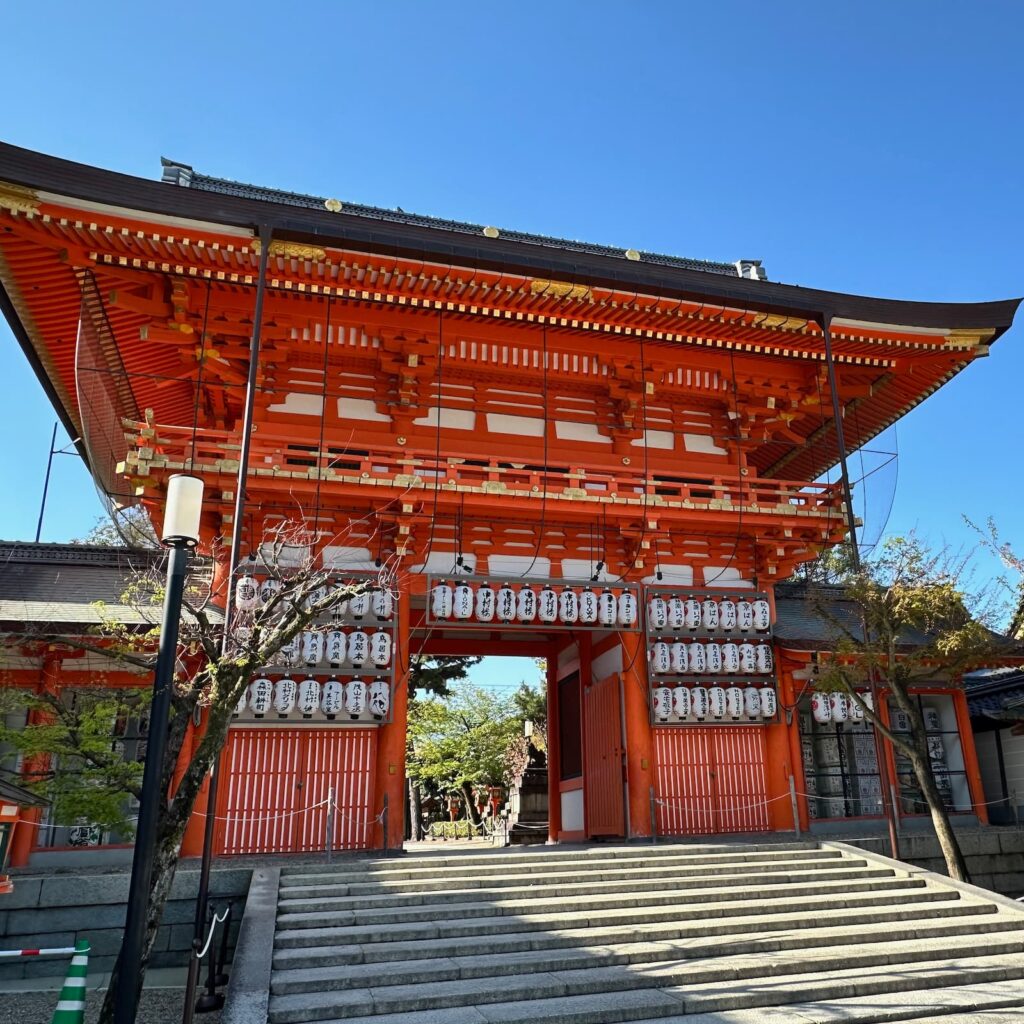
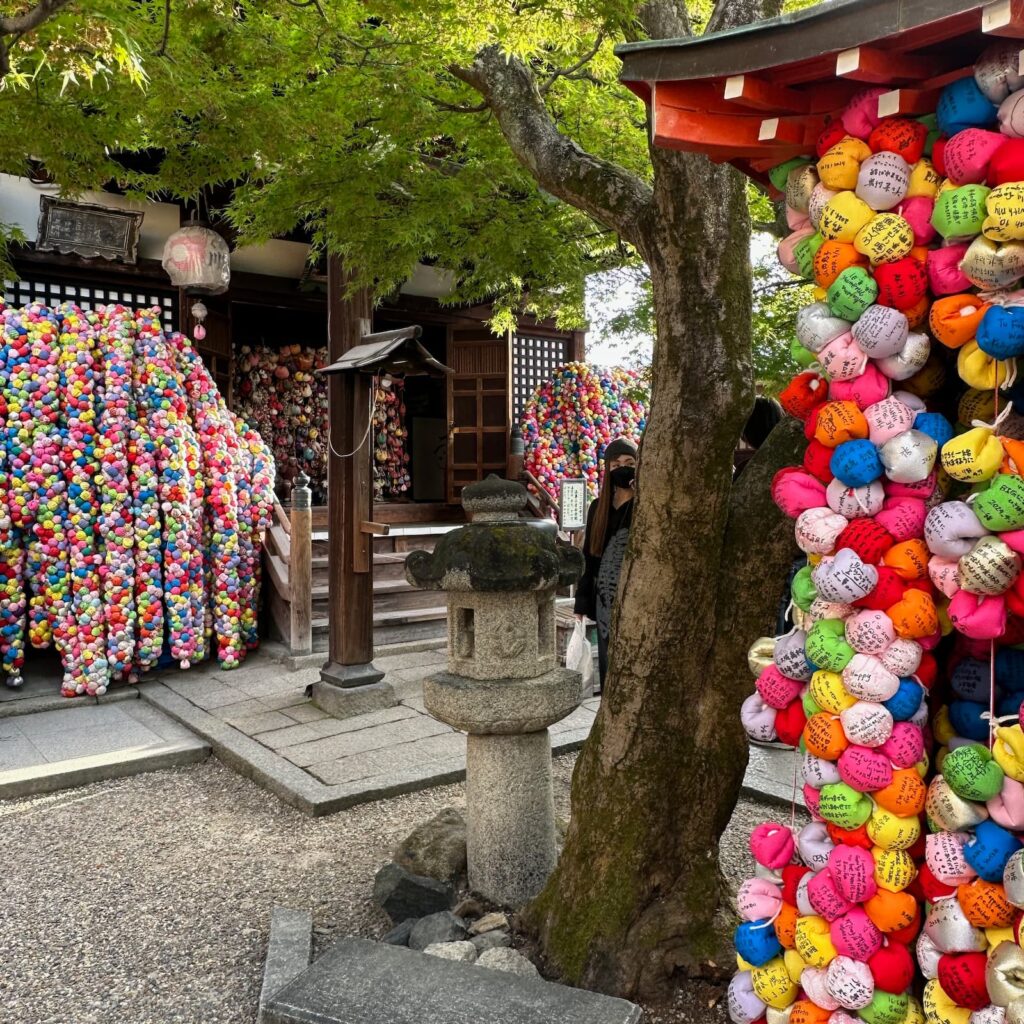
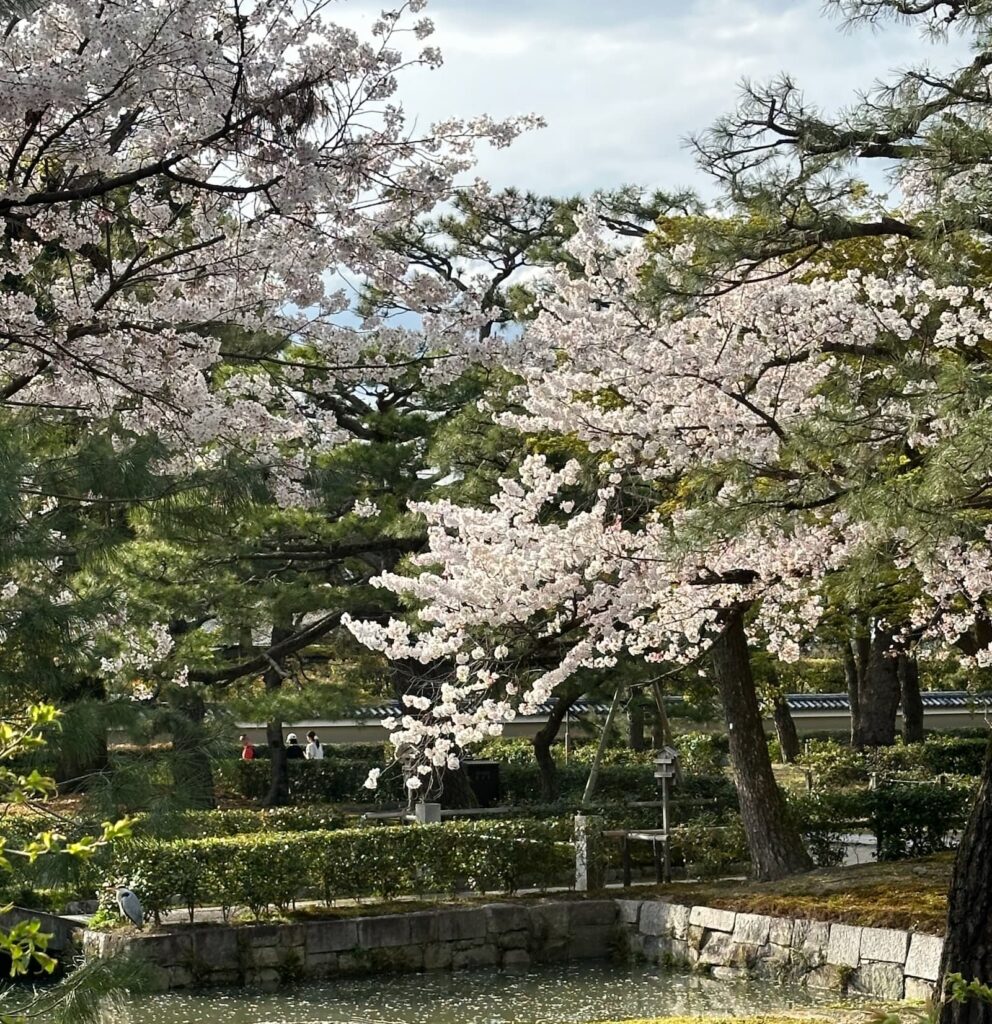
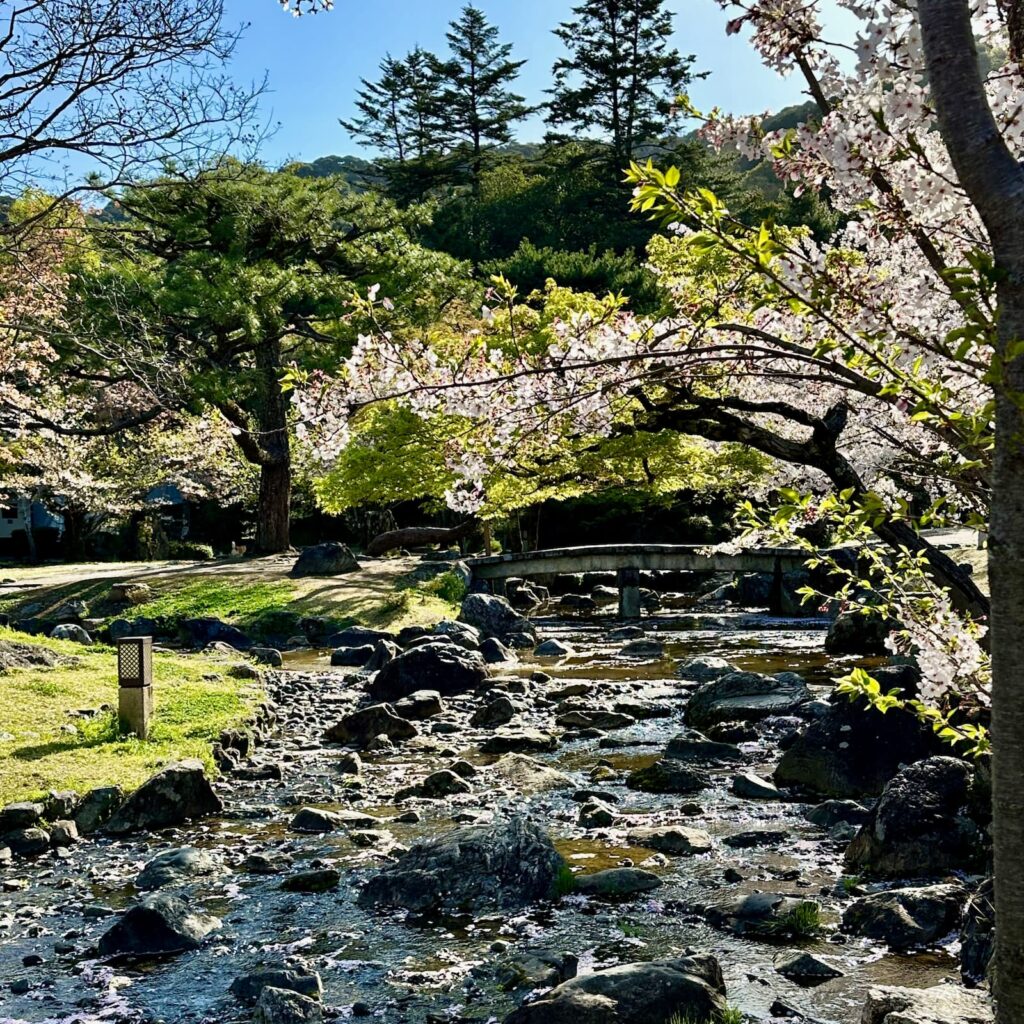
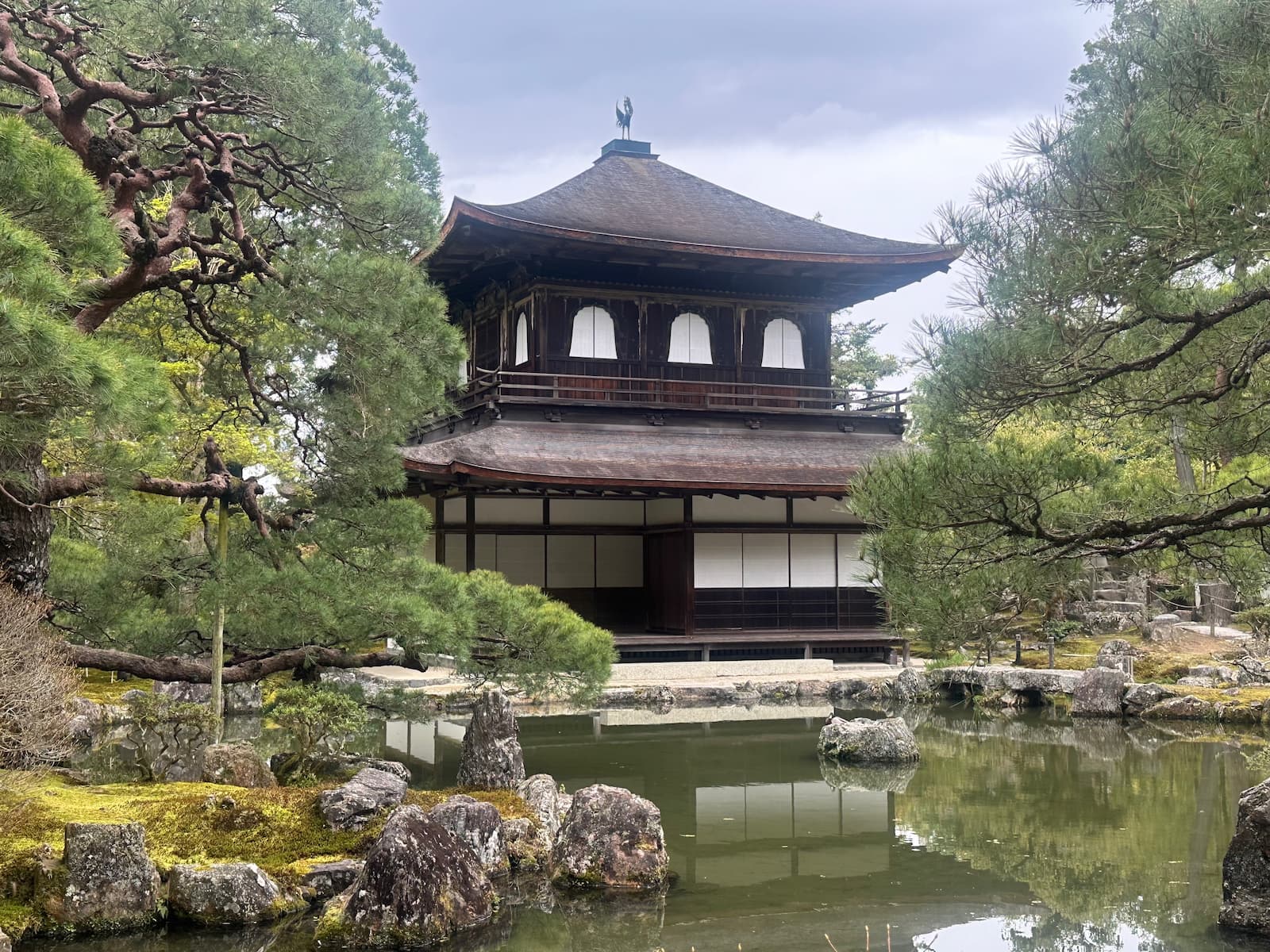
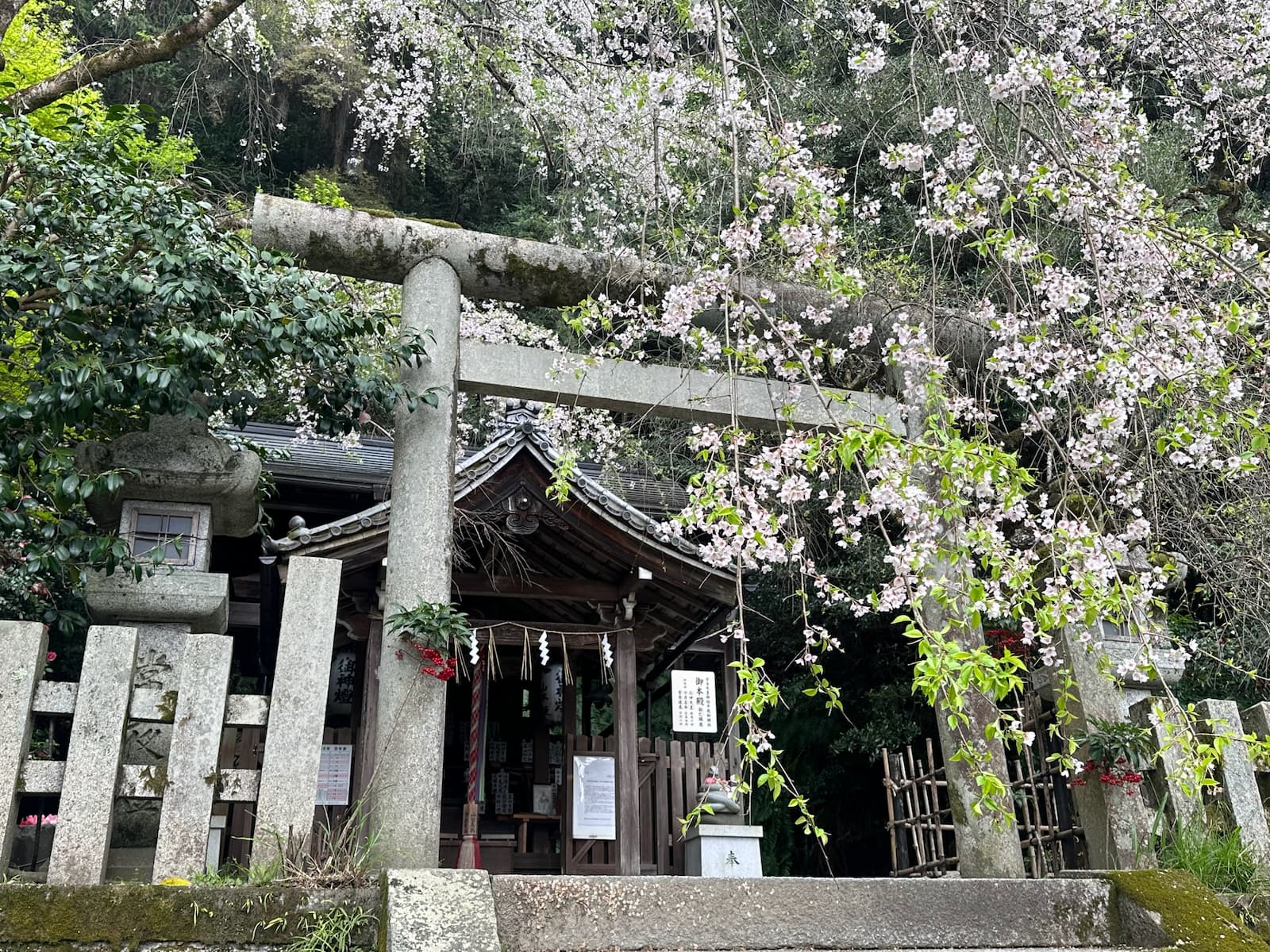
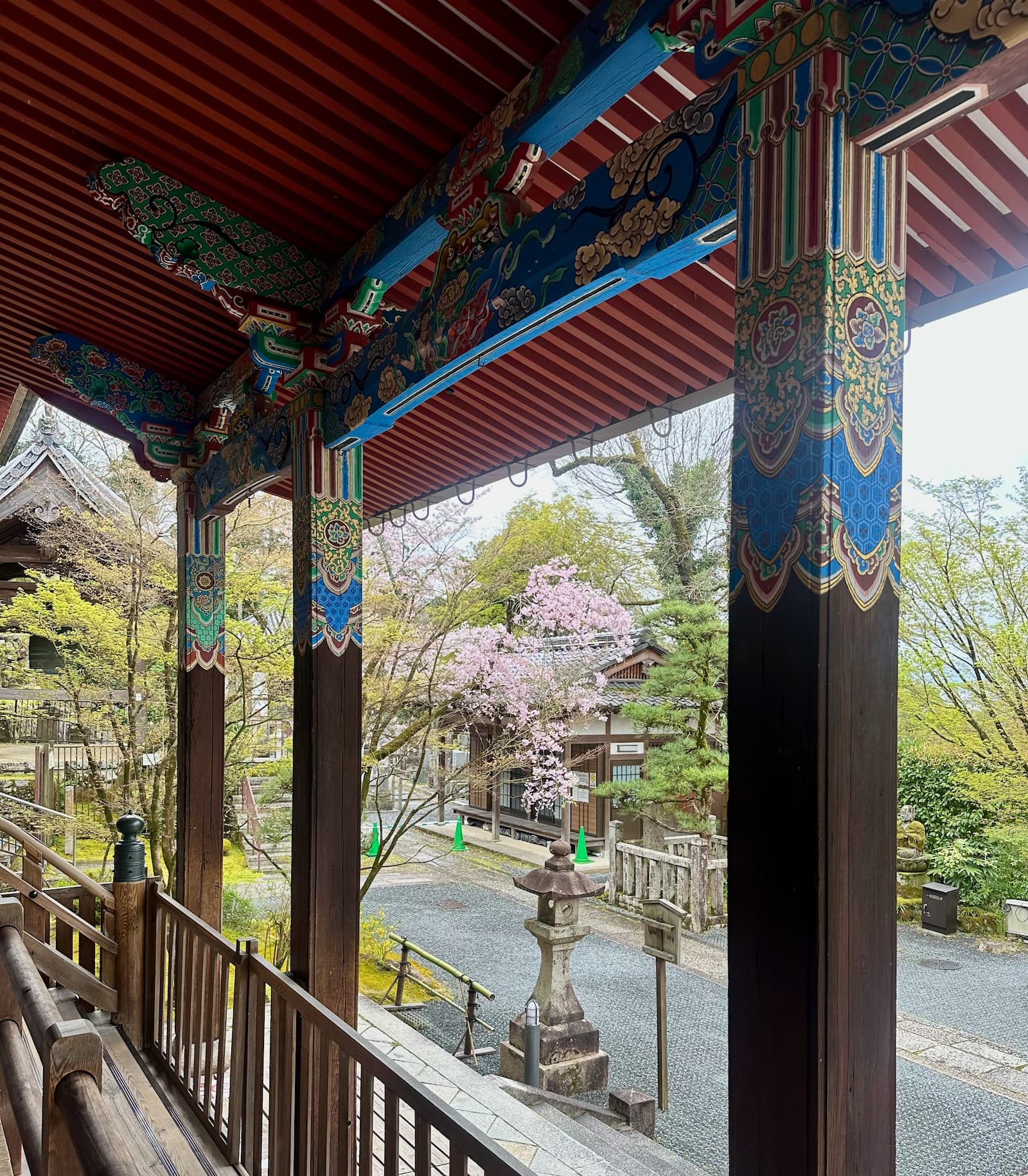 Eikando Temple[/caption]
Eikando Temple[/caption]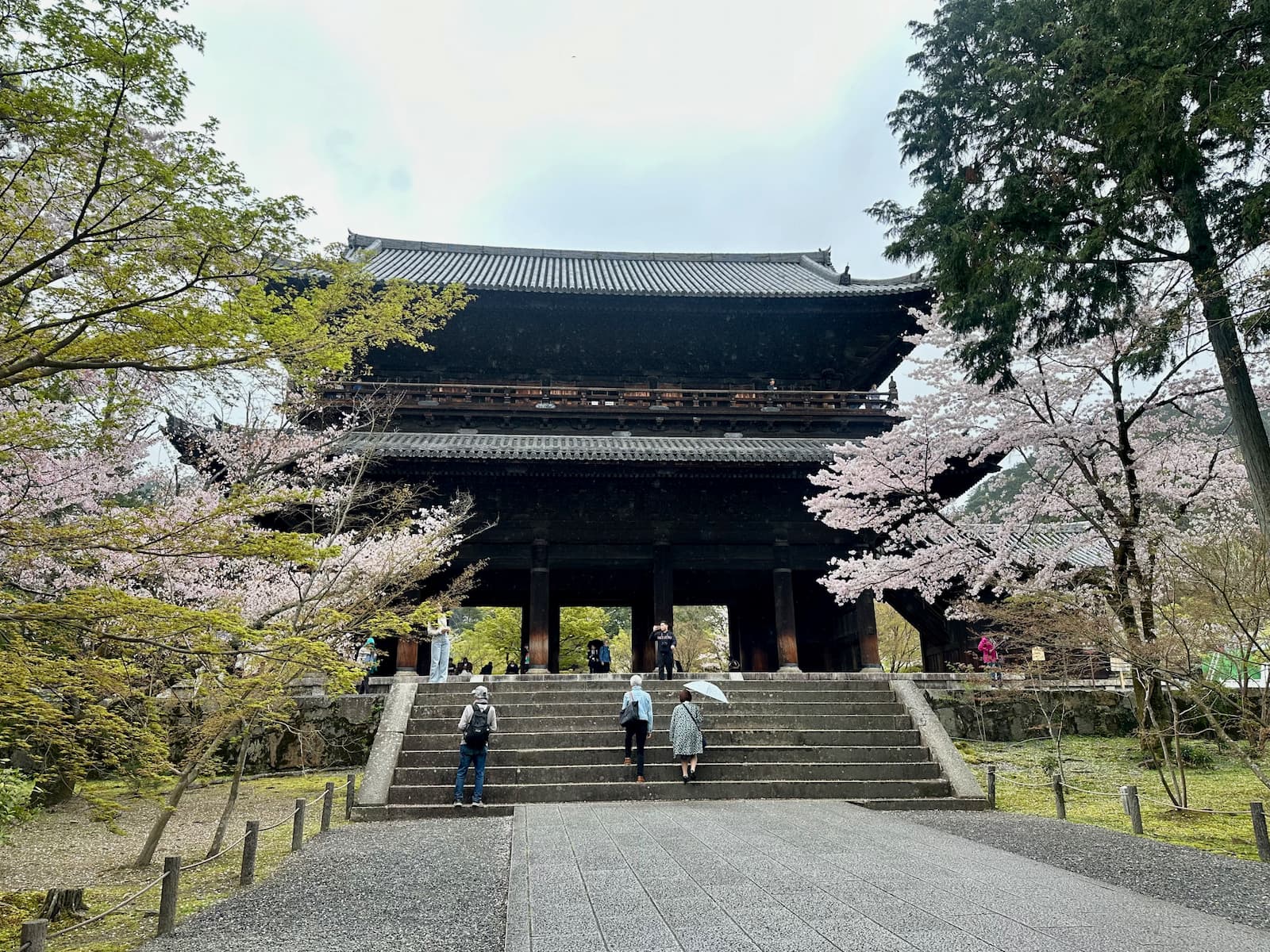
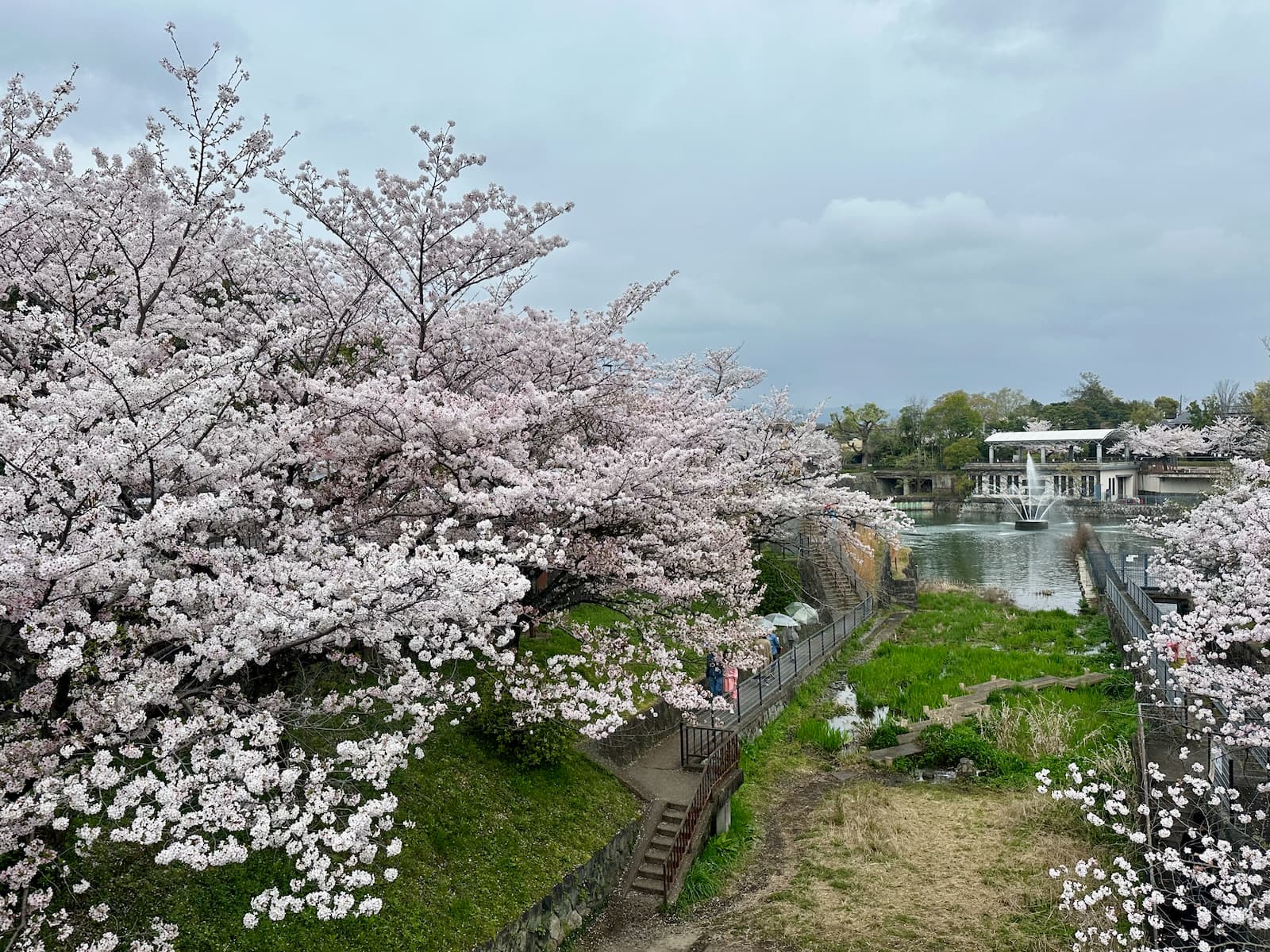
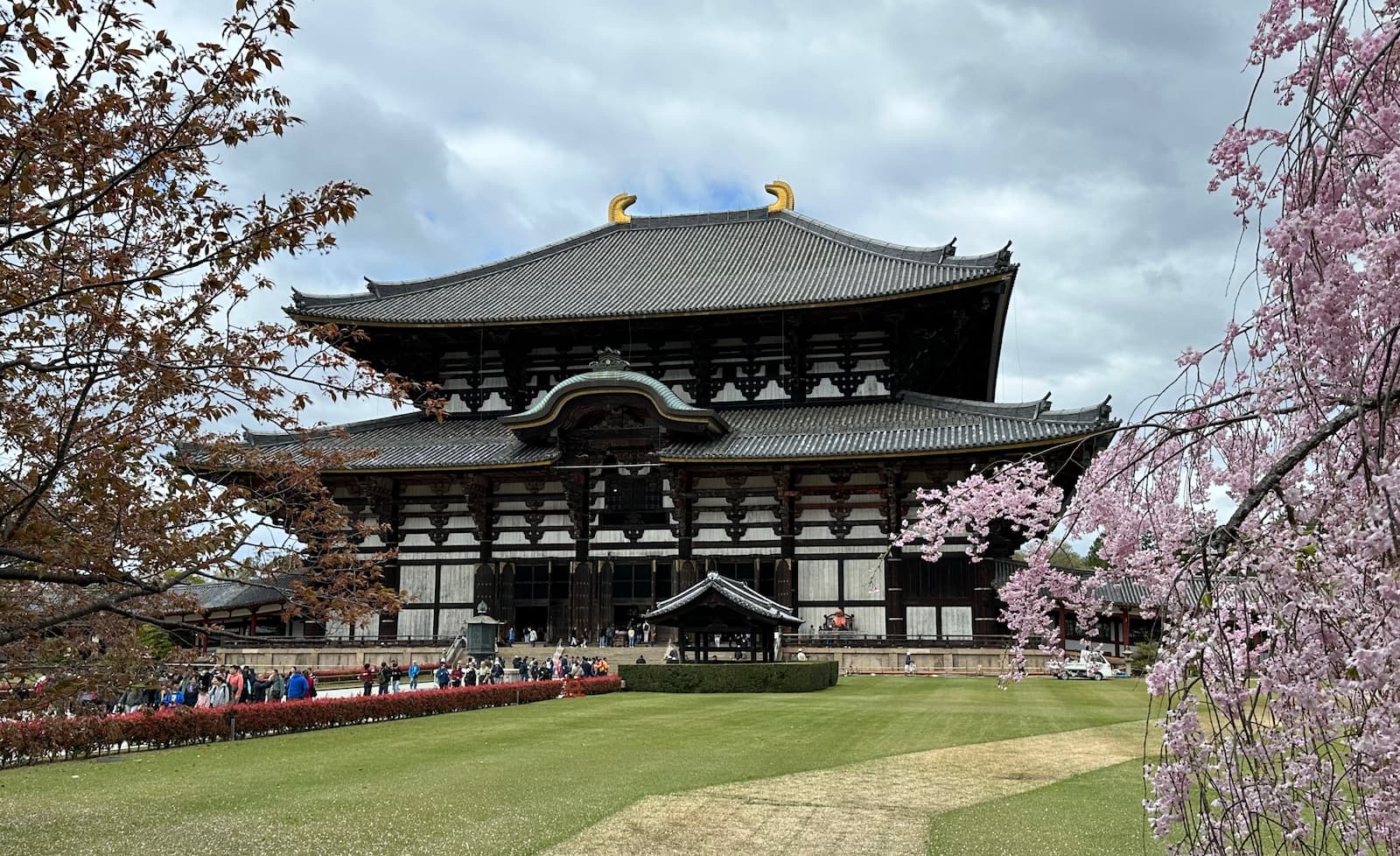
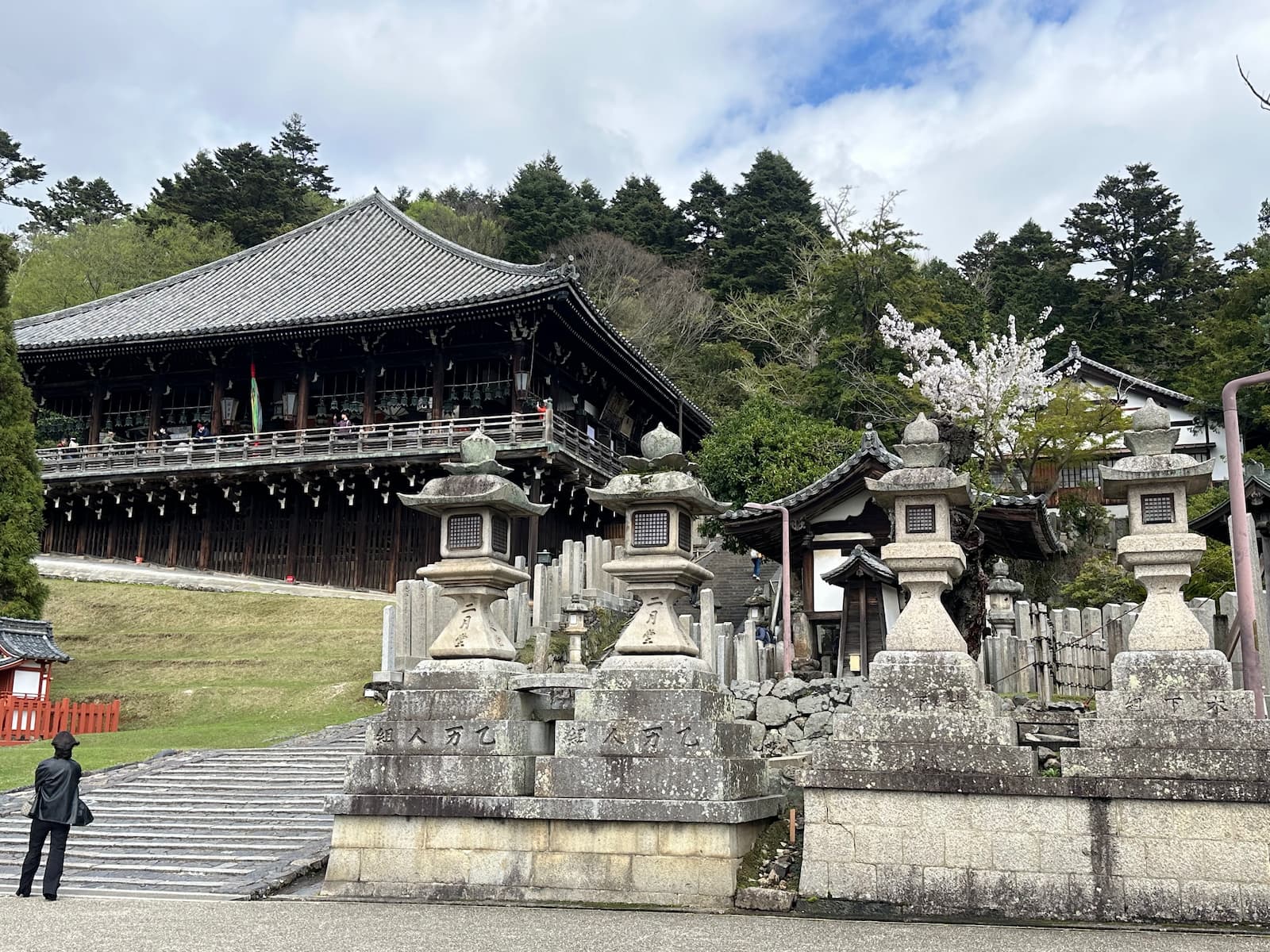
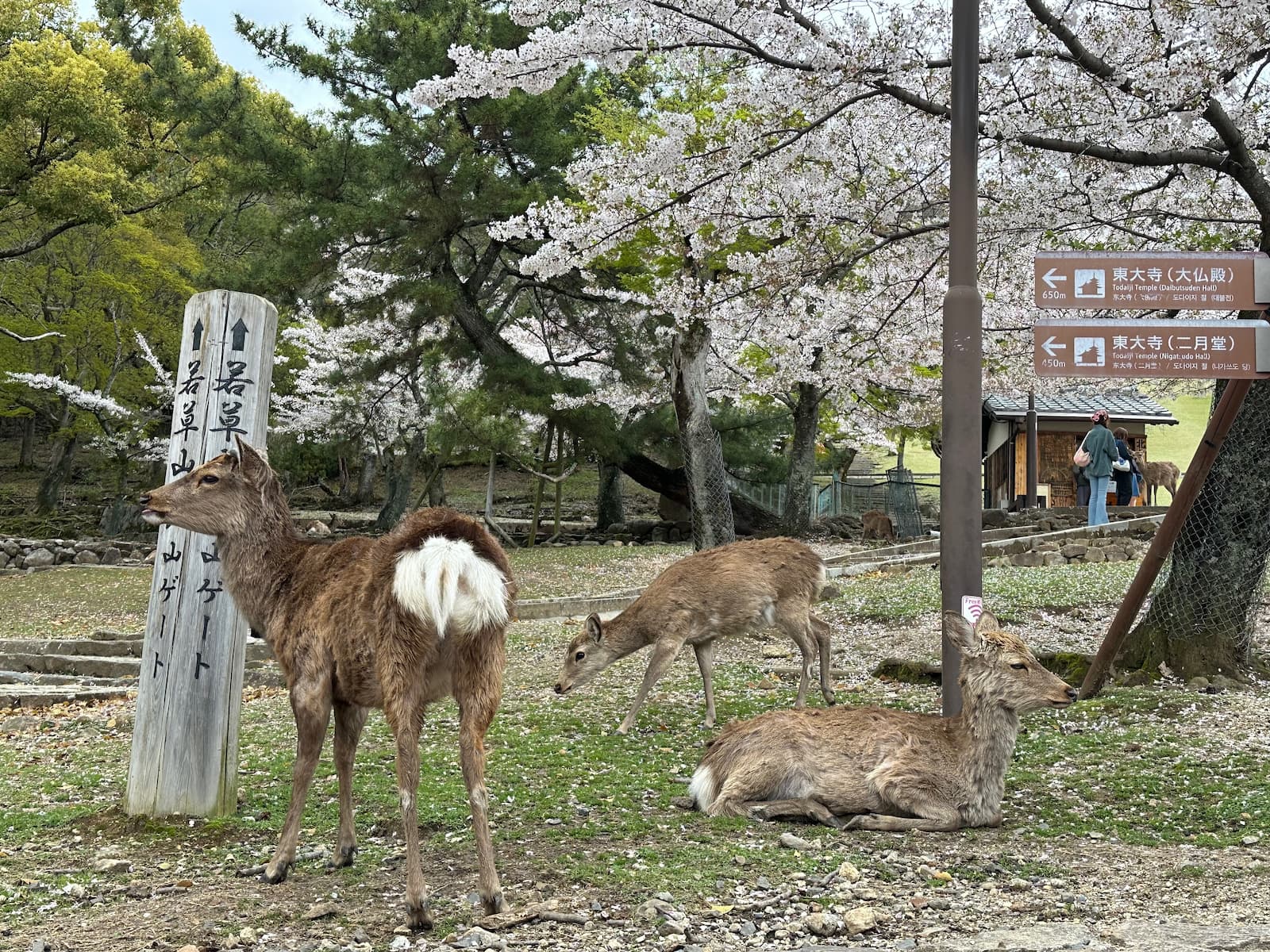
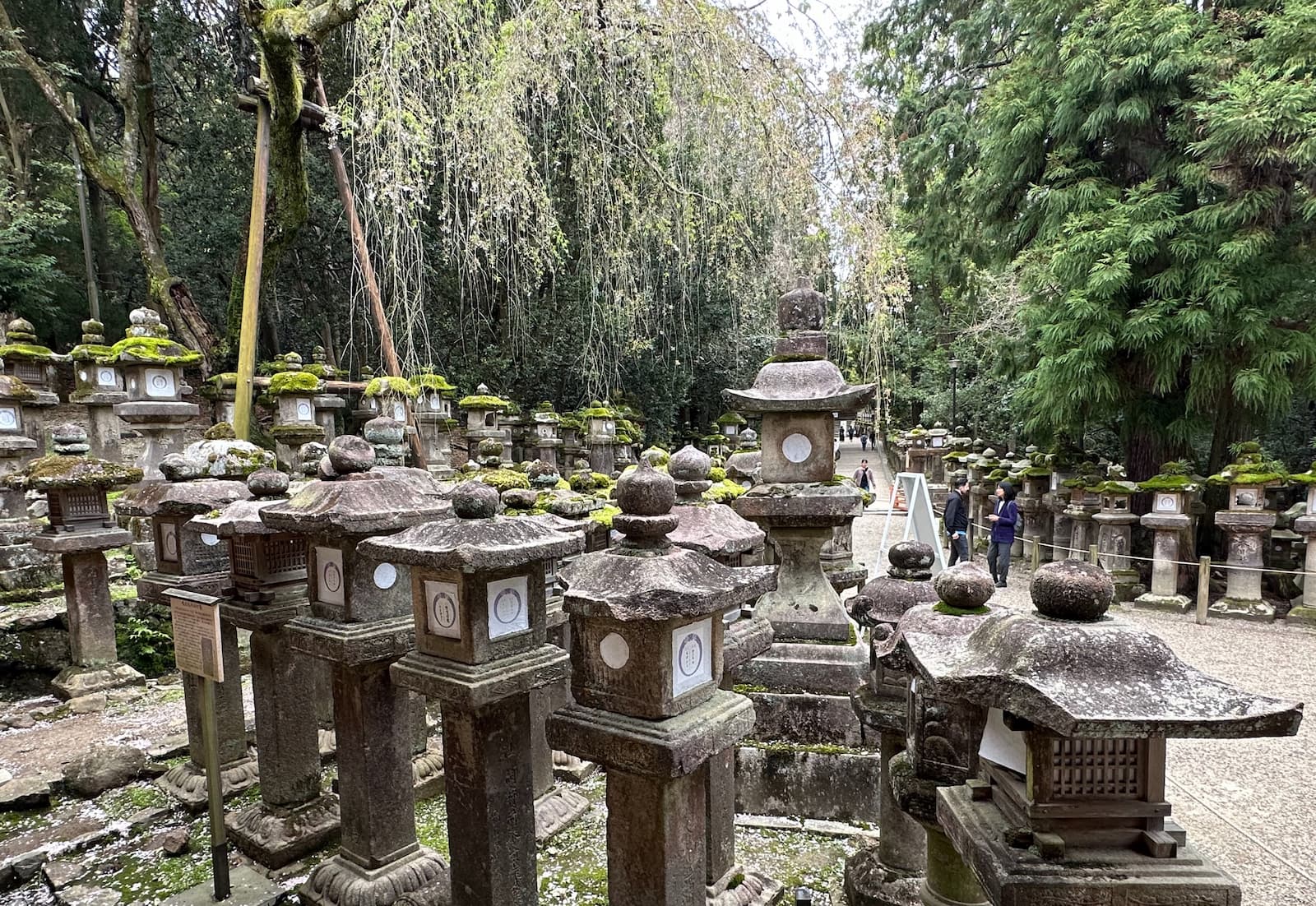
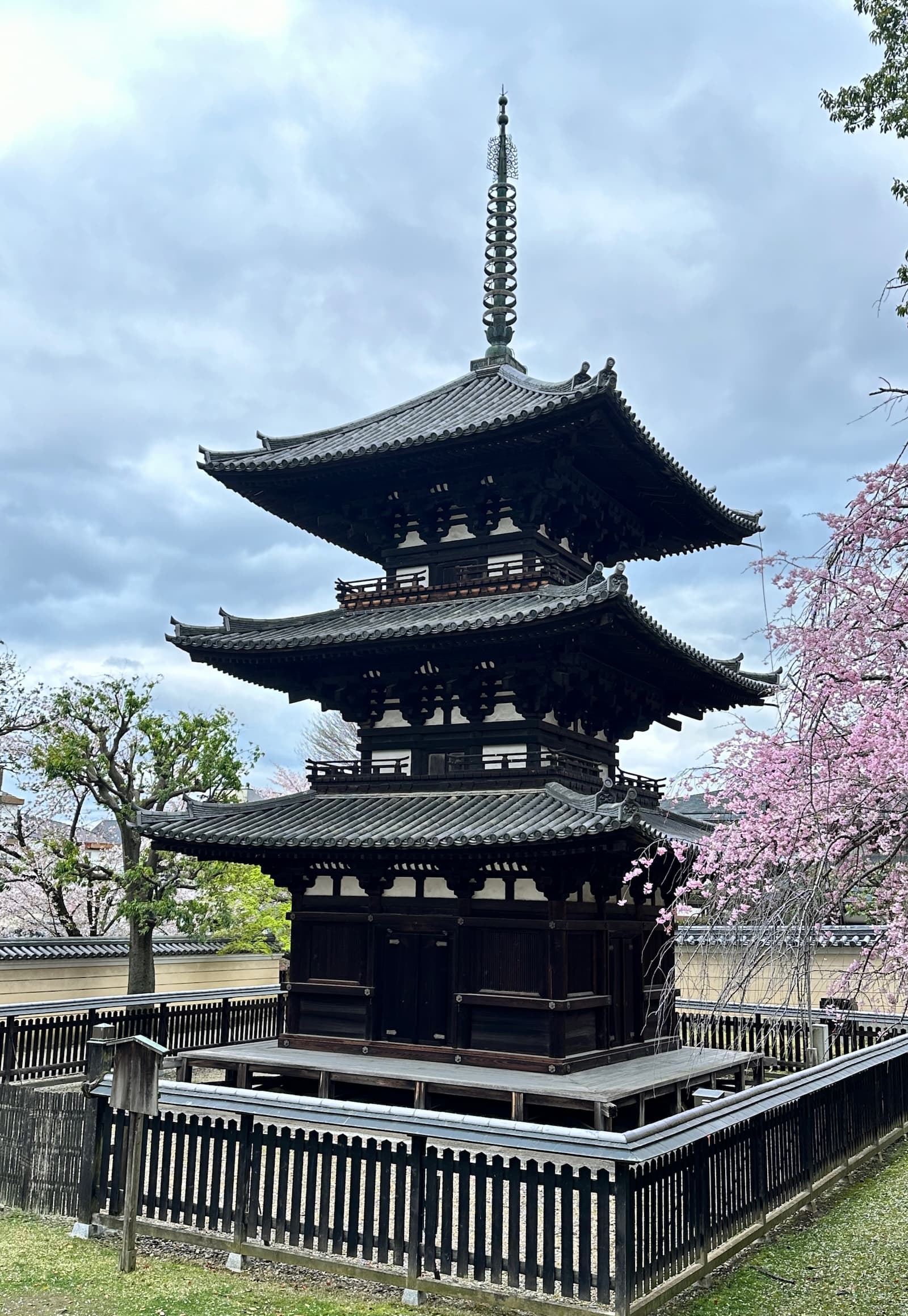
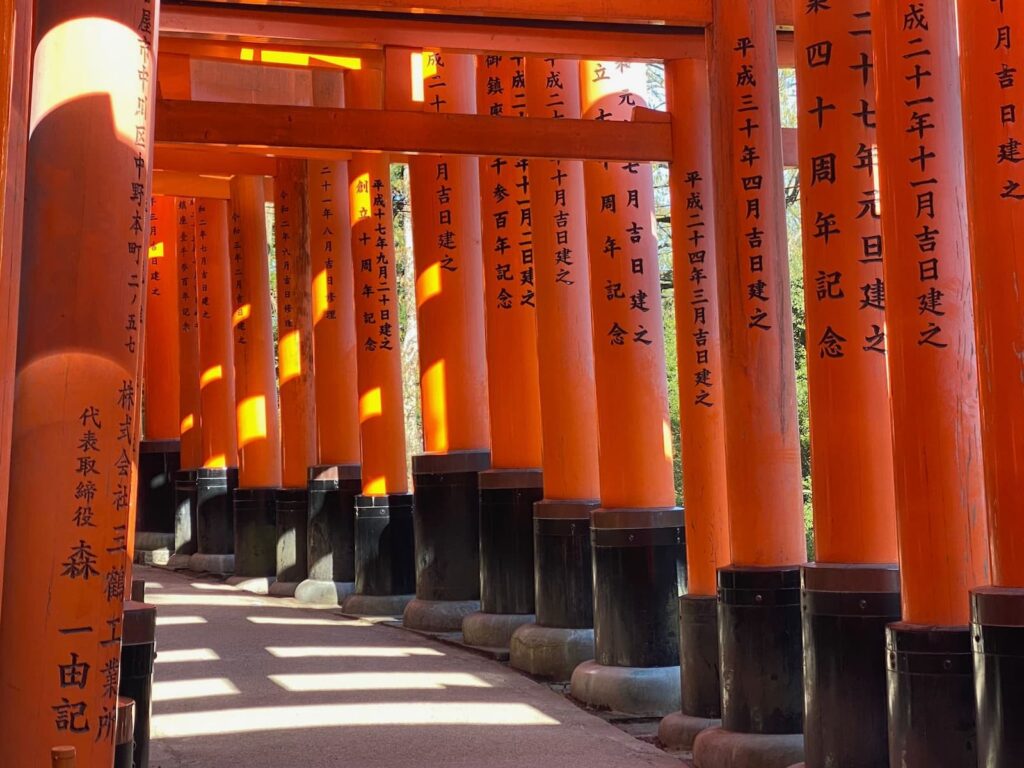
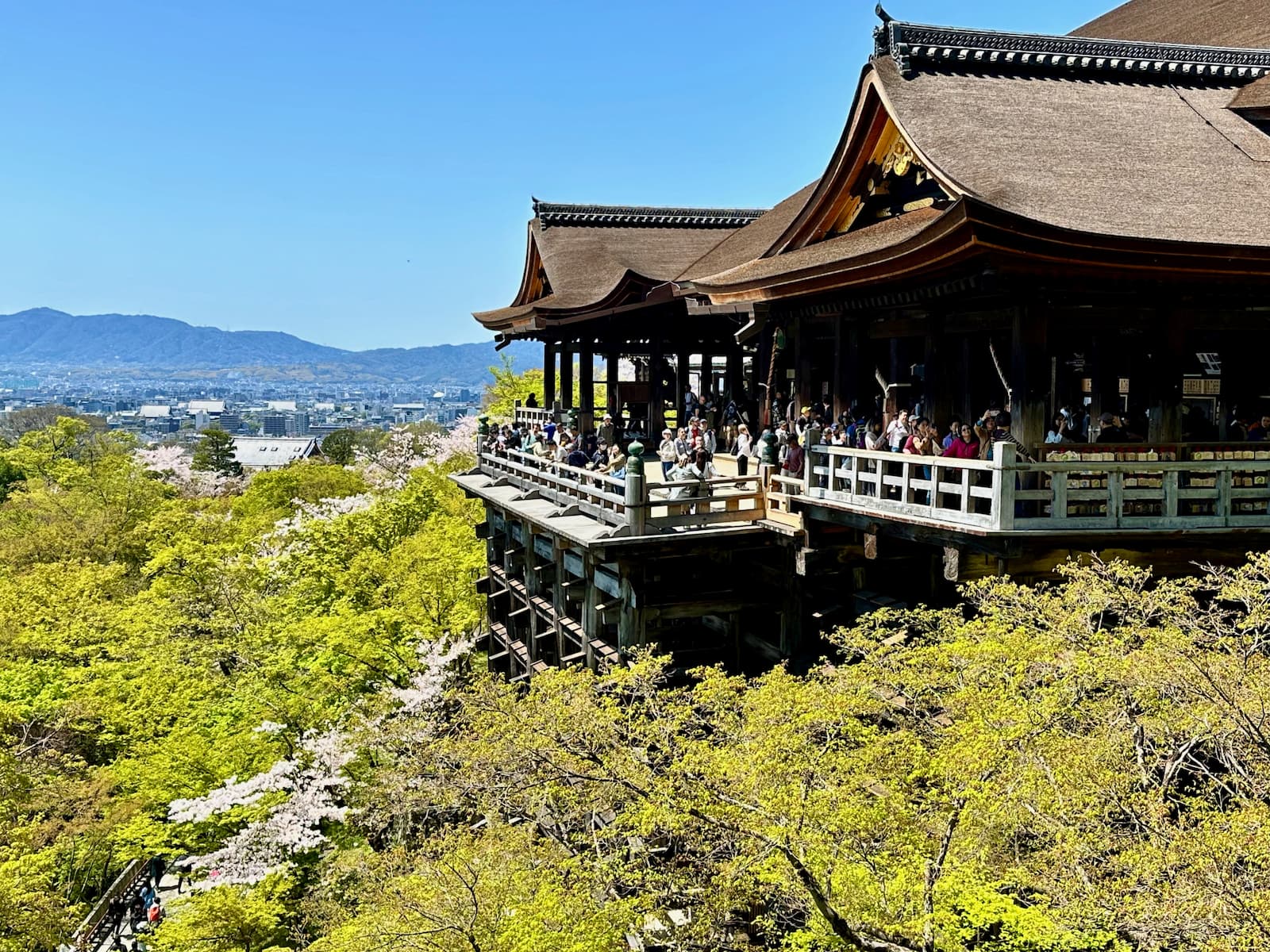
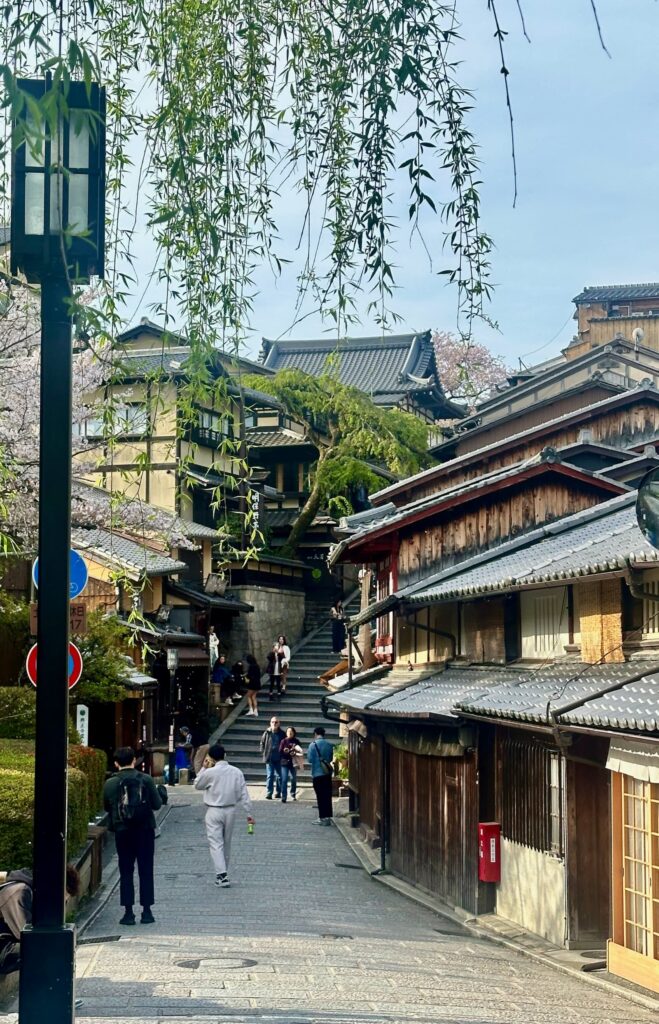
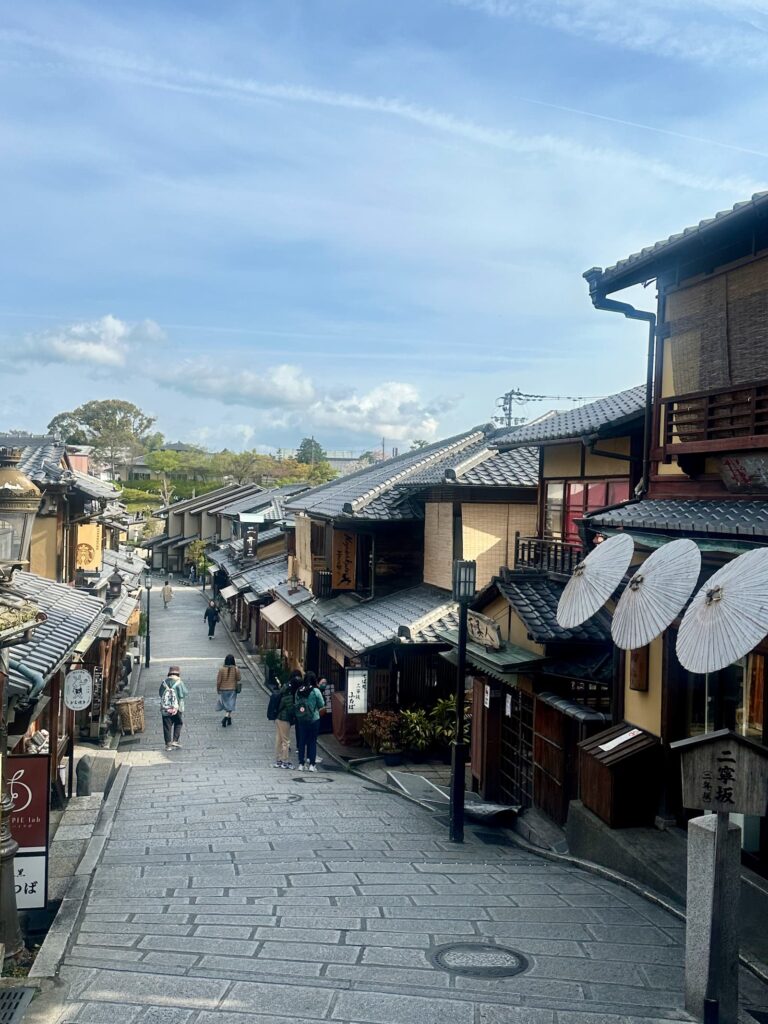
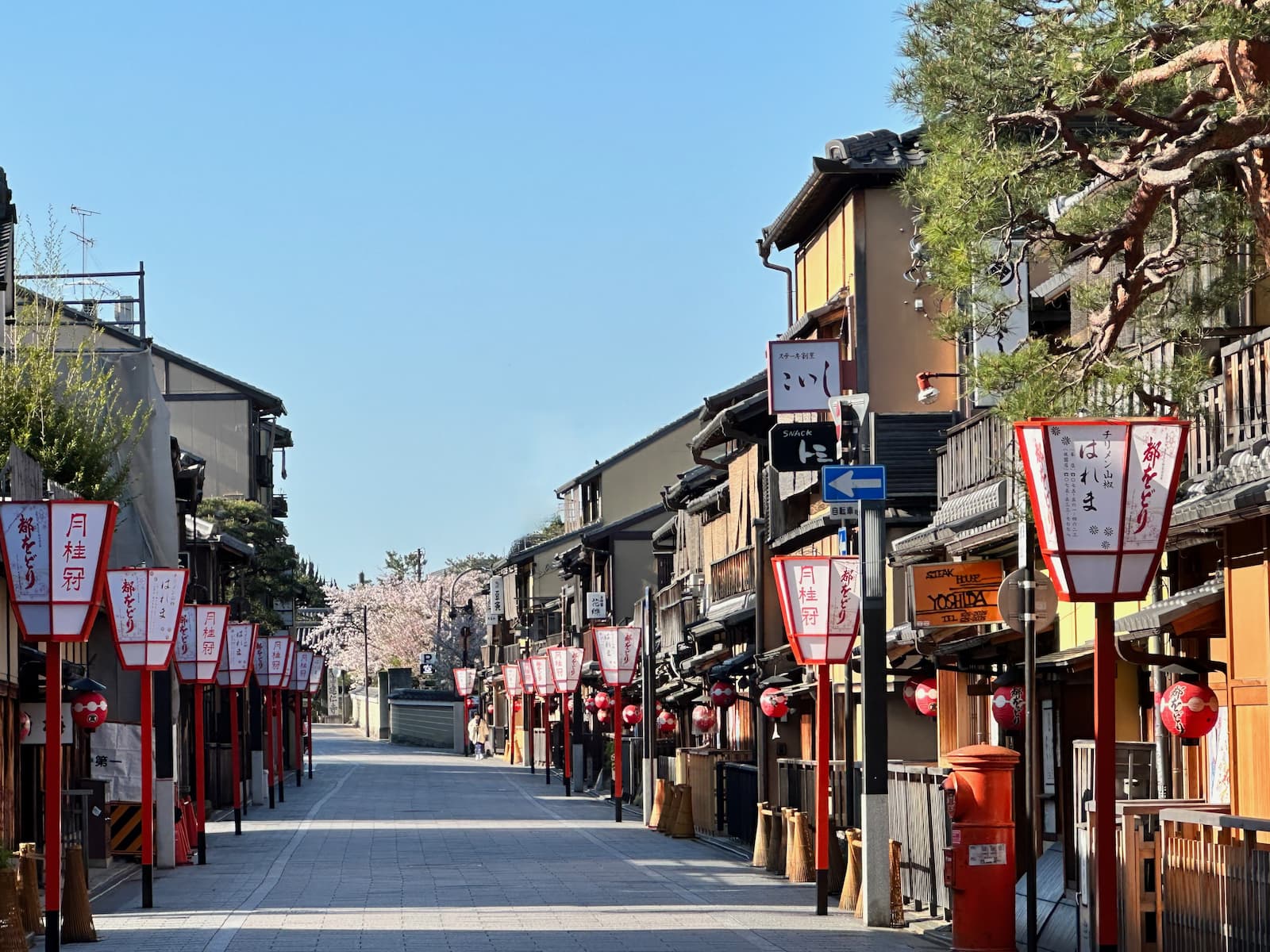
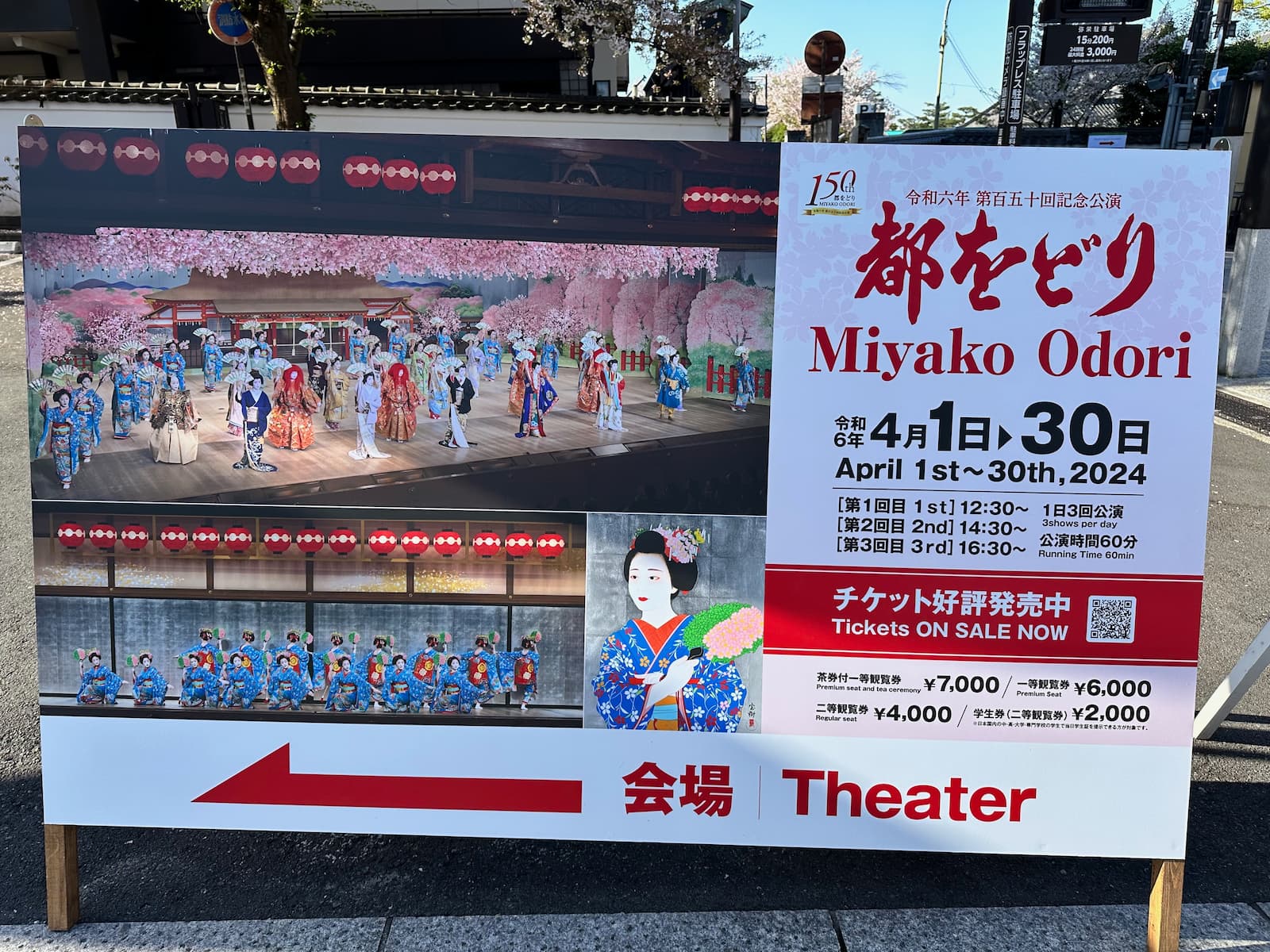
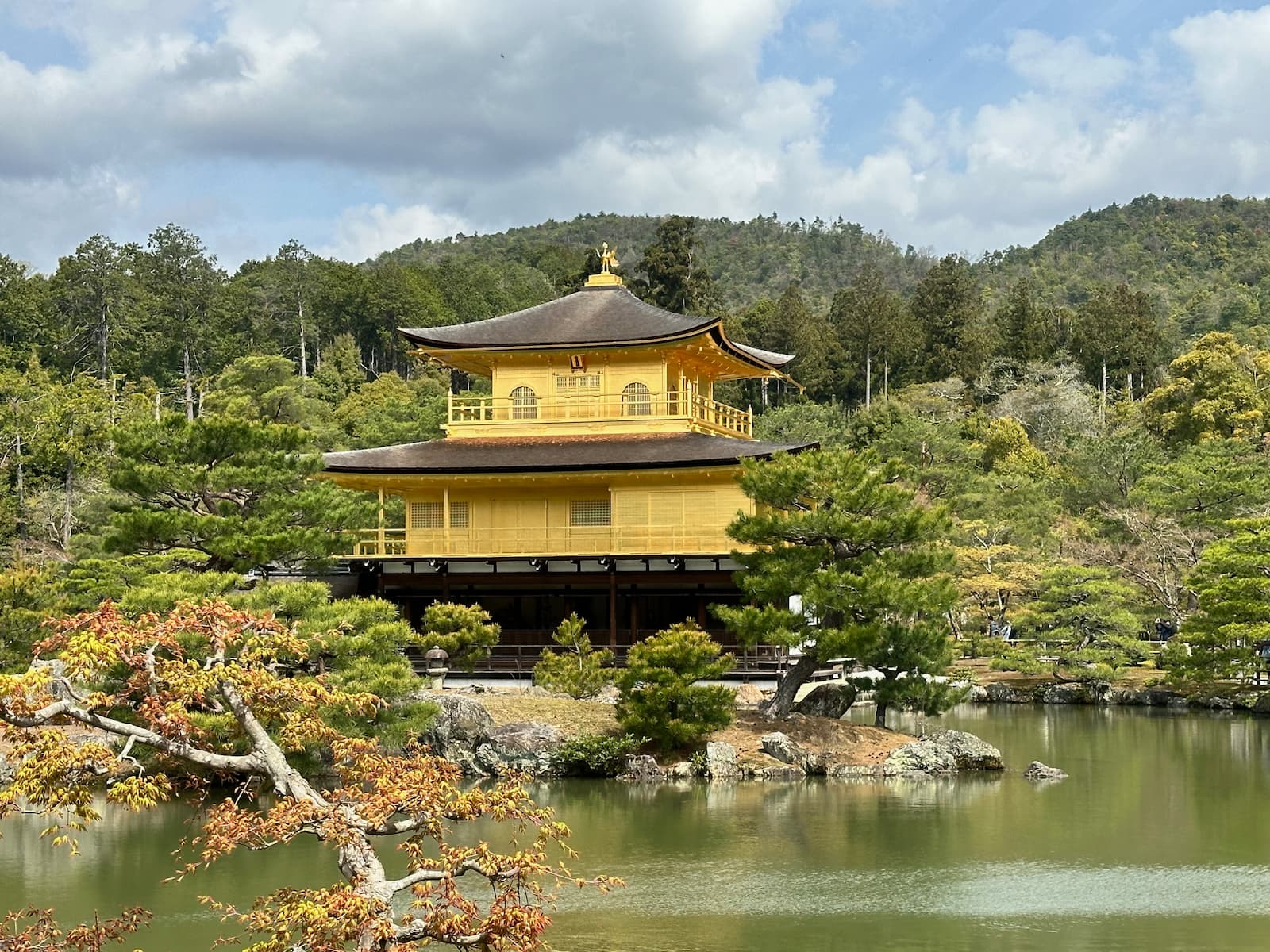
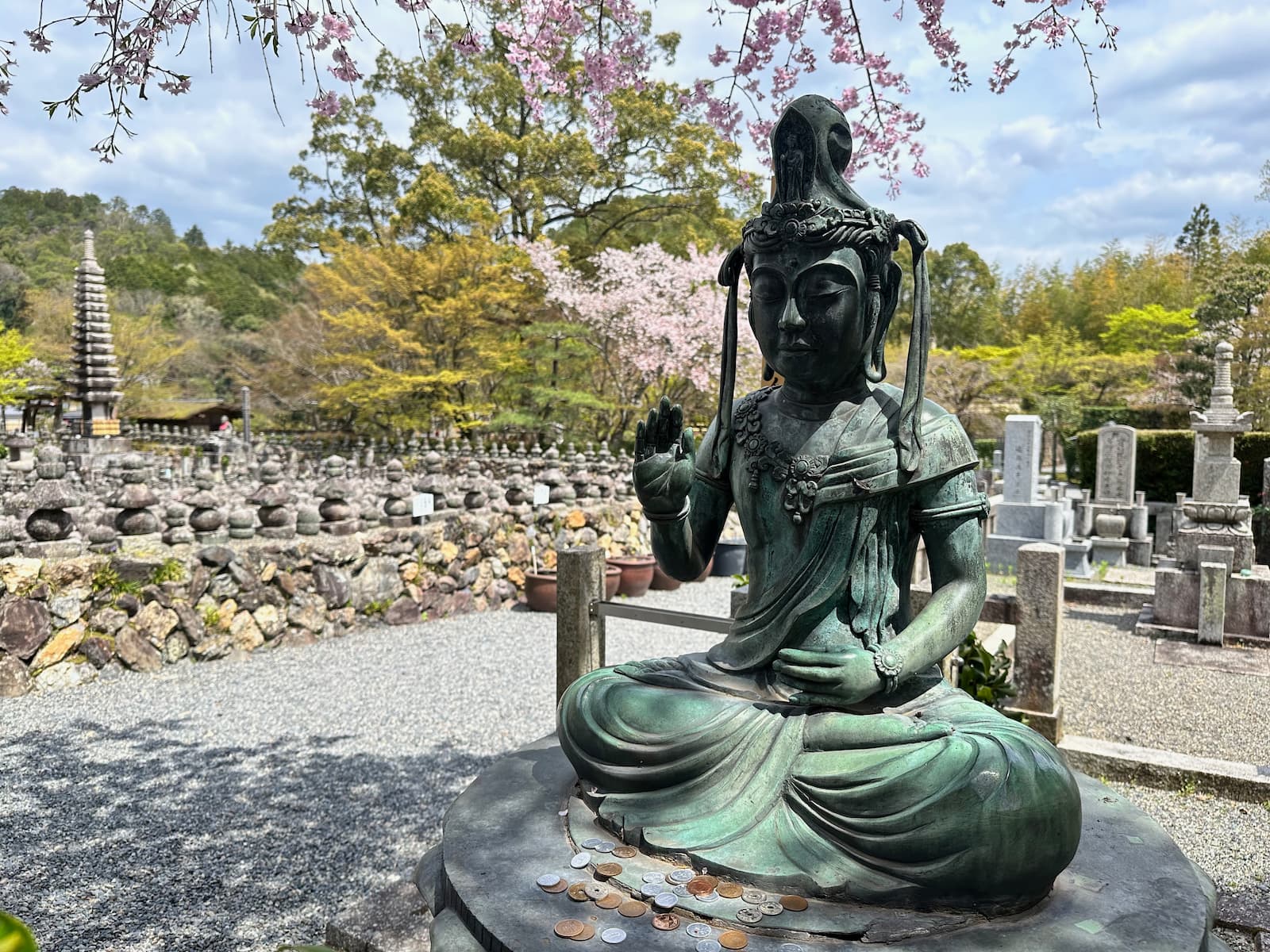 Adashino Nenbutsuji Temple, Arashiyama[/caption]
Adashino Nenbutsuji Temple, Arashiyama[/caption]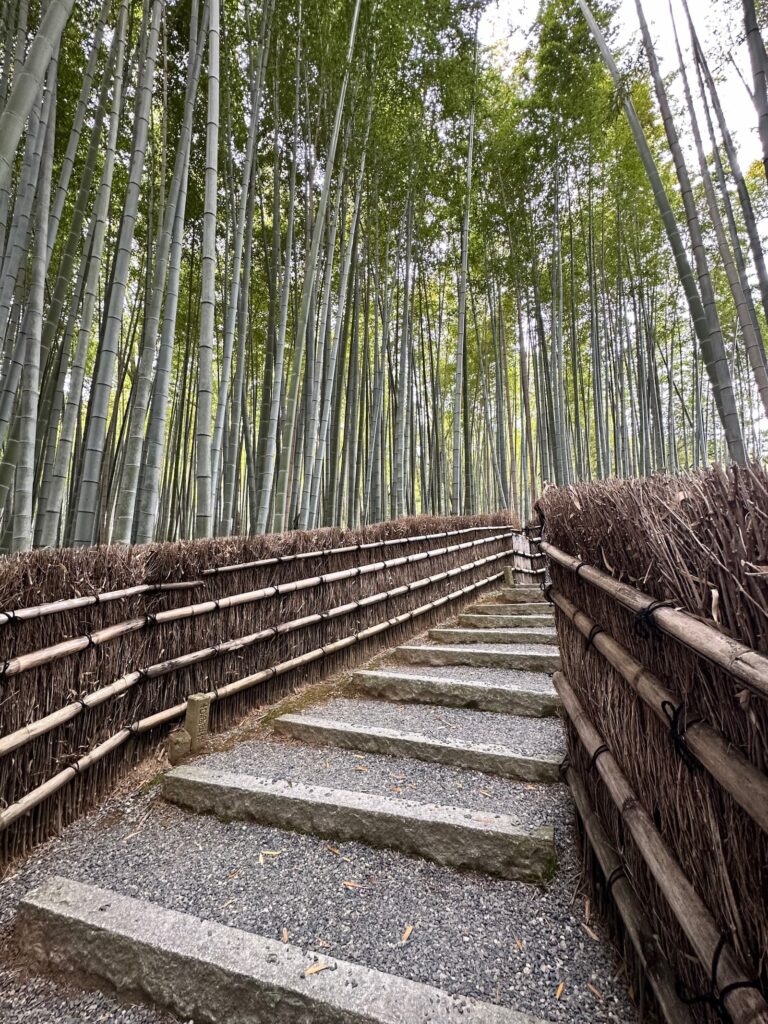
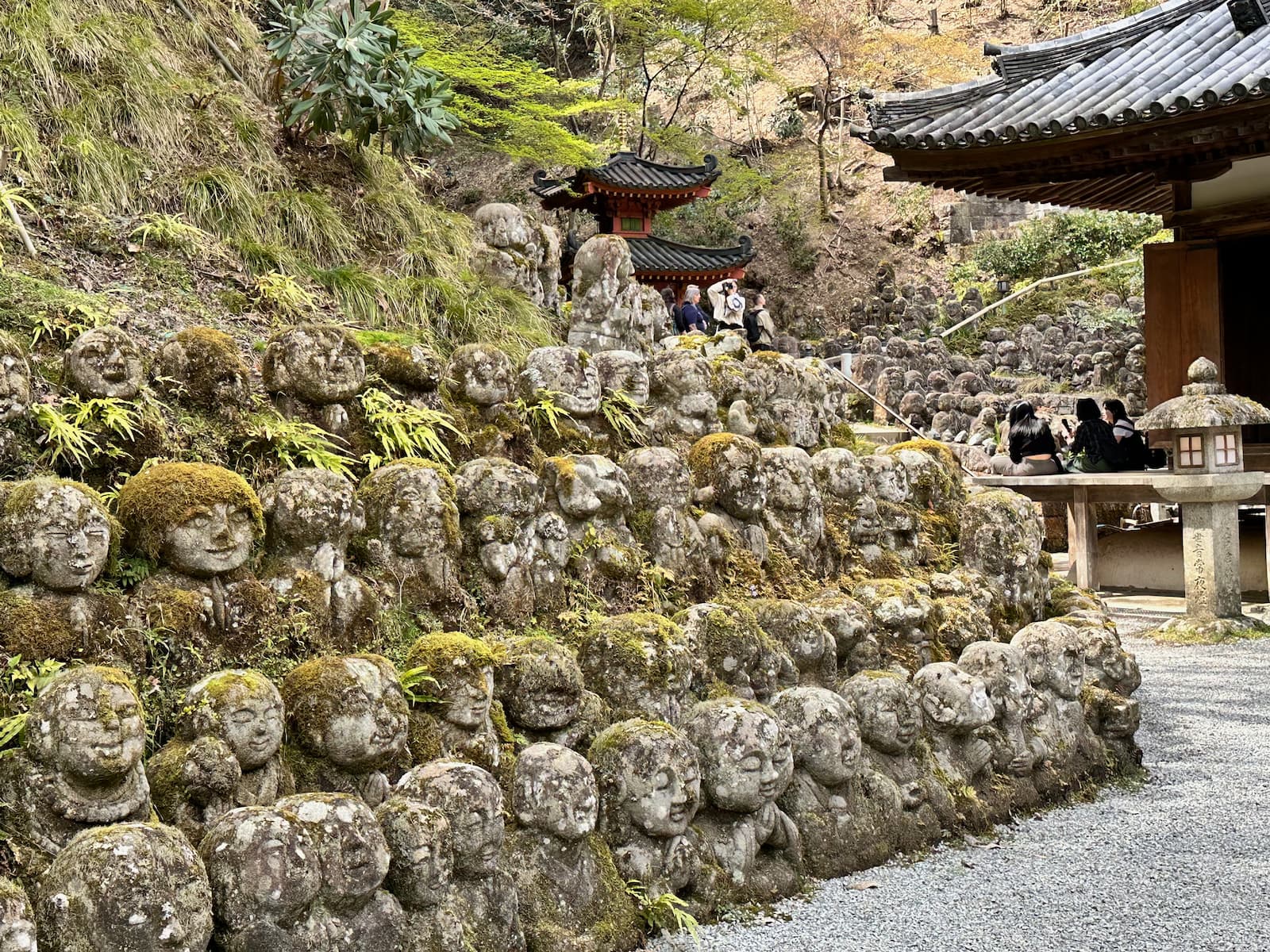
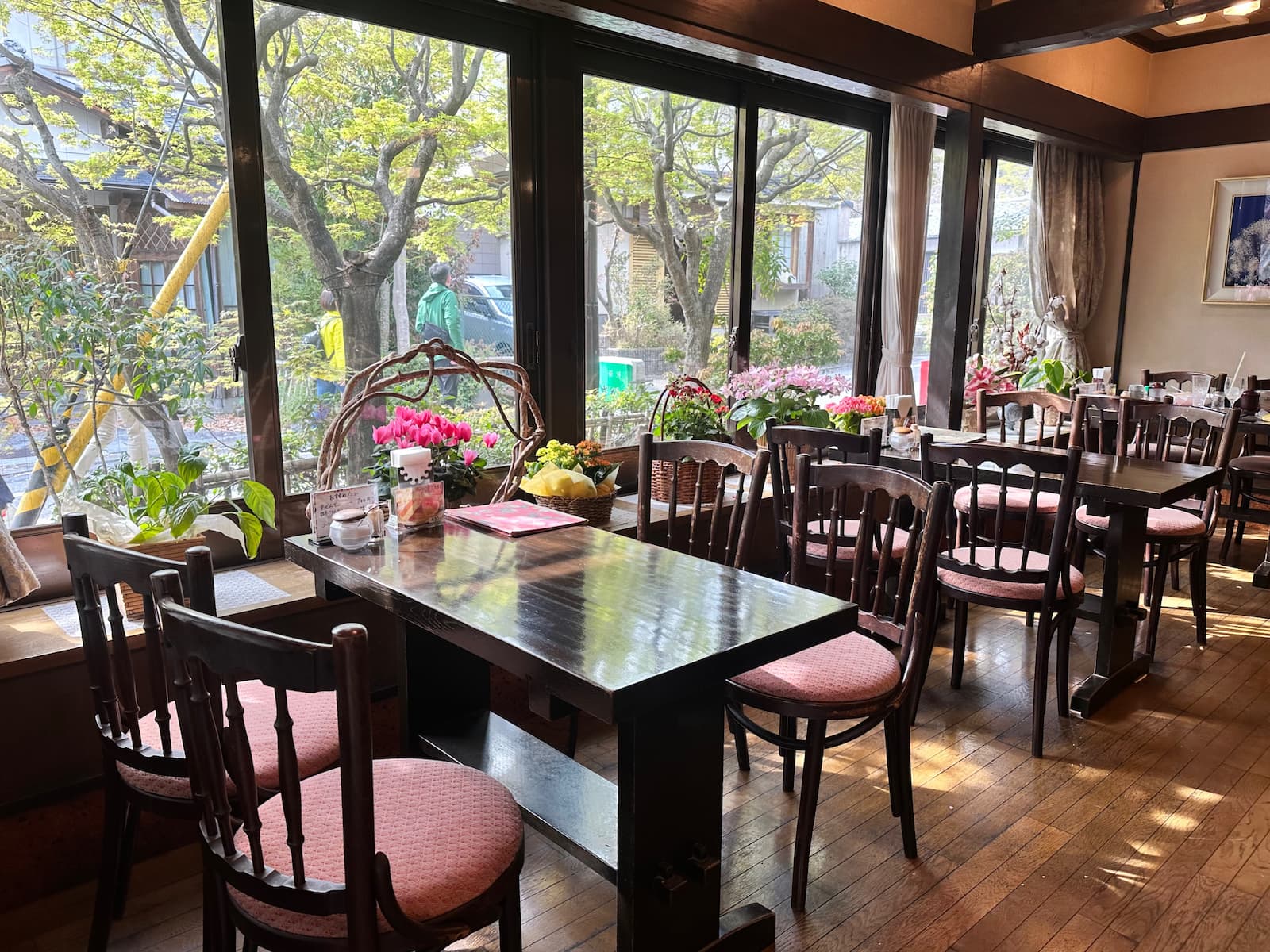
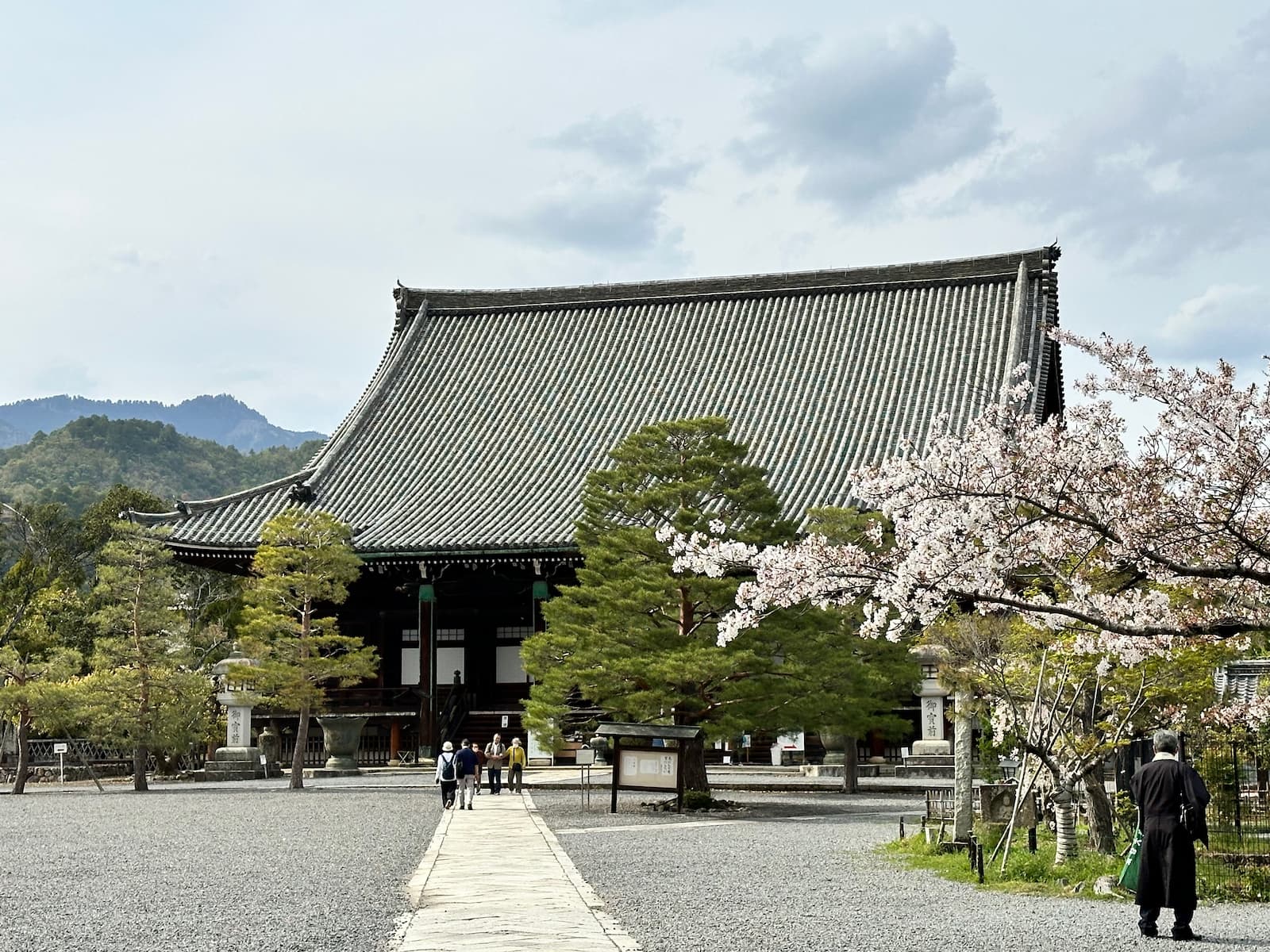 Seiryo-ji Temple, Arashiyama[/caption]
Seiryo-ji Temple, Arashiyama[/caption]